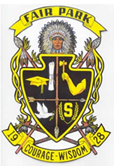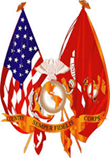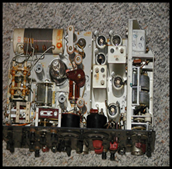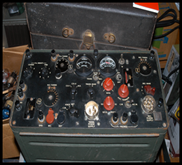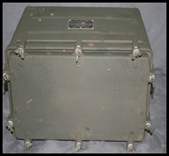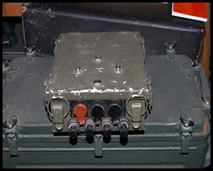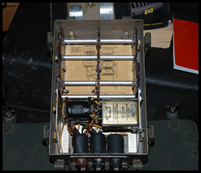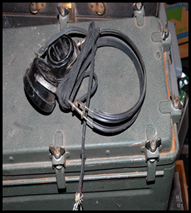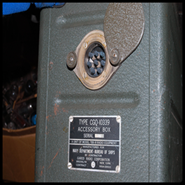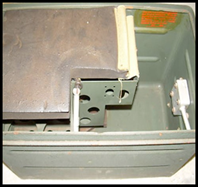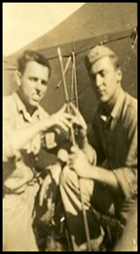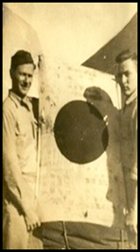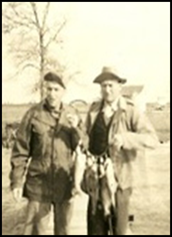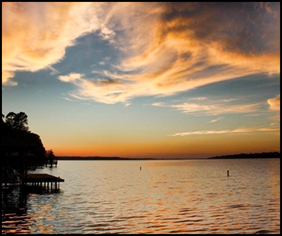| ELWIN B. HART |
|
|
|
|
|
|
|
|
|
|
|
|
|
|
|
|
|
|
|
|
|
| [This
report has three main parts: Elwin's
early years as an enlisted Marine, with a special focus on the Battle of
Tarawa; his ongoing career as a Marine officer through to his retirement from
the USMC; and his post-military commitments to near the end of 2013. Sources include a lengthy questionnaire,
several exchanges of emails and telephone calls, and, with Elwin's
permission, generous access to his memoirs - Did I Do
Enough? available through www.amazon.com.] |
|
|
|
|
|
|
|
|
|
|
|
|
|
|
|
|
|
|
|
|
|
|
|
|
|
|
|
|
|
|
|
|
| Ia |
|
|
|
|
|
|
|
|
|
|
| EARLY
YEARS - BOOT CAMP - SAMOA - GUADALCANAL – TARAWA |
|
|
|
|
|
|
|
|
|
|
|
|
|
|
|
|
|
|
|
|
|
| Originally
from Waldo, Arkansas, Elwin lived in Shreveport, Louisiana during junior high
and senior high school, graduating from Fair Park High School on 28 May
1941. His high school’s motto was “Courage and Wisdom.” Elwin has repeatedly proved that family
values learned as a young person and extended through high school were a
superb foundation for character-building values developed later in the U. S.
Marine Corps. |
|
|
|
|
|
|
|
|
|
|
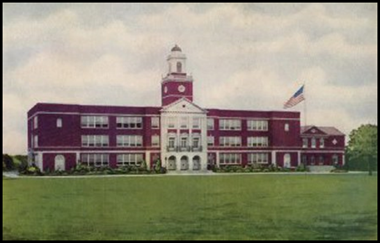
|
|
|
|
|
|
|
|
|
|
|
|
|
|
|
|
|
|
|
|
|
|
|
|
|
|
|
|
|
|
|
|
|
|
|
|
|
|
|
|
|
|
|
|
|
|
|
|
|
|
|
|
|
|
|
|
|
|
|
|
|
|
|
|
|
|
|
|
|
|
|
|
|
|
|
|
|
|
|
|
|
|
|
|
|
|
|
|
|
|
|
|
|
|
|
|
|
|
|
|
|
|
|
|
|
|
|
|
|
|
|
|
|
|
|
|
|
|
|
|
|
|
|
|
|
|
|
|
|
|
|
|
|
|
|
|
|
|
|
|
|
|
|
|
|
|
|
|
|
|
|
|
|
|
|
|
|
|
|
|
|
|
|
|
|
| Elwin
Hart’s alma mater, Fair Park High School in Shreveport, Louisiana |
|
|
|
|
|
|
|
|
|
|
|
|
|
|
|
|
|
|
|
|
|
|
|
|
|
|
|
|
|
|
|
|
|
|
|
|
|
|
|
|
|
|
|
|
|
|
|
|
|
|
|
|
|
|
|
|
|
|
|
|
|
|
|
|
|
|
|
|
|
|
|
|
|
|
|
|
|
|
|
|
|
|
|
|
|
|
|
|
|
|
|
|
|
|
|
|
|
|
|
|
|
|
|
|
|
|
|
|
|
|
|
|
|
|
|
|
|
|
|
|
|
|
|
|
|
|
|
|
|
|
|
|
| SOURCES
OF CHARACTER-BUILDING VALUES FOR A WELL-LIVED LIFE |
|
|
|
|
|
|
|
|
|
|
|
|
|
|
|
|
|
|
|
|
|
| Three
days after high school graduation, Elwin enlisted in the U.S. Marine Corps in
New Orleans. Prior to this point,
Elwin had held one job: “I had no experience in anything except a paper
route.” Elwin Hart, email to author, August 23, 2013. |
|
|
|
|
|
|
|
|
|
|
|
|
|
|
|
|
|
|
|
|
|
| At
that time, Elwin was 16 years old, and 5 days away from his 17th birthday. Elwin says that the normal minimum age for
enlisting in the Marine Corps has always been 17, with parental consent. “My
Dad just fibbed … (in any case, joining the Marine Corps) was probably the
luckiest thing that ever happened to me.” Foreshadowing events at Tarawa, one
very fortuitous biographical fact in Elwin’s story already appears in this
report, but more about that later! Elwin Hart,
email to author, June 30, 2013. |
|
|
|
|
|
|
|
|
|
|
|
|
|
|
|
|
|
|
|
|
|
| A
1,500-mile train ride to the West Coast brought Elwin to California for the
start of a twelve-week boot camp at Marine Corps Recruit Depot (MCRD) in San Diego. |
|
|
|
|
|
|
|
|
|
|
|
|
|
|
|
|
|
|
|
|
|
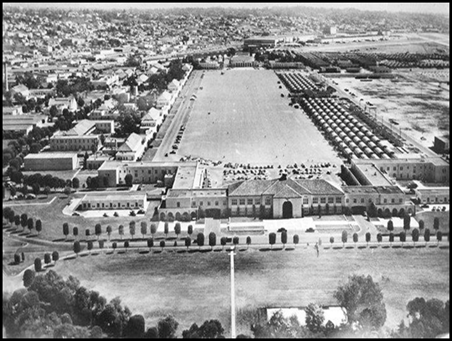
|
|
|
|
|
|
|
|
|
|
|
|
|
|
|
|
|
|
|
|
|
|
|
|
|
|
|
|
|
|
|
|
|
|
|
|
|
|
|
|
|
|
|
|
|
|
|
|
|
|
|
|
|
|
|
|
|
|
|
|
|
|
|
|
|
|
|
|
|
|
|
|
|
|
|
|
|
|
|
|
|
|
|
|
|
|
|
|
|
|
|
|
|
|
|
|
|
|
|
|
|
|
|
|
|
|
|
|
|
|
|
|
|
|
|
|
|
|
|
|
|
|
|
|
|
|
|
|
|
|
|
|
|
|
|
|
|
|
|
|
|
|
|
|
|
|
|
|
|
|
|
|
|
|
|
|
|
|
|
|
|
|
|
|
|
|
|
|
|
|
|
|
|
|
|
|
|
|
|
|
|
|
|
|
|
|
|
|
|
|
|
|
|
|
|
|
|
|
|
|
|
|
|
|
|
|
|
|
|
|
|
|
|
|
|
|
|
|
|
|
| Marine
Corps Recruiting Depot, San Diego, 1941 |
|
|
|
|
|
|
|
|
|
|
| http://www.grunt.com/corps/uploads/stories/quonsethuts.jpg |
|
|
|
|
|
|
|
|
|
|
|
|
|
|
|
|
|
|
|
|
|
| Upon
completion of boot camp, Elwin was sent to the twelve-week Radio Telegraph
Operators Course, also at MCRD San Diego.
He learned International Morse Code and was trained in the operation
of TBX radios and other radio equipment used in the Fleet Marine Force. Elwin Hart, email to
author, August 23, 2013. |
|
|
|
|
|
|
|
|
|
|
|
|
|
|
|
|
|
|
|
|
|
| Upon
completion of his Radio Telegraph Operators Course, Elwin was assigned to the
Second Battalion, 8th Marines (2/8) and lived in barracks at Camp Elliott until he
left for American Samoa on 6 January 1942.
He was, at this time, a private earning $21 per month, plus $5 per
month for shooting expert with a rifle. |
|
|
|
|
|
|
|
|
|
|
| Elwin
Hart, email to author, June 30, 2013. |
|
|
|
|
|
|
|
|
|
|
|
|
|
|
|
|
|
|
|
|
|
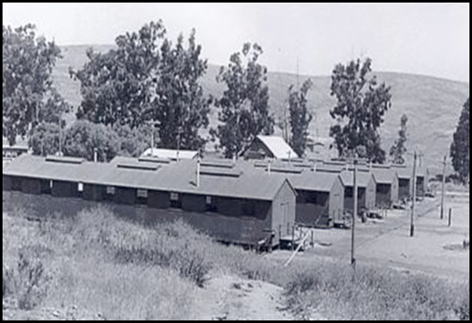
|
|
|
|
|
|
|
|
|
|
|
|
|
|
|
|
|
|
|
|
|
|
|
|
|
|
|
|
|
|
|
|
|
|
|
|
|
|
|
|
|
|
|
|
|
|
|
|
|
|
|
|
|
|
|
|
|
|
|
|
|
|
|
|
|
|
|
|
|
|
|
|
|
|
|
|
|
|
|
|
|
|
|
|
|
|
|
|
|
|
|
|
|
|
|
|
|
|
|
|
|
|
|
|
|
|
|
|
|
|
|
|
|
|
|
|
|
|
|
|
|
|
|
|
|
|
|
|
|
|
|
|
|
|
|
|
|
|
|
|
|
|
|
|
|
|
|
|
|
|
|
|
|
|
|
|
|
|
|
|
|
|
|
|
|
|
|
|
|
|
|
|
|
|
|
|
|
|
|
|
|
|
|
|
|
|
|
|
|
|
|
|
|
|
|
|
|
|
|
|
|
|
|
|
|
|
|
|
|
| Some of
the Camp Elliott barracks, fall 1941 |
|
|
|
|
|
|
|
|
|
|
| (USMC
photo) |
|
|
|
|
|
|
|
|
|
|
|
|
|
|
|
|
|
|
|
|
|
| Elwin
reports that he was in Long Beach, California when the Japanese attacked
Pearl Harbor on 7 December 1941, and announcements soon went out that all
Marines had to return to MCRD as soon as possible. Hitch-hiking with a buddy,
Elwin hustled back to MCRD San Diego. |
|
|
|
|
|
|
|
|
|
|
|
|
|
|
|
|
|
|
|
|
|
| Then,
one day short of one month after the attack on Pearl Harbor, 2/8 embarked on
6 January 1942, on the SS Matsonia from San Diego (in convoy with the SS Lurline and the SS Monterey, all owned by the Matson
Lines). As Elwin says, the Matsonia was bound for some
unknown destination way out in the Pacific, “but, for security reasons, we
weren’t told anything specific … we lived in staterooms and the dining room
still had 4-man tables with waiters.” |
|
|
|
|
|
|
|
|
|
|
| Richard
W. Johnston, Follow Me! (New
York: Random House, 1948), 14. |
|
|
|
|
|
|
|
|
|
|
|
|
|
|
|
|
|
|
|
|
|
| Matsonia
was the 1926 incarnation of a vessel by that name. It had originally been called the SS Malolo, but its name was changed
to SS Matsonia in
1937. She was requisitioned by the US
Navy on 21 November 1941 and served as a high-speed troop transport
throughout World War II. She was
returned to Matson Lines in 1946. In
1948, she was sold to a subsidiary of the Home Lines where she operated under
the name of SS Atlantic.
In 1955, she was transferred to another Home Lines subsidiary (the National
Hellenic American Line) operating under the name of Queen Frederica until late 1965
when she was sold to Chandris Lines (still called the Queen Frederica) under whose
ownership she remained until mid-1977 and was sold for scrapping which
finished in 1978 – after fifty years of service and over thirty-six years
after Elwin’s trip to American Samoa. |
|
|
|
|
|
|
|
|
|
|
|
|
|
|
|
|
|
|
|
|
|
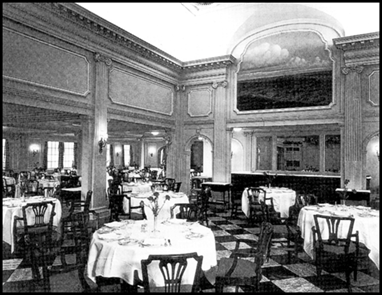
|
|
|
|
|
|
|
|
|
|
|
|
|
|
|
|
|
|
|
|
|
|
|
|
|
|
|
|
|
|
|
|
|
|
|
|
|
|
|
|
|
|
|
|
|
|
|
|
|
|
|
|
|
|
|
|
|
|
|
|
|
|
|
|
|
|
|
|
|
|
|
|
|
|
|
|
|
|
|
|
|
|
|
|
|
|
|
|
|
|
|
|
|
|
|
|
|
|
|
|
|
|
|
|
|
|
|
|
|
|
|
|
|
|
|
|
|
|
|
|
|
|
|
|
|
|
|
|
|
|
|
|
|
|
|
|
|
|
|
|
|
|
|
|
|
|
|
|
|
|
|
|
|
|
|
|
|
|
|
|
|
|
|
|
|
|
|
|
|
|
|
|
|
|
|
|
|
|
|
|
|
|
|
|
|
|
|
| Matsonia’s Main Restaurant with 4-man tables with linen tablecloths |
|
|
|
|
|
|
|
|
|
|
| http://www.ssmaritime.com/malolo-matsonia.htm |
|
|
|
|
|
|
|
|
|
|
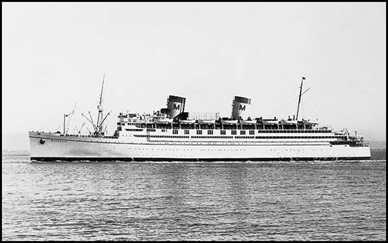
|
|
|
|
|
|
|
|
|
|
|
|
|
|
|
|
|
|
|
|
|
|
|
|
|
|
|
|
|
|
|
|
|
|
|
|
|
|
|
|
|
|
|
|
|
|
|
|
|
|
|
|
|
|
|
|
|
|
|
|
|
|
|
|
|
|
|
|
|
|
|
|
|
|
|
|
|
|
|
|
|
|
|
|
|
|
|
|
|
|
|
|
|
|
|
|
|
|
|
|
|
|
|
|
|
|
|
|
|
|
|
|
|
|
|
|
|
|
|
|
|
|
|
|
|
|
|
|
|
|
|
|
|
|
|
|
|
|
|
|
|
|
|
|
|
|
|
|
|
|
|
|
|
|
|
|
|
|
|
|
|
|
|
|
|
| SS Matsonia – as Elwin Hart knew her
for his January 1942 trip to American Samoa |
|
|
|
|
|
|
|
|
|
|
| Length:
582’ Width: 83’ Service Speed: 21 knots |
|
|
|
|
|
|
|
|
|
|
| http://www.ssmaritime.com/malolo-matsonia.htm |
|
|
|
|
|
|
|
|
|
|
|
|
|
|
|
|
|
|
|
|
|
| Initially,
on departing San Diego, Elwin admits to some relief knowing that their
destination was not a combat zone.
After a little over two weeks of high-speed, zig-zag travel on a
southwest heading for about 4,800 miles, Elwin and 2/8 arrived at Pago Pago
(often pronounced “Pango-Pango”) on Tutuila Island, the largest and most
populous island of American Samoa.
USNS Pago Pago had been shelled by a Japanese submarine less than 13
days before Elwin’s arrival! Thus
began Elwin’s first overseas experience in World War II. |
|
|
|
|
|
|
|
|
|
|
| http://www.history.navy.mil/faqs/faq81-10.htm |
|
|
|
|
|
|
|
|
|
|
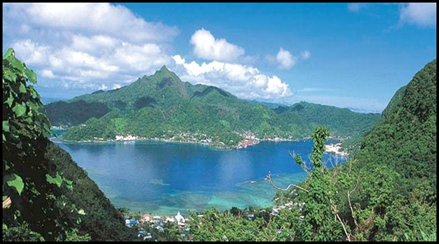
|
|
|
|
|
|
|
|
|
|
|
|
|
|
|
|
|
|
|
|
|
|
|
|
|
|
|
|
|
|
|
|
|
|
|
|
|
|
|
|
|
|
|
|
|
|
|
|
|
|
|
|
|
|
|
|
|
|
|
|
|
|
|
|
|
|
|
|
|
|
|
|
|
|
|
|
|
|
|
|
|
|
|
|
|
|
|
|
|
|
|
|
|
|
|
|
|
|
|
|
|
|
|
|
|
|
|
|
|
|
|
|
|
|
|
|
|
|
|
|
|
|
|
|
|
|
|
|
|
|
|
|
|
|
|
|
|
|
|
|
|
|
|
|
|
|
|
|
|
|
|
|
|
|
|
|
|
|
|
|
|
|
|
|
|
| Pago
Pago Harbor, Tutuila Island, American Samoa |
|
|
|
|
|
|
|
|
|
|
| http://www.janeresture.com/samoa_history/ |
|
|
|
|
|
|
|
|
|
|
|
|
|
|
|
|
|
|
|
|
|
| Thus
began a ten-month deployment in American Samoa where Elwin was part of a
50-man Communication Platoon in Headquarters Company of his 2nd Battalion, 8th Marines. During this stay, he was involved with
manning an observation post; operating a telephone switchboard; producing the
daily publication of the battalion’s newspaper; and working with the
battalion’s Intelligence Section by providing emergency radio capability in a
precautionary backup role in case their landline failed. In March 1942, Elwin was promoted to
private first class, and in August 1942, he was promoted to corporal. |
|
|
|
|
|
|
|
|
|
|
|
|
|
|
|
|
|
|
|
|
|
| A
broader narration of these events comes from a first edition copy of Richard
W. Johnston’s
FOLLOW ME! The Story of the Second Marine Division in World War II. Immediately
following the title page, this source has three separate one-page statements
by James Forrestal (Secretary of the Navy); Fleet Admiral Chester W. Nimitz
(Commander in Chief, Pacific Ocean Areas); and Lieutenant General Alexander
A. Vandegrift, (18th Commandant of the Marine Corps). Collectively, these three statements serve
as the Department of the Navy’s and the Marine Corps’ official sanction of
Johnston’s work. |
|
|
|
|
|
|
|
|
|
|
|
|
|
|
|
|
|
|
|
|
|
| “The
Japanese attack on Pearl Harbor produced the immediate fear that the enemy
might attempt a lightning invasion of the Pacific Coast … |
|
|
|
|
|
|
|
|
|
|
|
|
|
|
|
|
|
|
|
|
|
| In
the latter part of December (1941), the word came. The Eighth Regiment (Elwin Hart’s
regiment), under Colonel R. H. Jeschke, would have the frightening honor of
sailing out into the Pacific to oppose the might of the Japanese empire. With Wake secured, the Japs were stirring
in the mandated Marshall Islands, and their ships were nosing around the
British-owned Gilberts, only 2,000 miles from Hawaii. Ahead, in the same direction, lay the
Ellice Islands, Samoa, the Phoenix group – and the Australian-American air
and surface lifeline that Washington, London and Melbourne knew must be kept
open if Japan were to be contained.
Few of the Marines at Camp Elliott, and few Americans, for that
matter, knew one Pacific island from another in those days. But the Japanese had made a careful study
of Pacific geography, and so had Allied strategists. The Japs had to be
stopped short of Samoa. It was up to
the Marines to stop them. |
|
|
|
|
|
|
|
|
|
|
| For
this first wartime American expeditionary force, the Marine Corps
re-established the Second Marine Brigade, which originally had given birth to
the Second Division. Besides
reclaiming the Eighth Regiment, the Brigade took the First Battalion of the
Tenth Marines; B Company of the Second Engineer Battalion (later to become
the Second Pioneer Battalion); B Company of the Second Service Battalion; B
Company of the Second Medical Battalion; and C Company of the Second Medical
Battalion. |
|
|
|
|
|
|
|
|
|
|
|
|
|
|
|
|
|
|
|
|
|
| On
the 6th day of
January, one day short of a month after the bombing of Pearl Harbor, the
Second Marine Brigade sailed from San Diego, its destination known only to
the command headed by Brigadier General Henry L. Larsen. The voyage was more like a peacetime cruise
than a rendezvous with danger. Never
again were the Marines to have it so good.
Instead of the barren, overcrowded transports of later years, the
Brigade Marines sailed luxuriously on three famous Matson liners – the Lurline, the Matsonia and the Monterey. These pleasure ships had not yet been
stripped of their comforts, and their portholes had not been sealed. The cabins carried beds instead of bunks,
civilian stewards waited on the Marines, and the large and colorful lounges
were easily made into gaming rooms. |
|
|
|
|
|
|
|
|
|
|
|
|
|
|
|
|
|
|
|
|
|
| There
were, of course, some disadvantages.
What good is a tropic moon without a girl? And what’s the joy in winning at poker or
dice if money that is won can be spent only – on poker and dice? Then, too, there was the roll of the
sea. As the convoy zigzagged nervously
through the deep blue swells, some of the Marines were seasick. It was the first voyage for many, and even
some of the veterans occasionally felt qualms. Just as the Sixth Regiment, enroute to
Iceland, had moved into an area of unaccustomed cold, now the Eighth sailed
into steamy seas and a pervading, listless heat. |
|
|
|
|
|
|
|
|
|
|
|
|
|
|
|
|
|
|
|
|
|
|
|
|
|
|
|
|
|
|
|
|
|
|
|
|
|
|
|
|
|
|
|
|
|
|
|
|
|
|
|
|
|
|
| On
arrival at Tutuila Island, what Elwin saw were “beautiful beaches lined with
bronze-skinned natives - all dressed in moo-moos, a one-piece dress. The men were bare- chested, but to our
dismay, the women were not. Thatched
roof huts could be seen in clusters around the large harbor. Many of the native population were out on
the water in their hand-crafted outrigger canoes waving and bidding us a warm
welcome.” |
|
|
|
|
|
|
|
|
|
|
|
|
|
|
|
|
|
|
|
|
|
| For
this first wartime American expeditionary force, the Marine Corps
re-established the Second Marine Brigade, which originally had given birth to
the Second Division. Besides
reclaiming the Eighth Regiment, the Brigade took the First Battalion of the
Tenth Marines; B Company of the Second Engineer Battalion (later to become
the Second Pioneer Battalion); B Company of the Second Service Battalion; B
Company of the Second Medical Battalion; and C Company of the Second Medical
Battalion. |
|
|
|
|
|
|
|
|
|
|
|
|
|
|
|
|
|
|
|
|
|
| On
the 6th day of
January, one day short of a month after the bombing of Pearl Harbor, the
Second Marine Brigade sailed from San Diego, its destination known only to
the command headed by Brigadier General Henry L. Larsen. The voyage was more like a peacetime cruise
than a rendezvous with danger. Never
again were the Marines to have it so good.
Instead of the barren, overcrowded transports of later years, the
Brigade Marines sailed luxuriously on three famous Matson liners – the Lurline, the Matsonia and the Monterey. These pleasure ships had not yet been
stripped of their comforts, and their portholes had not been sealed. The cabins carried beds instead of bunks,
civilian stewards waited on the Marines, and the large and colorful lounges
were easily made into gaming rooms. |
|
|
|
|
|
|
|
|
|
|
|
|
|
|
|
|
|
|
|
|
|
| There
were, of course, some disadvantages.
What good is a tropic moon without a girl? And what’s the joy in winning at poker or
dice if money that is won can be spent only – on poker and dice? Then, too, there was the roll of the
sea. As the convoy zigzagged nervously
through the deep blue swells, some of the Marines were seasick. It was the first voyage for many, and even
some of the veterans occasionally felt qualms. Just as the Sixth Regiment, enroute to
Iceland, had moved into an area of unaccustomed cold, now the Eighth sailed
into steamy seas and a pervading, listless heat. |
|
|
|
|
|
|
|
|
|
|
|
|
|
|
|
|
|
|
|
|
|
| Despite
these drawbacks, the Marines had mixed feelings when, on January 19, the
green hills of a distant island began to grow above the horizon. By this time, everyone aboard knew that the
Brigade’s destination was American Samoa, some 1,500 miles south and east of
the Jap-threatened Gilberts. The
Matson liners had come more than 4,000 miles without incident; now, as they
eased in between the big, jungled bluffs of Tutuila to the harbor of Pago
Pago, the Marines came alive with anticipation. They learned that they had arrived none too
soon. Only three days before a
Japanese submarine, employing high angle fire, had thrown five-inch shells at
the Tutuila radio towers.” (13-14) |
|
|
|
|
|
|
|
|
|
|
|
|
|
|
|
|
|
|
|
|
|
| On
arrival at Tutuila Island, what Elwin saw were “beautiful beaches lined with
bronze-skinned natives - all dressed in moo-moos, a one-piece dress. The men were bare- chested, but to our
dismay, the women were not. Thatched
roof huts could be seen in clusters around the large harbor. Many of the native population were out on
the water in their hand-crafted outrigger canoes waving and bidding us a warm
welcome.” |
|
|
|
|
|
|
|
|
|
|
|
|
|
|
|
|
|
|
|
|
|
| Where
is such an idyllic place? |
|
|
|
|
|
|
|
|
|
|
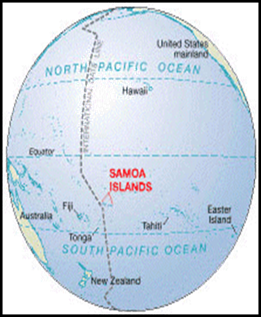
|
|
|
|
|
|
|
|
|
|
|
|
|
|
|
|
|
|
|
|
|
|
|
|
|
|
|
|
|
|
|
|
|
|
|
|
|
|
|
|
|
|
|
|
|
|
|
|
|
|
|
|
|
|
|
|
|
|
|
|
|
|
|
|
|
|
|
|
|
|
|
|
|
|
|
|
|
|
|
|
|
|
|
|
|
|
|
|
|
|
|
|
|
|
|
|
|
|
|
|
|
|
|
|
|
|
|
|
|
|
|
|
|
|
|
|
|
|
|
|
|
|
|
|
|
|
|
|
|
|
|
|
|
|
|
|
|
|
|
|
|
|
|
|
|
|
|
|
|
|
|
|
|
|
|
|
|
|
|
|
|
|
|
|
|
|
|
|
|
|
|
|
|
|
|
|
| American
Samoa's location |
|
|
|
|
|
|
|
|
|
|
| http://www.american.samoa.national-park.com/location.htm |
|
|
|
|
|
|
|
|
|
|
|
|
|
|
|
|
|
|
|
|
|
| Tutuila
Island, American Samoa lies east of the International Date Line in the
Central South Pacific Ocean about 2,600 miles south, southwest of Honolulu,
Hawaii; 1,800 miles northeast of Auckland, New Zealand; and 1,425 miles west
northwest of Papeete, Tahiti in French Polynesia. It is the largest island in
American Samoa, which is the only United States territory south of the
equator. Its status as a U.S.
protectorate was formalized in the Treaty of Cession of Tutuila in 1900.
American Samoa is administered by the Department of the Interior. |
|
|
|
|
|
|
|
|
|
|
| https://en.wikipedia.org/wiki/Deed_of_Cession_of_Tutuila |
|
|
|
|
|
|
|
|
|
|
| https://www.cia.gov/library/publications/the-world-factbook/geos/aq.html |
|
|
|
|
|
|
|
|
|
|
|
|
|
|
|
|
|
|
|
|
|
| In the first half of the 19th Century,
the US Federal Government was active as both the benefactor and beneficiary
of scientific expeditions covering large regions of the globe. The Lewis and
Clark Expedition [1804 - 1806, through the contiguous land area of the
Louisiana Territory of the United States and beyond to the Pacific Ocean] and
the U.S. Exploring Expedition [1838 – 1842, into the South Atlantic and the
Pacific Oceans] were the progenitors of the U.S. Federal Government’s
tradition of scientific inquiry extending well into the 21st Century. |
|
|
|
|
|
|
|
|
|
|
| http://www.usa.gov/Citizen/Topics/Science/Agencies.shtml |
|
|
|
|
|
|
|
|
|
|
| http://www.globalsecurity.org/military/ops/controversy-of-1889.htm |
|
|
|
|
|
|
|
|
|
|
|
|
|
|
|
|
|
|
|
|
|
| Useful
background about American Samoa relevant to Elwin Hart’s report comes from Narrative of the United States Exploring Expedition (Philadelphia: C. Sherman, 1844.), written by Charles Wilkes,
the expedition’s leader. Wilkes’ Narrative … is the official record of this expedition into the vast
expanses of the Pacific Ocean. This Narrative … is in the possession
of the Smithsonian Institution in Washington, DC and is accessible on the
internet. Volume 2 (Chapters III, IV and V) of
Wilkes’ Narrative …
focuses on the expedition’s travels into Samoan waters in 1839. |
|
|
|
|
|
|
|
|
|
|
| http://www.sil.si.edu/digitalcollections/usexex/learn/philbrick.htm |
|
|
|
|
|
|
|
|
|
|
| http://www.sil.si.edu/digitalcollections/usexex/follow-01.htm |
|
|
|
|
|
|
|
|
|
|
|
|
|
|
|
|
|
|
|
|
|
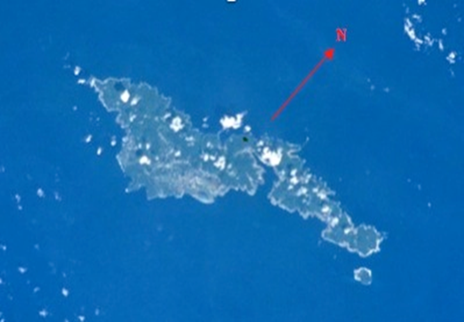
|
|
|
|
|
|
|
|
|
|
|
| |
|
|
|
|
|
|
|
|
|
|
|
|
|
|
|
|
|
|
|
|
|
|
|
|
|
|
|
|
|
|
|
|
|
|
|
|
|
|
|
|
|
|
|
|
|
|
|
|
|
|
|
|
|
|
|
|
|
|
|
|
|
|
|
|
|
|
|
|
|
|
|
|
|
|
|
|
|
|
|
|
|
|
|
|
|
|
|
|
|
|
|
|
|
|
|
|
|
|
|
|
|
|
|
|
|
|
|
|
|
|
|
|
|
|
|
|
|
|
|
|
|
|
|
|
|
|
|
|
|
|
|
|
|
|
|
|
|
|
|
|
|
|
|
|
|
|
|
|
|
|
|
|
|
|
|
|
|
|
|
|
|
|
|
|
|
|
|
|
|
|
|
|
|
|
|
|
|
|
|
|
|
|
|
|
|
|
| Low-altitude
NASA photo of Tutuila from the International Space Station |
|
|
|
|
|
|
|
|
|
|
| Pago
Pago Harbor … large coastal indentation on lower shore |
|
|
|
|
|
|
|
|
|
|
| (View
oriented toward the northwest) |
|
|
|
|
|
|
|
|
|
|
| http://eol.jsc.nasa.gov/scripts/sseop/QuickView.pl?directory=ISD&ID=ISS002-701-263 |
|
|
|
|
|
|
|
|
|
|
|
|
|
|
|
|
|
|
|
|
|
| Discoveries
made by Wilkes’ expedition and shared over the years with several Federal
agencies directly influenced planning of military operations in the Pacific
during World War II. Accordingly, that
influence has direct implications for Elwin Hart’s story. |
|
|
|
|
|
|
|
|
|
|
| https://en.wikipedia.org/wiki/Naval_Oceanographic_Office |
|
|
|
|
|
|
|
|
|
|
| http://www.usno.navy.mil/USNO/about-us/brief-history |
|
|
|
|
|
|
|
|
|
|
| https://www.noaa.gov |
|
|
|
|
|
|
|
|
|
|
| http://www.arlingtoncemetery.net/cwilkes.htm |
|
|
|
|
|
|
|
|
|
|
|
|
|
|
|
|
|
|
|
|
|
| By the
spring of 1839 (in the Southern Hemisphere), Wilkes sailed some 1,300 miles
from Tahiti toward the eastern islands of Samoa. On 10 October 1839, Wilkes reports in
Volume 2 of his Narrative, … |
|
|
|
|
|
|
|
|
|
|
|
|
|
|
|
|
|
|
|
|
|
| “After
sunset we bore away for Tutuila, … temperature in the passage from Tahiti to
the Samoan Islands … increased from 77.6º to 81.11º (Fahrenheit) in the air;
and that of the water from 79.6º to 81.6º. |
|
|
|
|
|
|
|
|
|
|
|
|
|
|
|
|
|
|
|
|
|
| … I
resolved, in order to accomplish (a thorough examination of this Samoan
Group) … to divide the squadron, so as to put all the remaining islands under
examination at the same time. The
island of Tutuila being the most central (of the Samoan Group would be) the
best position for my astronomical observations … I selected (Tutuila) for the
Vincennes (Wilkes’ flagship
for this expedition) … “ |
|
|
|
|
|
|
|
|
|
|
|
|
|
|
|
|
|
|
|
|
|
| No
usefully extant image of Wilkes’ flagship, the USS Vincennes, in
Samoan waters exists, but Wilkes did venture into Antarctic waters where the
etching below was made. This image now
leaves the reader to imagine this vessel in the South Pacific, in Samoan
waters with sails filled by warm tropical spring breezes … the same waters, climate and
topography into which Elwin Hart ventured some 103 years later. |
|
|
|
|
|
|
|
|
|
|
| http://csep10.phys.utk.edu/astr161/lect/time/seasons.htmladsfasdfad |
|
|
|
|
|
|
|
|
|
|
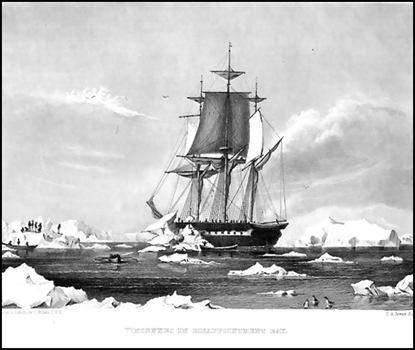
|
|
|
|
|
|
|
|
|
|
|
|
|
|
|
|
|
|
|
|
|
|
|
|
|
|
|
|
|
|
|
|
|
|
|
|
|
|
|
|
|
|
|
|
|
|
|
|
|
|
|
|
|
|
|
|
|
|
|
|
|
|
|
|
|
|
|
|
|
|
|
|
|
|
|
|
|
|
|
|
|
|
|
|
|
|
|
|
|
|
|
|
|
|
|
|
|
|
|
|
|
|
|
|
|
|
|
|
|
|
|
|
|
|
|
|
|
|
|
|
|
|
|
|
|
|
|
|
|
|
|
|
|
|
|
|
|
|
|
|
|
|
|
|
|
|
|
|
|
|
|
|
|
|
|
|
|
|
|
|
|
|
|
|
|
|
|
|
|
|
|
|
|
|
|
|
|
|
|
|
|
|
|
|
|
|
|
|
|
|
|
|
|
|
|
|
|
|
|
|
|
|
|
|
|
|
|
|
|
|
|
|
|
|
|
|
|
|
|
|
|
|
|
|
|
|
|
|
|
|
|
| USS Vincennes in Disappointment Bay,
Antarctica |
|
|
|
|
|
|
|
|
|
|
| 23
January 1849; 67° 04’ 30” S longitude 147° 30’ E latitude |
|
|
|
|
|
|
|
|
|
|
| Sketched
by Charles Wilkes, U.S.N.; Engraved by C.A. Jewett |
|
|
|
|
|
|
|
|
|
|
| from Narrative of the U.S. Exploring Expedition, Volume 2, Chapter X, p. 329 |
|
|
|
|
|
|
|
|
|
|
|
|
|
|
|
|
|
|
|
|
|
| “(These
islands lie) between the latitudes of 13° 30” and 14° 30”, and the longitudes
of 168 and 173W…The harbours are usually situated within the reefs, but
Tutuila is an exception to this rule, by the possession of the deep … basin
of Pago-pago … is, of all the ports … best adapted for the refitting of
vessels … |
|
|
|
|
|
|
|
|
|
|
|
|
|
|
|
|
|
|
|
|
|
| At
daylight on the 11th we were near (Tutuila’s) eastern end, and off the island of
Anuu. (In January 1942, Elwin Hart
and the SS Matsonia
used the very same approach to Tutuila Island.) |
|
|
|
|
|
|
|
|
|
|
|
|
|
|
|
|
|
|
|
|
|
| …
Tutuila is high, broken, and of volcanic appearance. It is seventeen miles long, and its
greatest width is five miles. The
harbour of Pago-pago penetrates into the centre, and almost divides the
island into two parts. Its highest
peak, that of Matafoa, was found to be two thousand three hundred and
twenty-seven feet above the sea. The
spurs and ridges that form the high land are like those of Tahiti:
precipitous, sharp-edged, and frequently rise in mural walls from the water
to a height of three or four hundred feet, showing the bare … basaltic
rock. |
|
|
|
|
|
|
|
|
|
|
|
|
|
|
|
|
|
|
|
|
|
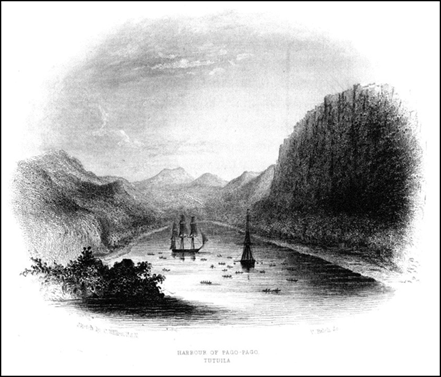
|
|
|
|
|
|
|
|
|
|
|
|
|
|
|
|
|
|
|
|
|
|
|
|
|
|
|
|
|
|
|
|
|
|
|
|
|
|
|
|
|
|
|
|
|
|
|
|
|
|
|
|
|
|
|
|
|
|
|
|
|
|
|
|
|
|
|
|
|
|
|
|
|
|
|
|
|
|
|
|
|
|
|
|
|
|
|
|
|
|
|
|
|
|
|
|
|
|
|
|
|
|
|
|
|
|
|
|
|
|
|
|
|
|
|
|
|
|
|
|
|
|
|
|
|
|
|
|
|
|
|
|
|
|
|
|
|
|
|
|
|
|
|
|
|
|
|
|
|
|
|
|
|
|
|
|
|
|
|
|
|
|
|
|
|
|
|
|
|
|
|
|
|
|
|
|
|
|
|
|
|
|
|
|
|
|
|
|
|
|
|
|
|
|
|
|
|
|
|
|
|
|
|
|
|
|
|
|
|
|
|
|
|
|
|
|
|
|
|
|
|
|
|
|
|
|
|
|
|
|
|
|
|
|
|
|
|
|
|
|
|
|
| Harbour
of Pago-pago, 1839 |
|
|
|
|
|
|
|
|
|
|
| Sketched
by C. Wilkes, U.S.N. – Engraved by V. Balch |
|
|
|
|
|
|
|
|
|
|
| from Narrative of the U.S. Exploring Expedition, Volume 2, Chapter III, p. 75 |
|
|
|
|
|
|
|
|
|
|
|
|
|
|
|
|
|
|
|
|
|
| (Land
surfaces are) covered with … luxuriant vegetation to the very top of the
mountains; the cocoa-nut tree and tree-fern give the principal character to
this beautiful scenery. Dead coral is
seen along the shores, above high water mark. |
|
|
|
|
|
|
|
|
|
|
|
|
|
|
|
|
|
|
|
|
|
| The
harbour of Pago-pago is one of the most singular in all the Polynesian
isles. It is the last point on which
one would look for a place of shelter:
the coast near it is peculiarly rugged, and has no appearance of
indentations, and the entrance being narrow, is not easily observed … it is
surrounded on all sides by inaccessible mural precipices … The lower parts of
these rocks are bare, but they are clothed above with luxuriant vegetation …
The harbour’s … entrance, which is about a third of a mile in width, is well
marked by the Tower Rock and Devil’s Point. |
|
|
|
|
|
|
|
|
|
|
|
|
|
|
|
|
|
|
|
|
|
| The
climate of these islands may be termed variable, and there is much bad
weather, particularly during the winter months, when long and heavy rains,
attended at times with high winds and northerly gales, are frequent… |
|
|
|
|
|
|
|
|
|
|
|
|
|
|
|
|
|
|
|
|
|
| As we
arrived off the harbour the wind grew light, and … our anchorage (was) … in
deep water, twenty-nine fathoms. About
a half a mile (inside) the entrance of the harbour, (the harbour) bends at
(a) right angle (to the west). In this
position, surrounded by cliffs, the firing of a gun produces a remarkable
reverberation, resembling loud peals of thunder. |
|
|
|
|
|
|
|
|
|
|
|
|
|
|
|
|
|
|
|
|
|
| The
soil of all the islands is rich … The woods in the interior … are very thick,
and often composed of large and fine trees; among them are tree-ferns,
pandanus … several species of palms … (and the most remarkable, the) Ficus religiosa (Sacred Ficus),
called in these islands ohwa (a large deciduous tree sacred to the Hindus and
Buddhists under which Buddha received enlightenment). |
|
|
|
|
|
|
|
|
|
|
|
|
|
|
|
|
|
|
|
|
|
| Some
of (the Sacred Ficus) were seen, whose pendent branches had taken root in the
ground to the number of thousands forming stems from an inch to two feet in
diameter, uniting in the main trunk more than eighty feet above the ground,
and supporting a vast system of horizontal branches, spreading like an
umbrella over the tops of the other trees. |
|
|
|
|
|
|
|
|
|
|
| http://toptropicals.com/catalog/uid/Ficus_religiosa.htm |
|
|
|
|
|
|
|
|
|
|
|
|
|
|
|
|
|
|
|
|
|
| Pago-pago
is thickly settled round its shores, and particularly at its southwestern
end: this is lower and more easily cultivated than the eastern, which is high
and rugged. The only communication
(between villages) is by the sea-shore, the hills being too precipitous and
difficult of ascent, to pass over. The
village of Pago-pago contains about thirty dwellings, and a council-house,
which is in use as a church, until the large one they are engaged in building
shall be finished. |
|
|
|
|
|
|
|
|
|
|
|
|
|
|
|
|
|
|
|
|
|
| On
the 17th, our
friend Toa (a local principal chief) gave us an invitation to visit him at
his town of Fungasar, on the north side of the island (on present-day Fagasa
Bay) … This village contained about forty houses, of a large and commodious
size, and about two hundred inhabitants … (This is very close to where Elwin
was stationed in early 1942.) |
|
|
|
|
|
|
|
|
|
|
|
|
|
|
|
|
|
|
|
|
|
| The
path across the island is a very difficult one to travel; it leads up through
the valley, and across the dividing ridge, which is quite precipitous. The rain which had fallen made it very
slippery, and the journey was fatiguing to those not accustomed to this kind
of walking … (terrain with which Elwin Hart was very
familiar because for two months at Tutuila he the radio operator on a patrol
boat stationed on the north side of Tutuila.
Describing how he and some of his buddies coped with one emergency in
this terrain, Elwin wrote, “To get to (the Pago Pago side) of the island was
very difficult. The shortest distance
was a climb almost straight up and straight down for some two hours.”) … |
|
|
|
|
|
|
|
|
|
|
|
|
|
|
|
|
|
|
|
|
|
| The
climate of Tutuila is (can also be) mild and agreeable, particularly at
Pago-pago, where the temperature is lower than it is elsewhere on the island,
in consequence of its generally being overshadowed with clouds that hang on
the high land. There is usually a fine
breeze, which sets I about ten o’clock and continues until sunset. The nights being calm, much dew falls in
fine weather. We had little fair
weather during our stay … |
|
|
|
|
|
|
|
|
|
|
|
|
|
|
|
|
|
|
|
|
|
| While
we were engaged at Tutuila and Upolu, the survey of the island of (the nearby
island of) Savaii was performed by Lieutenant-Commandant Ringgold, in the
Porpoise.” |
|
|
|
|
|
|
|
|
|
|
| http://www.sil.si.edu/digitalcollections/usexex/navigation/NarrativePages/USExEx19_02b.cfm?start=145 |
|
|
|
|
|
|
|
|
|
|
|
|
|
|
|
|
|
|
|
|
|
| A
special association exists between this vessel the USS Porpoise; its skipper Lieutenant-Commandant Cadwalader Ringgold
(1802-1867); and Elwin Hart. Ringgold
and his crew had been gone from home in New York City for three years and 11
months, having sailed some 90,000 miles while losing only two of his
crewmen. |
|
|
|
|
|
|
|
|
|
|
|
|
|
|
|
|
|
|
|
|
|
| The US
Navy’s WWII Fletcher-class destroyer USS Ringgold (DD-500) was named after Lieutenant-Commandant Cadwalader
Ringgold who figured so prominently and successfully in the U.S. Exploring
Expedition. |
|
|
|
|
|
|
|
|
|
|
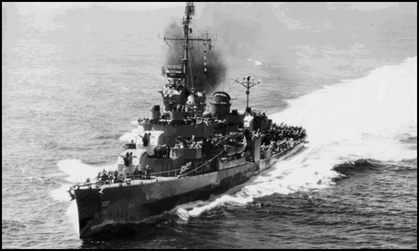
|
|
|
|
|
|
|
|
|
|
|
|
|
|
|
|
|
|
|
|
|
|
|
|
|
|
|
|
|
|
|
|
|
|
|
|
|
|
|
|
|
|
|
|
|
|
|
|
|
|
|
|
|
|
|
|
|
|
|
|
|
|
|
|
|
|
|
|
|
|
|
|
|
|
|
|
|
|
|
|
|
|
|
|
|
|
|
|
|
|
|
|
|
|
|
|
|
|
|
|
|
|
|
|
|
|
|
|
|
|
|
|
|
|
|
|
|
|
|
|
|
|
|
|
|
|
|
|
|
|
|
|
|
|
|
|
|
|
|
|
|
|
|
| USS Ringgold (DD-500) |
|
|
|
|
|
|
|
|
|
|
| www.dd500.org |
|
|
|
|
|
|
|
|
|
|
|
|
|
|
|
|
|
|
|
|
|
| This
destroyer saw service in the lagoon at Tarawa firing her 5” guns at Japanese
shore batteries only 700 yards away prior to and after Elwin Hart landed on
Red Beach 3! Elwin’s best buddy
throughout their 30 months in the Pacific was the one who, on the Naval
Gunfire Net in late November of 1943, was the one who “… directed the fire of
two destroyers (the Ringgold
and the Dashiell) in
the lagoon, very successfully in my (Elwin’s) opinion.” |
|
|
|
|
|
|
|
|
|
|
| http://www.defensemedianetwork.com/stories/slugging-it-out-in-tarawa-lagoon/ |
|
|
|
|
|
|
|
|
|
|
| Elwin
Hart, email to author, September 1, 2013. |
|
|
|
|
|
|
|
|
|
|
|
|
|
|
|
|
|
|
|
|
|
| Returning
to the main text of Elwin Hart’s report … |
|
|
|
|
|
|
|
|
|
|
|
|
|
|
|
|
|
|
|
|
|
|
|
|
|
|
|
|
|
|
|
|
| In
October 1942, Elwin’s first deployment into a war zone was made. He and the
rest 8th Marines
waved good-bye to the Samoans and headed some 2,000 miles west-northwest to
Guadalcanal in the Solomon Islands, landing there on 4 November 1942. Consistent with his training back in San
Diego and duty on Tutuila, his work was largely communications support with
various infantry and artillery units and keeping lines of communication open
to 8th
Marine Regiment Headquarters. During operations at Guadalcanal and later at
Tarawa, Elwin has said that some messages were, of necessity, sent in the
clear, but others were written by the radio operators and then sent to the
unit Message Center for encryption. In 1945, he learned the communication
code system used by the Japanese.
Elwin reports that much of what was learned at San Diego proved to be
very valuable when he was at Guadalcanal and Tarawa. Comparing events at Guadalcanal with events
at Tarawa, Elwin states, “No comparison … Guadalcanal was a piece of
cake.” By February 1943, the mission
on Guadalcanal was finished when the Japanese were finally defeated. |
|
|
|
|
|
|
|
|
|
|
|
|
|
|
|
|
|
|
|
|
|
| Readers
might wish to examine informative supplementary sources about the Battle of
Guadalcanal … |
|
|
|
|
|
|
|
|
|
|
|
|
|
|
|
|
|
|
|
|
|
| Richard
Tregaskis’ memoir, Guadalcanal Diary. New York: Random House, 1943. |
|
|
|
|
|
|
|
|
|
|
| http://www.defensenews.com/article/20120909/DEFFEAT05/309090004/The-Lessons-Guadalcanal |
|
|
|
|
|
|
|
|
|
|
| http://www.ibiblio.org/hyperwar/USMC/USMC-C-Guadalcanal.html |
|
|
|
|
|
|
|
|
|
|
| http://www.npr.org/programs/re/archivesdate/2002/aug/guadalcanal/ |
|
|
|
|
|
|
|
|
|
|
| http://www.defensenews.com/article/20120909/DEFFEAT05/309090004/The-Lessons-Guadalcanal |
|
|
|
|
|
|
|
|
|
|
|
|
|
|
|
|
|
|
|
|
|
| Between
late February 1943 and November 1943, (late summer, autumn, winter and spring
at those latitudes in the Southern Hemisphere), Elwin and the 8th Marines were
stationed about 22 miles northeast of Wellington, New Zealand … on that
country’s North Island … on the Kapiti Coast near the village of
Paekakariki. That name, incidentally,
in the Maori language means “perch of the kakariki parrot (a green parrot).” |
|
|
|
|
|
|
|
|
|
|
| http://envirohistorynz.com/2011/06/24/paekakariki-perch-of-the-green-parrot/ |
|
|
|
|
|
|
|
|
|
|
|
|
|
|
|
|
|
|
|
|
|
| Elwin
reports traveling on a narrow-gauge railway to the Paekakariki area, as seen
in the following photograph. This was
the usual means for getting back to Wellington for liberties there. Since this railway was the primary means
for travelling between Wellington and the Paekakariki area, Marines were
generally very careful to cut short their liberty opportunities in the dance
halls and milk parlors and return to base before their liberties
finished. The thought of missing a
train and being charged with being ‘absent without leave’ (AWOL) sure
encouraged Marines to get back on the train and avoid punishment. |
|
|
|
|
|
|
|
|
|
|
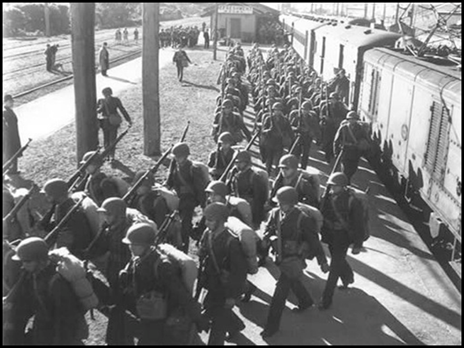
|
|
|
|
|
|
|
|
|
|
|
|
|
|
|
|
|
|
|
|
|
|
|
|
|
|
|
|
|
|
|
|
|
|
|
|
|
|
|
|
|
|
|
|
|
|
|
|
|
|
|
|
|
|
|
|
|
|
|
|
|
|
|
|
|
|
|
|
|
|
|
|
|
|
|
|
|
|
|
|
|
|
|
|
|
|
|
|
|
|
|
|
|
|
|
|
|
|
|
|
|
|
|
|
|
|
|
|
|
|
|
|
|
|
|
|
|
|
|
|
|
|
|
|
|
|
|
|
|
|
|
|
|
|
|
|
|
|
|
|
|
|
|
|
|
|
|
|
|
|
|
|
|
|
|
|
|
|
|
|
|
|
|
|
|
|
|
|
|
|
|
|
|
|
|
|
|
|
|
|
|
|
|
|
|
|
|
|
|
|
|
|
|
|
|
|
|
|
|
|
|
|
|
|
|
|
|
|
|
|
|
|
|
|
|
|
|
|
|
|
|
|
|
|
|
|
|
|
|
|
|
| Marines
arriving from at Paekakariki Railway Station
(Courtesy: Kim Harrison) |
|
|
|
|
|
|
|
|
|
|
| http://img299.imageshack.us/img299/6808/themarinestravelledbytr.jpg |
|
|
|
|
|
|
|
|
|
|
|
|
|
|
|
|
|
|
|
|
|
| Besides
seemingly non-stop training, Elwin and his buddies had a number of liberties
to Wellington and immersed themselves in a variety of social activities that,
happily, provided them with much-appreciated counterbalance to their military
duties. The absence of most young New
Zealand males (most were in the Kiwi forces in Europe) and a lively, huge
dancehall with more girls than any Marine could count and where the girls
asked the Marines to dance certainly raised Elwin’s spirits while preparing
for his next combat duties. A one-week
R&R opportunity to visit a sheep ranch on the South Island was
particularly memorable for Elwin, not the least because the initial one-week
opportunity was extended for another week to help him overcome some of the
debilitating effects of malaria contracted from his exposure to mosquitoes on
Guadalcanal. |
|
|
|
|
|
|
|
|
|
|
|
|
|
|
|
|
|
|
|
|
|
| It is
important to mention here that many New Zealanders continue to have fond
memories of their Marine Corps visitors some 70 years ago. In 2009, the Kapiti U.S. Marines Trust
(KUSMT) was set up as a charitable trust to benefit the local communities of
Kapiti and Paekakariki by preserving and honoring the Marine presence there
in the 1942 – 1944 time period. KUSMT
has a superb website providing a detailed description of the Trust’s
activities. |
|
|
|
|
|
|
|
|
|
|
| http://marinenz.com/Paekakariki |
|
|
|
|
|
|
|
|
|
|
|
|
|
|
|
|
|
|
|
|
|
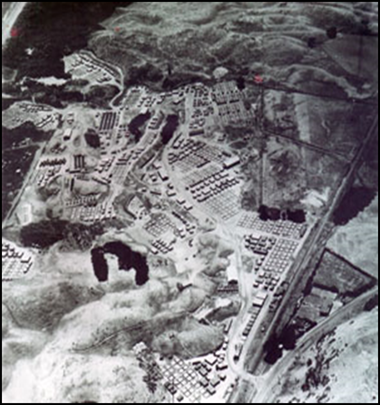
|
|
|
|
|
|
|
|
|
|
|
|
|
|
|
|
|
|
|
|
|
|
|
|
|
|
|
|
|
|
|
|
|
|
|
|
|
|
|
|
|
|
|
|
|
|
|
|
|
|
|
|
|
|
|
|
|
|
|
|
|
|
|
|
|
|
|
|
|
|
|
|
|
|
|
|
|
|
|
|
|
|
|
|
|
|
|
|
|
|
|
|
|
|
|
|
|
|
|
|
|
|
|
|
|
|
|
|
|
|
|
|
|
|
|
|
|
|
|
|
|
|
|
|
|
|
|
|
|
|
|
|
|
|
|
|
|
|
|
|
|
|
|
|
|
|
|
|
|
|
|
|
|
|
|
|
|
|
|
|
|
|
|
|
|
|
|
|
|
|
|
|
|
|
|
|
|
|
|
|
|
|
|
|
|
|
|
|
|
|
|
|
|
|
|
|
|
|
|
|
|
|
|
|
|
|
|
|
|
|
|
|
|
|
|
|
|
|
|
|
|
|
|
|
|
|
|
|
|
|
|
|
|
|
|
|
|
|
|
|
|
|
|
|
|
|
|
|
|
|
|
|
|
|
|
|
|
|
|
|
|
|
|
|
| Our new
‘home’ at Camp Paekakariki |
|
|
|
|
|
|
|
|
|
|
| http://www.marinenz.com/The+Camps |
|
|
|
|
|
|
|
|
|
|
| http://www.pspt.wellington.net.nz/uss.htm |
|
|
|
|
|
|
|
|
|
|
|
|
|
|
|
|
|
|
|
|
|
| By
mid-October 1943, it was obvious that training at the Marine camps would be
coming to an end. All sorts of gear
and equipment were being transferred down to the Aotea Quay in Wellington,
and on 1 November 1943, Elwin (along with several thousand other Marines)
departed on what would become the most formidable challenge to that date in
his Marine Corps career. Before
departing New Zealand, Elwin was promoted to Sergeant as a result of a
Regimental-wide competition. |
|
|
|
|
|
|
|
|
|
|
|
|
|
|
|
|
|
|
|
|
|
| So,
what was Elwin getting into? This
report exists to ensure that his story endures. |
|
|
|
|
|
|
|
|
|
|
|
|
|
|
|
|
|
|
|
|
|
| Elwin’s
Communications Platoon in the H&S-2-8 was part of the complement of
Marines on board the USS Heywood (APA-6), the first of the Heywood-class attack transports. |
|
|
|
|
|
|
|
|
|
|
|
|
|
|
|
|
|
|
|
|
|
| The
complete list of Marine Corps units carried on the Heywood includes: 2nd Bn 8th
Marines; Btry H, 3rd Bn 10th Marines; Btry H, 2nd Bn, 10th Marines; Co C, 1st
Bn 18th Marines; Co F, 2nd Bn, 18th Marines; Ordnance Co, 2nd Service Bn; Det
3rd Pltn, S&S Co; 3rd Band Section; 2nd MP Co; Air Liaison; Fwd
Observers, 10th Marines; Div Hq Co (Photographers); Wpns Co, 8th Marines; Co
C 2nd Med Bn; and Co C 2nd AmpTracBn. |
|
|
|
|
|
|
|
|
|
|
| USS
Heywood, APA-6: Action Report in
connection with capture of Tarawa, Gilbert Islands. National Archives. 31 Dec 2012.
<http://www.fold3.com/s.php?advanced=1#query=USS+Heywood+APA-6%2C+action+report+in+connection+with+capture+of+Tarawa%2C+Gilbert+Islands&ocr=1&preview=1&t=all>. |
|
|
|
|
|
|
|
|
|
|
|
|
|
|
|
|
|
|
|
|
|
| Heywood was part of the US Navy’s Task Force 53 (comprised of at
least 36 transport and supply vessels and fire support vessels) that departed
on 1 November 1943 from Wellington with the 2nd Marine Division (Reinforced) on board. |
|
|
|
|
|
|
|
|
|
|
| http://pacific.valka.cz/forces/tf53.htm#galvan |
|
|
|
|
|
|
|
|
|
|
|
|
|
|
|
|
|
|
|
|
|
| In
pre-WWII days, Heywood was
the SS City of Baltimore, owned by the Baltimore Mail Line. Before Elwin Hart and his 2nd Battalion, 8th Marines were on
board in November 1943, Heywood had already participated in the Tulagi-Guadalcanal campaign in
1942 and in the Aleutian campaign in 1943.
Eventually in 1944, Heywood assisted in operations in the Marshall Islands; the Marianas;
and the Philippines. In 1945 Heywood landed reinforcements at
Okinawa and was back in the Philippines when Japan announced its surrender on
15 August (six days after our atomic attack on Nagasaki). She was present in Tokyo Bay on 2 September
when the formal surrender of all Imperial Japanese forces was accepted on the
USS Missouri (BB-63),
and she brought occupation troops into Tokyo Bay on 2 September 1945. She was a well-traveled and highly
decorated vessel, earning seven battle stars during the war. In 1946, Heywood was decommissioned as a US Navy vessel and returned to the
Baltimore Mail Line which renamed her the SS City
of Baltimore. |
|
|
|
|
|
|
|
|
|
|
| http://www.gjenvick.com/HistoricalBrochures/BaltimoreMailLine/1930s-Brochure-NewShips-OneClass-LowCost.html#axzz2d2SnqyfV |
|
|
|
|
|
|
|
|
|
|
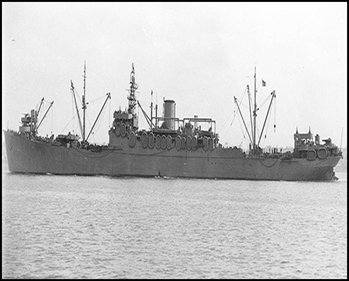
|
|
|
|
|
|
|
|
|
|
|
|
|
|
|
|
|
|
|
|
|
|
|
|
|
|
|
|
|
|
|
|
|
|
|
|
|
|
|
|
|
|
|
|
|
|
|
|
|
|
|
|
|
|
|
|
|
|
|
|
|
|
|
|
|
|
|
|
|
|
|
|
|
|
|
|
|
|
|
|
|
|
|
|
|
|
|
|
|
|
|
|
|
|
|
|
|
|
|
|
|
|
|
|
|
|
|
|
|
|
|
|
|
|
|
|
|
|
|
|
|
|
|
|
|
|
|
|
|
|
|
|
|
|
|
|
|
|
|
|
|
|
|
|
|
|
|
|
|
|
|
|
|
|
|
|
|
|
|
|
|
|
|
|
|
|
|
|
|
|
|
|
|
|
|
|
|
|
|
|
|
|
|
|
|
|
|
| USS Heywood (APA-6) in San Pedro
Harbor, Los Angeles, in April 1943 |
|
|
|
|
|
|
|
|
|
|
| http://www.history.navy.mil/photos/images/n40000/n43228.jpg |
|
|
|
|
|
|
|
|
|
|
| https://en.wikipedia.org/wiki/Heywood_class_attack_transport |
|
|
|
|
|
|
|
|
|
|
|
|
|
|
|
|
|
|
|
|
|
| Initially,
Marines were told only that they would be traveling a short distance to
Hawkes Bay, about 200 miles up on the east side of New Zealand's North Island
for more amphibious landing exercises. |
|
|
|
|
|
|
|
|
|
|
|
|
|
|
|
|
|
|
|
|
|
| And that
is what happened. Task Force 53
stopped briefly at Hawkes Bay on the east coast of the New Zealand’s North
Island to practice amphibious assaults prior to their arrival in an as yet
unannounced combat zone during the midst of hostile fire. |
|
|
|
|
|
|
|
|
|
|
|
|
|
|
|
|
|
|
|
|
|
| Interestingly,
on 27 October 2013, just a few days prior to the 70th anniversary of the 2nd
Marine Division’s practice landings in November 1943, members of the New
Zealand Military Vehicle Collectors Club (Robin Beale, current president)
organized an event to commemorate our Marines’ original practice landings. |
|
|
|
|
|
|
|
|
|
|
|
|
|
|
|
|
|
|
|
|
|
| One
can view (or possibly find in their archives) the local New Zealand
television’s evening news on 27 October 2013, relating to ceremonies by the
New Zealand Military Vehicle Collectors Club (NZMVCC) on that date. |
|
|
|
|
|
|
|
|
|
|
| http://www.scoop.co.nz/multimedia/tv/national/85699.html |
|
|
|
|
|
|
|
|
|
|
|
|
|
|
|
|
|
|
|
|
|
| In the
following photographs, one can see New Zealanders and guests from the US
Marines and the American Embassy on Mahia Bay to unveil the plaque
commemorating 2nd Marine Division practice landings in early November
1943. These photographs come from
Robin Beale and Kevin Simmonds, members of the NZMVCC. |
|
|
|
|
|
|
|
|
|
|
|
|
|
|
|
|
|
|
|
|
|
| If only
our Marines had had this beauty and tranquility of the Hawkes Bay area when
they reached this beautiful area on the east coast of New Zealand's North
Island 70 years ago! |
|
|
|
|
|
|
|
|
|
|
|
|
|
|
|
|
|
|
|
|
|
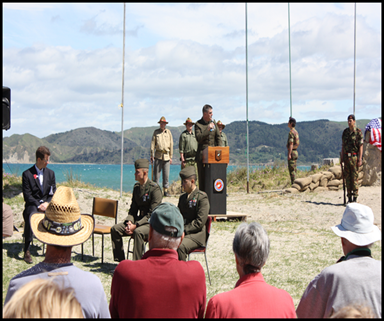
|
|
|
|
|
|
|
|
|
|
|
|
|
|
|
|
|
|
|
|
|
|
|
|
|
|
|
|
|
|
|
|
|
|
|
|
|
|
|
|
|
|
|
|
|
|
|
|
|
|
|
|
|
|
|
|
|
|
|
|
|
|
|
|
|
|
|
|
|
|
|
|
|
|
|
|
|
|
|
|
|
|
|
|
|
|
|
|
|
|
|
|
|
|
|
|
|
|
|
|
|
|
|
|
|
|
|
|
|
|
|
|
|
|
|
|
|
|
|
|
|
|
|
|
|
|
|
|
|
| Plaque
commemoration ceremony, Mahia Bay, 27 October 2013 |
|
| Courtesy: Robin Beale, current president of NZMVCC |
|
|
|
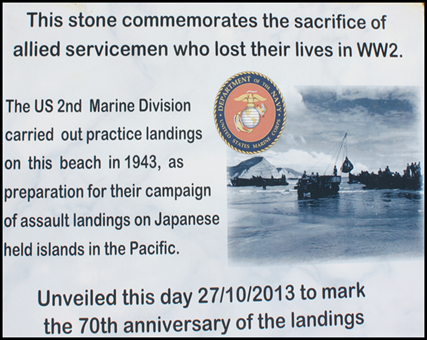
|
|
|
|
|
|
|
|
|
|
|
|
|
|
|
|
|
|
|
|
|
|
|
|
|
|
|
|
|
|
|
|
|
|
|
|
|
|
|
|
| Close-up
view of the commemorative plaque on the rock cairn at Mahia Bay |
|
| Courtesy: Kevin Simmonds and Robin Beale |
|
|
|

|
|
|
|
|
|
|
|
|
|
|
|
|
|
|
|
|
|
|
|
|
|
|
|
|
|
|
|
|
|
|
|
|
|
|
|
|
|
|
|
|
|
| 70-year
old photo of our Marines’ mock landings at Mahia Bay, November 1943 |
|
| 0 |
|
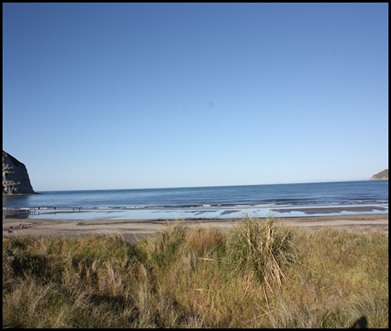
|
|
|
|
|
|
|
|
|
|
|
|
|
|
|
|
|
|
|
|
|
|
|
|
|
|
|
|
|
|
|
|
|
|
|
|
|
|
|
|
|
|
|
|
|
|
|
|
|
|
|
|
|
|
|
|
|
|
|
|
|
|
|
|
|
|
|
|
|
|
|
|
|
|
|
|
|
|
|
|
|
|
|
|
|
|
|
|
|
|
|
|
|
|
|
|
|
|
|
|
|
|
|
|
|
|
|
|
|
|
|
|
| Our
Marines are invited back to the beach at Mahia Bay, Hawkes Bay, North Island
New Zealand. |
|
|
|
|
|
|
|
|
|
|
| Courtesy:
Robin Beale and Kevin Simmonds |
|
|
|
|
|
|
|
|
|
|
|
|
|
|
|
|
|
|
|
|
|
|
|
|
|
|
|
|
|
|
|
|
|
|
|
|
|
|
|
|
|
|
|
| About
a week out of Wellington, Elwin and Heywood arrived at Efate Island in the New Hebrides, a large island
group in the South Pacific about 600 miles west of Fiji. Heywood was in Task Force 53 (Task Unit 53.1.1 of Transport Division
Four of Task Group 53.1, to be precise).
This stop, with other vessels in Task Force 53, was for more
amphibious landing practice at Mele Bay while waiting for the arrival of more
vessels to complete the convoy’s assembly. |
|
|
|
|
|
|
|
|
|
|
|
|
|
|
|
|
|
|
|
|
|
| Practice
landings took place at Mele Bay on the day of our arrival, with Heywood anchoring in Havannah
Harbor upon the close of the day’s activities. A day or so later, more practice landings
happened at Mele Bay, with Heywood anchoring in Fila Harbor after those landings. During the
stay of Heywood at
Efate, Elwin’s Communication Platoon did not participate in the practice
landings; instead, they spent most of their time testing communication
equipment and procedures. Now-public
vessel action reports show that Heywood was at both Havannah Harbor and Fila Harbor. |
|
|
|
|
|
|
|
|
|
|
| USS Heywood, APA-6: Action Report
in connection with capture of Tarawa, Gilbert Islands. National Archives. 31 Dec 2012.
<http://www.fold3.com/s.php?advanced=1#query=USS+Heywood+APA-6%2C+action+report+in+connection+with+capture+of+Tarawa%2C+Gilbert+Islands&ocr=1&preview=1&t=all>. |
|
|
|
|
|
|
|
|
|
|
|
|
|
|
|
|
|
|
|
|
|
| Noteworthy
is the immense significance of the Havannah Harbor area in the early years of
American naval warfare in the South Pacific.
Construction of a naval support base was begun by personnel of the 101st Engineer Regiment of
the US Army’s Americal Division, some 19 months before Elwin’s Task Force 53
even arrived. |
|
|
|
|
|
|
|
|
|
|
|
|
|
|
|
|
|
|
|
|
|
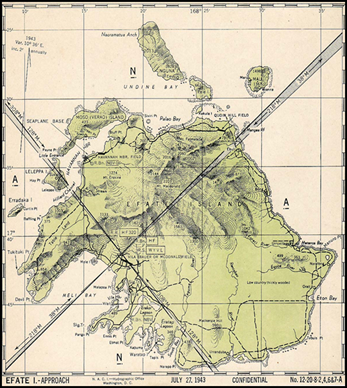
|
|
|
|
|
|
|
|
|
|
|
|
|
|
|
|
|
|
|
|
|
|
|
|
|
|
|
|
|
|
|
|
|
|
|
|
|
|
|
|
|
|
|
|
|
|
|
|
|
|
|
|
|
|
|
|
|
|
|
|
|
|
|
|
|
|
|
|
|
|
|
|
|
|
|
|
|
|
|
|
|
|
|
|
|
|
|
|
|
|
|
|
|
|
|
|
|
|
|
|
|
|
|
|
|
|
|
|
|
|
|
|
|
|
|
|
|
|
|
|
|
|
|
|
|
|
|
|
|
|
|
|
|
|
|
|
|
|
|
|
|
|
|
|
|
|
|
|
|
|
|
|
|
|
|
|
|
|
|
|
|
|
|
|
|
|
|
|
|
|
|
|
|
|
|
|
|
|
|
|
|
|
|
|
|
|
|
|
|
|
|
|
|
|
|
|
|
|
|
|
|
|
|
|
|
|
|
|
|
|
|
|
|
|
|
|
|
|
|
|
|
|
|
|
|
|
|
|
|
|
|
|
|
|
|
|
|
|
|
|
|
|
|
|
|
|
|
|
|
|
|
|
|
| WWII US
Navy Seabee map of Efate, New Hebrides |
|
|
|
|
|
|
|
|
|
|
| https://en.wikipedia.org/wiki/File:Map_of_approach_to_Efate_Island.jpg |
|
|
|
|
|
|
|
|
|
|
|
|
|
|
|
|
|
|
|
|
|
| Havannah
Harbor became a major staging area supporting the US Navy strategy leading up
to and during the Battle of the Coral Sea, in early May 1942. Of course,
American success in breaking Japanese diplomatic and naval codes in January
1942 also contributed significantly to thwarting permanent Japanese expansion
into the Coral Sea area. |
|
|
|
|
|
|
|
|
|
|
| https://www.awm.gov.au/encyclopedia/coral_sea/doc.asp |
|
|
|
|
|
|
|
|
|
|
| http://military.discovery.com/tv-shows/world-war-ii-in-color/videos/world-war-ii-in-color-battle-of-the-coral-sea.htm |
|
|
|
|
|
|
|
|
|
|
| http://www.vectorsite.net/ttcode_07.html |
|
|
|
|
|
|
|
|
|
|
| http://www.ibiblio.org/hyperwar/USMC/I/USMC-I-VI-1.html |
|
|
|
|
|
|
|
|
|
|
| https://www.ibiblio.org/hyperwar/USN/Building_Bases/bases-24.html |
|
|
|
|
|
|
|
|
|
|
| https://www.ibiblio.org/hyperwar/USN/ACTC/actc-18.html |
|
|
|
|
|
|
|
|
|
|
| Cronin,
Francis. Under The Southern Cross: The Saga of the
Americal Division. Boston: Americal |
|
|
|
|
|
|
|
|
|
|
| Division
Veterans Association, 1978. 15-16, 31-32. |
|
|
|
|
|
|
|
|
|
|
|
|
|
|
|
|
|
|
|
|
|
| Coincidentally,
in those early days of November 1943, the commander of the 2nd Marine Division’s
Combat Team Two, Colonel William Marshall, became ill. The planner of the upcoming battle, David
Shoup, was then promoted to colonel and given command of Combat Team Two. As Colonel Joseph H. Alexander, USMC (Ret.)
summed up this change of command in his ACROSS
THE REEF: The Marine Assault of Tarawa, (Darby, PA: Diane Publishing, 1996.), “The architect was about to become the
executor.” |
|
|
|
|
|
|
|
|
|
|
| http://www.ibiblio.org/hyperwar/USMC/USMC-M-Tarawa/USMC-M-Tarawa-1.html |
|
|
|
|
|
|
|
|
|
|
|
|
|
|
|
|
|
|
|
|
|
| After
about one week at Efate, Task Force 53 departed for parts unknown, to the
average Marine, anyway. Yes, there was
speculation about what the next engagement would be, even Wake Island, to
correct what the Japanese had done there in December 1941, shortly after
their surprise attack on Pearl Harbor.
Nothing was known for sure, though.
Out on the open ocean Task Force 53 could be for seen miles ahead and
behind and to each side. Transit to
their next destination was relatively routine, reports Elwin, with one
exception. |
|
|
|
|
|
|
|
|
|
|
|
|
|
|
|
|
|
|
|
|
|
| Several
days after leaving Efate, all Marine units were formally notified that Tarawa
and Abemama Atolls in the Gilbert Islands were their destination. Tarawa was
described as strongly defended, and Abemama (about 80 miles southeast of
Tarawa) was said to be of secondary importance and comparatively very lightly
defended. In fact, Tarawa was a
strategic and recently reinforced stronghold for the Japanese, and their
garrison there presented a threat to the security of supply and
communications lines between the United States and her allies in New Zealand
and Australia. |
|
|
|
|
|
|
|
|
|
|
|
|
|
|
|
|
|
|
|
|
|
| Where
in the vast Pacific Ocean is Tarawa? |
|
|
|
|
|
|
|
|
|
|
|
|
|
|
|
|
|
|
|
|
|
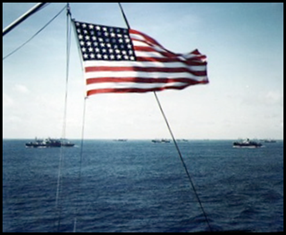
|
|
|
|
|
|
|
|
|
|
|
|
|
|
|
|
|
|
|
|
|
|
|
|
|
|
|
|
|
|
|
|
|
|
|
|
|
|
|
|
|
|
|
|
|
|
|
|
|
|
|
|
|
|
|
|
|
|
|
|
|
|
|
|
|
|
|
|
|
|
|
|
|
|
|
|
|
|
|
|
|
|
|
|
|
|
|
|
|
|
|
|
|
|
|
|
|
|
|
|
|
|
|
|
|
|
|
|
|
|
|
|
|
|
|
|
|
|
|
|
|
|
|
|
|
|
|
|
|
|
|
|
|
|
|
|
|
|
|
|
|
|
|
|
|
|
|
|
|
|
|
|
|
|
| A
representative photograph of a US Navy convoy in WW II |
|
|
|
|
|
|
|
|
|
|
| http://navyvets.tripod.com/sitebuildercontent/sitebuilderpictures/wwiiconvoy.jpg |
|
|
|
|
|
|
|
|
|
|
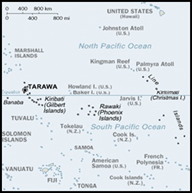
|
|
|
|
|
|
|
|
|
|
|
|
|
|
|
|
|
|
|
|
|
|
|
|
|
|
|
|
|
|
|
|
|
|
|
|
|
|
|
|
|
|
|
|
|
|
|
|
|
|
|
|
|
|
|
|
|
|
|
|
|
|
|
|
|
|
|
|
|
|
|
|
|
|
|
|
|
|
|
|
|
|
|
|
|
|
|
|
|
|
|
|
|
|
|
|
|
|
|
|
|
|
|
|
|
|
|
|
|
|
|
|
|
|
|
|
|
|
|
|
|
|
|
|
|
|
|
|
|
|
|
|
| Tarawa
Atoll and its general location in the Central Pacific |
|
|
|
|
|
|
|
|
|
|
| http://www.stamfordhistory.org/ww2_tarawa.htm |
|
|
|
|
|
|
|
|
|
|
|
|
|
|
|
|
|
|
|
|
|
| Marines
heard predictions that the upcoming amphibious assaults at Tarawa Atoll would
be conducted without difficulty because of many days of heavy pre-attack
bombardment by our naval and air support to neutralize enemy capabilities. Tragically, events at Tarawa unfolded in
ways that nobody predicted. |
|
|
|
|
|
|
|
|
|
|
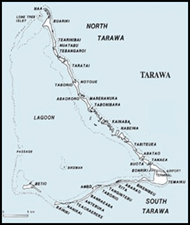
|
|
|
|
|
|
|
|
|
|
|
|
|
|
|
|
|
|
|
|
|
|
|
|
|
|
|
|
|
|
|
|
|
|
|
|
|
|
|
|
|
|
|
|
|
|
|
|
|
|
|
|
|
|
|
|
|
|
|
|
|
|
|
|
|
|
|
|
|
|
|
|
|
|
|
|
|
|
|
|
|
|
|
|
|
|
|
|
|
|
|
|
|
|
|
|
|
|
|
|
|
|
|
|
|
|
|
|
|
|
|
|
|
|
|
|
|
|
|
|
|
|
|
|
|
|
|
|
|
|
|
|
|
|
|
|
|
|
|
|
|
|
|
|
|
|
|
|
|
|
|
|
|
|
| Tarawa
Atoll: islet identities |
|
|
|
|
|
|
|
|
|
|
| Primary
battlefield site: Betio, at the
southwest end of the atoll |
|
|
|
|
|
|
|
|
|
|
| http://www.stamfordhistory.org/ww2_tarawa.htm |
|
|
|
|
|
|
|
|
|
|
|
|
|
|
|
|
|
|
|
|
|
| Betio
is the westernmost island on the lower leg of Tarawa Atoll, which is about 80
miles north of the equator and about 2,400 miles southwest of Honolulu,
Hawaii. Put differently, Tarawa Atoll
is about halfway between the Hawaiian Islands and Australia. Capture of this atoll and its then-recently
built runway would go a long way toward protecting the vital supply and
communications route between America and Australia and New Zealand. |
|
|
|
|
|
|
|
|
|
|
|
|
|
|
|
|
|
|
|
|
|
| Most of
the Battle of Tarawa was on Betio Island, whose small size is truly
remarkable: |
|
|
|
|
|
|
|
|
|
|
| about 1.5km2, which converts to about .58 of a square mile. By comparison,
Central Park in New York City is all of 3.4km2, or 1.31 square
miles. In short, Betio is about 44% the size of Central Park! |
|
|
|
|
|
|
|
|
|
|
| http://www.pacific.clgf.org.uk/betio-town-council-kiribati/ |
|
|
|
|
|
|
|
|
|
|
| http://www.britannica.com/EBchecked/topic/102556/Central-Park |
|
|
|
|
|
|
|
|
|
|
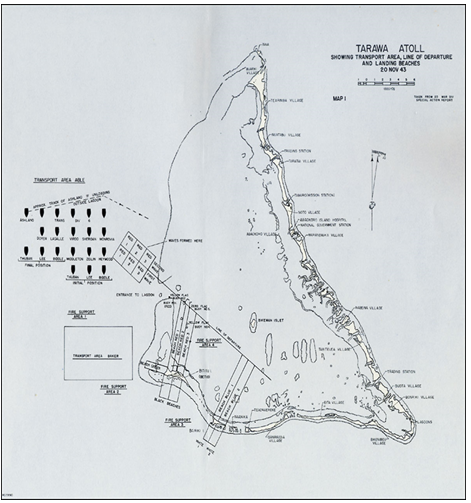
|
|
|
|
|
|
|
|
|
|
|
|
|
|
|
|
|
|
|
|
|
|
|
|
|
|
|
|
|
|
|
|
|
|
|
|
|
|
|
|
|
|
|
|
|
|
|
|
|
|
|
|
|
|
|
|
|
|
|
|
|
|
|
|
|
|
|
|
|
|
|
|
|
|
|
|
|
|
|
|
|
|
|
|
|
|
|
|
|
|
|
|
|
|
|
|
|
|
|
|
|
|
|
|
|
|
|
|
|
|
|
|
|
|
|
|
|
|
|
|
|
|
|
|
|
|
|
|
|
|
|
|
|
|
|
|
|
|
|
|
|
|
|
|
|
|
|
|
|
|
|
|
|
|
|
|
|
|
|
|
|
|
|
|
|
|
|
|
|
|
|
|
|
|
|
|
|
|
|
|
|
|
|
|
|
|
|
|
|
|
|
|
|
|
|
|
|
|
|
|
|
|
|
|
|
|
|
|
|
|
|
|
|
|
|
|
|
|
|
|
|
|
|
|
|
|
|
|
|
|
|
|
|
|
|
|
|
|
|
|
|
|
|
|
|
|
|
|
|
|
|
|
|
|
|
|
|
|
|
|
|
|
|
|
|
|
|
|
|
|
|
|
|
|
|
|
|
|
|
|
|
|
|
|
|
|
|
|
|
|
|
|
|
|
|
|
|
|
|
|
|
|
|
|
|
|
|
|
|
|
|
|
|
|
|
|
|
|
|
|
|
|
|
|
|
|
|
|
|
|
| Tarawa
Atoll … Betio is located at the southwest end of the islets |
|
|
|
|
|
|
|
|
|
|
| To the
northwest of Betio, this map shows the marshalling area for our transports |
|
|
|
|
|
|
|
|
|
|
| and
planned assault routes into the beaches on Betio and Bairiki. |
|
|
|
|
|
|
|
|
|
|
| http://www.ibiblio.org/hyperwar/USMC/USMC-M-Tarawa/maps/USMC-M-Tarawa-1.jpg |
|
|
|
|
|
|
|
|
|
|
|
|
|
|
|
|
|
|
|
|
|
| On 19
November 1943, Major General Julian C. Smith, the Commander of the 2nd Marine Division, had
the following message read to all officers and men: |
|
|
|
|
|
|
|
|
|
|
|
|
|
|
|
|
|
|
|
|
|
| “A
great offensive to destroy the enemy in the central Pacific has begun. American air, sea, and land forces, of
which this division is a part, initiate this offensive by seizing
Japanese-held atolls in the Gilbert Islands, which will be used for future
operations. The task assigned to us is
to capture the atolls of Tarawa and Abemama.
Army units of our Fifth Amphibious Corps are simultaneously attacking
Makin, 150 miles north of Tarawa. |
|
|
|
|
|
|
|
|
|
|
|
|
|
|
|
|
|
|
|
|
|
| For the
past 3 days Army, Navy, and Marine Corps aircraft have been carrying out
bombardment attacks on our objectives.
They are neutralizing, and will continue to neutralize, other Japanese
air bases adjacent to the Gilbert Islands. |
|
|
|
|
|
|
|
|
|
|
|
|
|
|
|
|
|
|
|
|
|
| Early
this morning combatant ships of our Navy bombarded Tarawa. Our Navy screens our operations and will
support our attack tomorrow morning with the greatest concentration of aerial
bombardment and naval gunfire in the history of warfare. |
|
|
|
|
|
|
|
|
|
|
|
|
|
|
|
|
|
|
|
|
|
| It will
remain with us until our objective is secured and our defenses are
established. Garrison forces are
already enroute to relieve us as soon as we have completed our job of
clearing our objective of Japanese forces. |
|
|
|
|
|
|
|
|
|
|
|
|
|
|
|
|
|
|
|
|
|
| This
division was especially chosen by the high command for the assault on Tarawa
because of its battle experience and its combat efficiency. Their confidence will not be betrayed. We are the first American troops to attack
a defended atoll. What we do here will
set a standard for all future operations in the central Pacific area. Observers from other Marine divisions and
from other branches of our armed services, as well as those of our allies,
have been detailed to witness our operations.
Representatives of the press are present. Our people back home are eagerly awaiting
news of our victories. |
|
|
|
|
|
|
|
|
|
|
| I know
that you are well-trained and fit for the tasks assigned to you. You will quickly overrun the Japanese
forces; you will decisively defeat and destroy the treacherous enemies of our
country; your success will add new laurels to the glorious tradition of our
troops. |
|
|
|
|
|
|
|
|
|
|
|
|
|
|
|
|
|
|
|
|
|
| Good
luck and God bless you all.” |
|
|
|
|
|
|
|
|
|
|
| http://www.ibiblio.org/hyperwar/USMC/USMC-M-Tarawa/USMC-M-Tarawa-J.html |
|
|
|
|
|
|
|
|
|
|
| http://www.2dmardiv.com/Major_General_Julian_C_Smith.html |
|
|
|
|
|
|
|
|
|
|
|
|
|
|
|
|
|
|
|
|
|
|
|
|
|
|
|
|
|
|
|
|
|
|
|
|
|
|
|
|
|
|
|
| And
then came D-Day at Tarawa: Saturday,
20 November 1943 … |
|
|
|
|
|
|
|
|
|
|
|
|
|
|
|
|
|
|
|
|
|
|
|
|
|
|
|
|
|
|
|
|
| At
about 0200 Marines receive their last call to ensure their equipment is in
order and then to proceed to the galley for a large, high protein
breakfast. At 0347 Heywood arrives off Betio, at Transport Area Able (a few miles to the
northwest of the northwest point of the island). Within 7 minutes of arrival (0354), the
order is given for “Away all boats and LVTs!” … meaning ‘commence manning and
offloading smaller boats.’ |
|
|
|
|
|
|
|
|
|
|
|
|
|
|
|
|
|
|
|
|
|
| In
darkness, debarkation begins as Marines begin crawling down cargo nets strung
down the sides of Heywood to
board amtracs (amphibious tractors) and LCVPs (Landing Craft,
Vehicle, Personnel). At 0540, before
nautical twilight begins, the first three waves of amtracs depart Heywood bound for the rendezvous
area … one step closer to the assault run into the north shore of Betio. At
0549, the period of low light, nautical twilight begins. The opening day for battle has begun. |
|
|
|
|
|
|
|
|
|
|
|
|
|
|
|
|
|
|
|
|
|
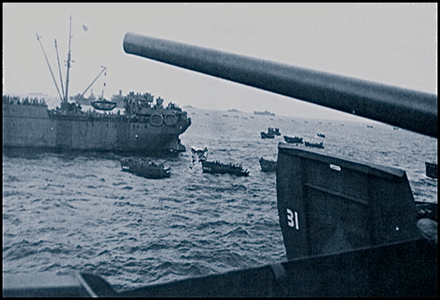
|
|
|
|
|
|
|
|
|
|
|
|
|
|
|
|
|
|
|
|
|
|
|
|
|
|
|
|
|
|
|
|
|
|
|
|
|
|
|
|
|
|
|
|
|
|
|
|
|
|
|
|
|
|
|
|
|
|
|
|
|
|
|
|
|
|
|
|
|
|
|
|
|
|
|
|
|
|
|
|
|
|
|
|
|
|
|
|
|
|
|
|
|
|
|
|
|
|
|
|
|
|
|
|
|
|
|
|
|
|
|
|
|
|
|
|
|
|
|
|
|
|
|
|
|
|
|
|
|
|
|
|
|
|
|
|
|
|
|
|
|
|
|
|
|
|
|
|
|
|
|
|
|
|
|
|
|
|
|
|
|
|
|
|
|
|
|
|
|
|
|
|
|
|
|
|
|
|
|
|
|
|
|
|
|
|
|
| USS Heywood (middle distance, left)
offloads an LVT-1 while debarking 2/8 assault troops |
|
|
|
|
|
|
|
|
|
|
| on
D-Day at Betio, 20 November 1943 |
|
|
|
|
|
|
|
|
|
|
| http://www.nps.gov/history/history/online_books/npswapa/extContent/usmc/pcn-190-003120-00/sec4a.htm |
|
|
|
|
|
|
|
|
|
|
|
|
|
|
|
|
|
|
|
|
|
| Based
on calculations aided by the U.S. Naval Observatory Astronomical Applications
Department, the next photograph was taken in the early daylight hours after
sunrise (0611) on D-Day, 20 November 1943.
This determination is based on the presence of full daylight, the
clear images in the distance and the number of smaller craft appearing in
foreground and distance. The stern of Heywood is seen on the left, middle distance offloading
an amtrac as Marines continue their disembarkation and commence their move to
the rendezvous point prior to the actual assault on Red Beach 3. |
|
|
|
|
|
|
|
|
|
|
|
|
|
|
|
|
|
|
|
|
|
| U.S. NAVAL
OBSERVATORY |
|
|
|
|
|
|
|
|
|
|
| ASTRONOMICAL APPLICATIONS DEPARTMENT |
|
|
|
|
|
|
|
|
|
|
| Sun
Data for Saturday, 20 November
1943 Universal Time + 12h |
|
|
|
|
|
|
|
|
|
|
|
|
|
|
|
|
|
|
|
|
|
| Betio,
Tarawa Atoll [1.2° N, 173° E] |
|
|
|
|
|
|
|
|
|
|
|
|
|
|
|
|
|
|
|
|
|
|
Begin civil twilight
0549 |
|
|
|
|
|
|
|
|
|
|
|
Sunrise
0611 |
|
|
|
|
|
|
|
|
|
|
| Sun
transit
1213 |
|
|
|
|
|
|
|
|
|
|
|
Sunset
1816 |
|
|
|
|
|
|
|
|
|
|
| End
civil twilight
1838 |
|
|
|
|
|
|
|
|
|
|
| http://aa.usno.navy.mil/data/docs/RS_OneDay.php |
|
|
|
|
|
|
|
|
|
|
|
|
|
|
|
|
|
|
|
|
|
| A
logical deduction is that, close to when the above photograph was taken, Elwin Hart was already in one of
the LCVPs seen in the above photograph waiting for his role in the battle to
begin. |
|
|
|
|
|
|
|
|
|
|
|
|
|
|
|
|
|
|
|
|
|
| On D-Day, the USS Colorado (BB-45) was active in pre-invasion bombardment that began in
the dark and continued to just before assault waves landed on Betio's
beaches. |
|
|
|
|
|
|
|
|
|
|
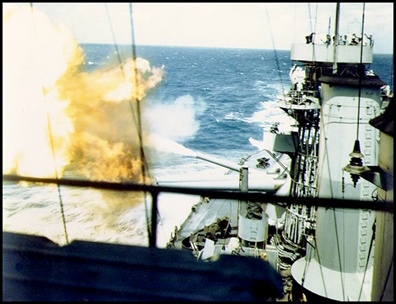
|
|
|
|
|
|
|
|
|
|
|
|
|
|
|
|
|
|
|
|
|
|
|
|
|
|
|
|
|
|
|
|
|
|
|
|
|
|
|
|
|
|
|
|
|
|
|
|
|
|
|
|
|
|
|
|
|
|
|
|
|
|
|
|
|
|
|
|
|
|
|
|
|
|
|
|
|
|
|
|
|
|
|
|
|
|
|
|
|
|
|
|
|
|
|
|
|
|
|
|
|
|
|
|
|
|
|
|
|
|
|
|
|
|
|
|
|
|
|
|
|
|
|
|
|
|
|
|
|
|
|
|
|
|
|
|
|
|
|
|
|
|
|
|
|
|
|
|
|
|
|
|
|
|
|
|
|
|
|
|
|
|
|
|
|
|
|
|
|
|
|
|
|
|
|
|
|
|
|
|
|
|
|
|
|
|
|
|
|
|
|
|
|
|
|
|
|
|
|
|
|
|
|
|
|
|
|
|
|
| USS
Colorado (BB-45) on station at Tarawa, fires afterdeck 16" guns morning
of 20 November 1943 |
|
|
|
|
|
|
|
|
|
|
| http://www.history.navy.mil/photos/images/k13000/k13670..jpg |
|
|
|
|
|
|
|
|
|
|
|
|
|
|
|
|
|
|
|
|
|
| Initially,
H-Hour (the specific time when an operation is planned to begin) is set for
0830, but it is postponed twice to 0900.
At 0910, amtracs bring the 3rd Battalion, 2nd Marines (3/2) to its landings on Red 1 (in the cove and close
to the Bird’s Beak), well to the west of the long Government Pier jutting out
into Tarawa’s lagoon. |
|
|
|
|
|
|
|
|
|
|
|
|
|
|
|
|
|
|
|
|
|
| Importantly
for pinpointing the time of Elwin’s arrival on shore, amtracs at 0917 bring
the 2nd
Battalion, 8th Marines (2/8) to its initial landings from on Red 3, to the
east side of and close to the long Government Pier. |
|
|
|
|
|
|
|
|
|
|
| http://www.ibiblio.org/hyperwar/USMC/USMC-C-Tarawa/ |
|
|
|
|
|
|
|
|
|
|
| http://www.ibiblio.org/hyperwar/USMC/USMC-M-Tarawa/USMC-M-Tarawa-2.html |
|
|
|
|
|
|
|
|
|
|
|
|
|
|
|
|
|
|
|
|
|
| After
the initial waves of amtracs come numerous waves of LCVPs (aka “Higgins
Boats”), but many of these landing craft become stranded on offshore reefs or
were blown out of the water by withering enemy fire. The majority of Marines are forced to wade
to shore; many are wounded or killed on the way; most survivors are stranded
behind a 5-foot palm-log seawall at water’s edge; chaos reigns supreme; no
unit cohesion exists; Marines keep arriving; casualties mount; and … |
|
|
|
|
|
|
|
|
|
|
|
|
|
|
|
|
|
|
|
|
|
| In the
second wave of those LCVPs heading for Red 3, just to the east side of the
long Government Pier, are several Marine radio operators from H&S, 2/8,
and one of those men is our 19-year old Sergeant Elwin Hart! |
|
|
|
|
|
|
|
|
|
|
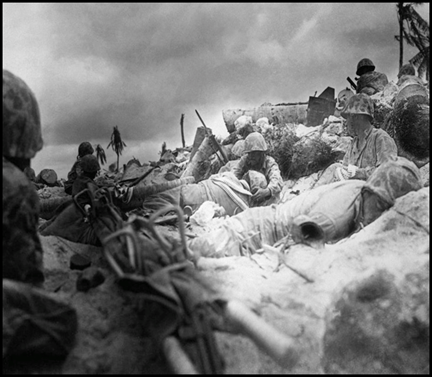
|
|
|
|
|
|
|
|
|
|
|
|
|
|
|
|
|
|
|
|
|
|
|
|
|
|
|
|
|
|
|
|
|
|
|
|
|
|
|
|
|
|
|
|
|
|
|
|
|
|
|
|
|
|
|
|
|
|
|
|
|
|
|
|
|
|
|
|
|
|
|
|
|
|
|
|
|
|
|
|
|
|
|
|
|
|
|
|
|
|
|
|
|
|
|
|
|
|
|
|
|
|
|
|
|
|
|
|
|
|
|
|
|
|
|
|
|
|
|
|
|
|
|
|
|
|
|
|
|
|
|
|
|
|
|
|
|
|
|
|
|
|
|
|
|
|
|
|
|
|
|
|
|
|
|
|
|
|
|
|
|
|
|
|
|
|
|
|
|
|
|
|
|
|
|
|
|
|
|
|
|
|
|
|
|
|
|
|
|
|
|
|
|
|
|
|
|
|
|
|
|
|
|
|
|
|
|
|
|
|
|
|
|
|
|
|
|
|
|
|
|
|
|
|
|
|
|
|
|
|
|
|
|
|
|
|
|
|
|
|
|
|
| Some of
the Marine’s (their health status unknown) seeking cover behind the palm log
wall on Red 3 |
|
|
|
|
|
|
|
|
|
|
| http://worldhistoryproject.org/photos/d04d9458f50594734420c6d4b3362e3a |
|
|
|
|
|
|
|
|
|
|
|
|
|
|
|
|
|
|
|
|
|
| Importantly
for pinpointing the time of Elwin’s arrival on shore, amtracs at 0917 bring
the 2nd
Battalion, 8th Marines (2/8) to its initial landings from on Red 3, to the
east side of and close to the long Government Pier. |
|
|
|
|
|
|
|
|
|
|
| http://www.ibiblio.org/hyperwar/USMC/USMC-C-Tarawa/ |
|
|
|
|
|
|
|
|
|
|
| http://www.ibiblio.org/hyperwar/USMC/USMC-M-Tarawa/USMC-M-Tarawa-2.html |
|
|
|
|
|
|
|
|
|
|
|
|
|
|
|
|
|
|
|
|
|
| Elwin
relates that “… when our LCVP came to a crunching halt on the reef about 800
yards out, we landed right behind the LCVP carrying Major “Jungle Jim” Crowe,
the commanding officer of our 2nd Battalion, 8th Marines; Norm Hatch (the well-known Marine Corps
photographer); and some others.” Many
years passed between the time of this landing and the time when Elwin learned
that Norm Hatch had landed in the LCVP right ahead of his own LCVP. By coincidence, he and Norm Hatch were
neighbors in Alexandria, Virginia between 1967 and 1971. Neither Marine had known the other one had
even been on Tarawa, but by piecing together the story of who did what at
what moment on D-Day on Tarawa, these two men can deduce the landing sequence
just described. Elwin Hart, email to author, August 8, 2013. |
|
|
|
|
|
|
|
|
|
|
|
|
|
|
|
|
|
|
|
|
|
| Because
it is known with a high degree of confidence that Major “Jungle Jim” Crowe
(CO of LT 2/8) had advanced to the eastern taxiway of the airfield by 0945,
one can calculate Elwin’s arrival time on Red 3 at about 0915. Previously cited action reports of the
progress of Heywood amtracs and LCVPs fill in the blanks. Besides, after a passage of nearly 70
years, Elwin acknowledges that his exact arrival time cannot be precisely
determined. Besides, arriving on the beach while the enemy is trying to kill
everyone struggling to get to shore does not permit even a momentary glance
at one’s watch! |
|
|
|
|
|
|
|
|
|
|
| http://www.ibiblio.org/hyperwar/USMC/USMC-C-Tarawa |
|
|
|
|
|
|
|
|
|
|
|
|
|
|
|
|
|
|
|
|
|

|
|
|
|
|
|
|
|
|
|
|
|
|
|
|
|
|
|
|
|
|
|
|
|
|
|
|
|
|
|
|
|
|
|
|
|
|
|
|
|
|
|
|
|
|
|
|
|
|
|
|
|
|
|
|
|
|
|
|
|
|
|
|
|
|
|
|
|
|
|
|
|
|
|
|
|
|
|
|
|
|
|
|
|
|
|
|
|
|
|
|
|
|
|
|
|
|
|
|
|
|
|
|
|
|
|
|
|
|
|
|
|
|
|
|
|
|
|
|
|
|
|
|
|
|
|
|
|
|
|
|
|
|
|
|
|
|
|
|
|
|
|
|
|
|
|
|
|
|
|
|
|
|
|
|
|
|
|
|
|
|
|
|
|
|
|
|
|
|
|
|
|
|
|
|
|
|
|
|
|
|
|
|
|
|
|
|
| Ebb
Tide, Tarawa |
|
|
|
|
|
|
|
|
|
|
| http://www.history.navy.mil/ac/amphib/88159dq.jpg |
|
|
|
|
|
|
|
|
|
|
| http://www.history.navy.mil/ac/artist/e/eby/eby5.htm |
|
|
|
|
|
|
|
|
|
|
|
|
|
|
|
|
|
|
|
|
|
| Kerr
Eby, the combat artist who created the preceding image, wrote of the D-Day
landings at Tarawa … “The attack was at flood tide and when the sea went out
over the reef, this and much besides was left. In two wars, this I think is
the most frightful thing I have seen, perhaps because of its isolation on the
reef.“ |
|
|
|
|
|
|
|
|
|
|
|
|
|
|
|
|
|
|
|
|
|
| Elwin
describes mass confusion, lots of wounded Marines caught on barbed wire and
lots of enemy mortar fire. Eby's
drawing is terribly realistic! |
|
|
|
|
|
|
|
|
|
|
|
|
|
|
|
|
|
|
|
|
|
| Elwin’s
own memories are vividly corroborated by narratives in the following links - which contain graphic content: |
|
|
|
|
|
|
|
|
|
|
| http://www.history.navy.mil/ac/amphib/88159dq.jpg |
|
|
|
|
|
|
|
|
|
|
| https://www.youtube.com/watch?v=5ZA9tITO7mc |
|
|
|
|
|
|
|
|
|
|
| https://www.youtube.com/watch?v=Bal-n-gWb8U |
|
|
|
|
|
|
|
|
|
|
|
|
|
|
|
|
|
|
|
|
|
| Elwin
reports that, like many other Marines, he was equipped with his carbine,
ammunition belts, two canteens of water, his pack with rations, and his
helmet. Unlike most other Marines,
though, Elwin also brought a 50-pound TBX radio transceiver to Red 3. His
buddy PFC “Eddie” Fisher from Texas carried the generator and the antenna
bag, and his other buddy PFC Clarence Backus from Danville, Illinois carried
the accessory box. In the chaos of
trying to stay alive and get to shore, though, PFC Backus got separated from
Elwin and “Eddie.” |
|
|
|
|
|
|
|
|
|
|
|
|
|
|
|
|
|
|
|
|
|
| Elwin
reports that PFC “Eddie” Fisher and I found our way to “an abandoned Japanese
mortar position just to the left of the long pier sticking out several
hundred yards into the water. It was
probably within 30-40 yards from the waterline and not much further from the
end of the pier. The front part of the
dugout was some 10 ft by 10 ft and open on top with log walls on three
sides. The back end was about the same
size but was covered with a log roof.
That is where we stuck the antenna up thru and got a bullet hole thru
it sometime during the battle..” |
|
|
|
|
|
|
|
|
|
|
| Elwin
Hart, email to author, December 6, 2012. |
|
|
|
|
|
|
|
|
|
|
| Elwin
Hart, email to author, September 1, 2013. |
|
|
|
|
|
|
|
|
|
|
|
|
|
|
|
|
|
|
|
|
|
| There,
Elwin set up his TBX. The third member
of his team, PFC Clarence Backus, was missing and Clarence was responsible
for bringing the accessory bag to shore.
Clarence was later found, struck down with a bullet wound clear
through his neck. Elwin took the
accessory bag and, with the help of another Marine, they got Clarence aboard
a landing craft for evacuation. |
|
|
|
|
|
|
|
|
|
|
|
|
|
|
|
|
|
|
|
|
|
| Elwin
states that he was in charge of a three-man TBX radio team, operating on the
Regimental Landing Team 2 (RLT-2) Command Net. This was the radio net linking the 2nd Marine Regiment with
its various organic and attached infantry, artillery and logistic support
units under their command. The primary
focus of Elwin’s duties that morning was to set up his radio and maintain
unit-to-unit communications on the RLT-2 Command Net. Even though his radio team was from 2/8,
they were attached to RLT-2, which, for whatever reason, never came on air
due to complications resulting from the chaos of landing where they did. Elwin Hart,
email to author, September 1, 2013. |
|
|
|
|
|
|
|
|
|
|
|
|
|
|
|
|
|
|
|
|
|
| To put
a fine point on tactical radio operations at this time, a key aspect of
tactical radio operations at this point - as Elwin recalls them - needs to be
emphasized: |
|
|
|
|
|
|
|
|
|
|
|
|
|
|
|
|
|
|
|
|
|
| “With
2/8 attached to RLT-2, that means RLT-2 was our superior headquarters and we
reported to them and not to the 8th Marines. Therefore we had to operate on
their two radio nets, the Command and Tactical Nets. I had the TBX team
assigned to operate on the RLT-2 Command Net, which had been my assignment
even in the practice landings preceding the actual landing. I don't
know if the Tactical Net ever became operational. |
|
|
|
|
|
|
|
|
|
|
|
|
|
|
|
|
|
|
|
|
|
| I
must assume that RLT-2 chose to land on Red 2 since it was the center landing
beach. They landed behind one of their own battalions, either BLT 1/2 or 2/2
as I recall. Both of the assault BLTs from RLT-2 were also supposed to be on
the RLT-2 Command Net as was RLT-2, but they never got on the air, nor did
RLT-2. Division Headquarters on the Maryland came up on the net probably
because they couldn't raise any of the three Regiments (RLT-2, 6 or 8).
Division was not supposed to be on the RLT-2 Command net, but fortunately
they tuned around and found me trying to raise RLT-2. I was physically
located in 2/8 territory; in fact, my Battalion CP was between my location
and that of RLT-2 Headquarters to the best of my knowledge. |
|
|
|
|
|
|
|
|
|
|
|
|
|
|
|
|
|
|
|
|
|
| There
were two TBX teams in each battalion. Our other team was under Cpl Jim
Martin from Springville, Alabama, my best buddy throughout our 30 months
together. He operated on the Naval Gunfire Net and directed the fire of two
destroyers in the lagoon, very successfully in my opinion. |
|
|
|
|
|
|
|
|
|
|
|
|
|
|
|
|
|
|
|
|
|
| Once in
communication with Division Hq, my main function was to act as a relay
between RLT-2 (Col Dave Shoup) and Division Hq on the Maryland.” |
|
|
|
|
|
|
|
|
|
|
| Elwin
Hart, email to author, September 1, 2013. |
|
|
|
|
|
|
|
|
|
|
|
|
|
|
|
|
|
|
|
|
|
| As soon
as he could get on the air, Elwin faces two unexpected situations requiring
his personal attention: |
|
|
|
|
|
|
|
|
|
|
|
|
|
|
|
|
|
|
|
|
|
| 1) RLT-2 does not respond to his attempts
to contact them. |
|
|
|
|
|
|
|
|
|
|
|
|
|
|
|
|
|
|
|
|
|
| 2) He hears an “unknown station” repeatedly
trying to contact anyone on the beach. |
|
|
|
|
|
|
|
|
|
|
|
|
|
|
|
|
|
|
|
|
|
| How
did Elwin respond to the call from the unknown station? |
|
|
|
|
|
|
|
|
|
|
|
|
|
|
|
|
|
|
|
|
|
| Wading
in to Red 3, Elwin had met his Battalion Communication Officer (BCO) who,
having received a severe leg wound, was returning to a landing craft for
evacuation. Elwin quickly realized
that the BCO’s injury presented Elwin with a major problem. Although Elwin already had the
authentication tables for D-Day, Elwin asked his BCO for the authentication
tables for the days ahead. For some
reason that Elwin says he will neverunderstand, his BCO refused the
request. Elwin also says that his BCO
must have believed he would be returning as soon as he was able and therefore
saw no reason to turn over the authentication tables to Elwin at that
point. In any case, that incident is
what was foreshadowed on Page 2 of this report. |
|
|
|
|
|
|
|
|
|
|
|
|
|
|
|
|
|
|
|
|
|
| Elwin
states that he had to have a secure way of communicating with other stations,
and his Louisiana accent ensured that he passed the authentication test by
the “unknown station.” During the
process of proving to the satisfaction of the “unknown station” that he
really was who he said he was, Elwin learned that the “unknown station” was
actually the radio team for
Major General Julian Constable Smith, commanding general of the 2nd Marine Division on
board the battleship U.S.S. Maryland! I still think, Elwin
notes, that Division Headquarters came up on our frequency, probably because
they could not get anyone on the Division Command Net. |
|
|
|
|
|
|
|
|
|
|
| Elwin
Hart, email to author, June 30, 2013. |
|
|
|
|
|
|
|
|
|
|
| Elwin
Hart, email to author, September 1, 2013. |
|
|
|
|
|
|
|
|
|
|
|
|
|
|
|
|
|
|
|
|
|
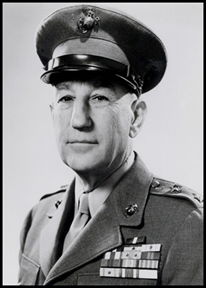
|
|
|
|
|
|
|
|
|
|
|
|
|
|
|
|
|
|
|
|
|
|
|
|
|
|
|
|
|
|
|
|
|
|
|
|
|
|
|
|
|
|
|
|
|
|
|
|
|
|
|
|
|
|
|
|
|
|
|
|
|
|
|
|
|
|
|
|
|
|
|
|
|
|
|
|
|
|
|
|
|
|
|
|
|
|
|
|
|
|
|
|
|
|
|
|
|
|
|
|
|
|
|
|
|
|
|
|
|
|
|
|
|
|
|
|
|
|
|
|
|
|
|
|
|
|
|
|
|
|
|
|
|
|
|
|
|
|
|
|
|
|
|
|
|
|
|
|
|
|
|
|
|
|
|
|
|
|
|
|
|
|
|
|
|
|
|
|
|
|
|
|
|
|
|
|
|
|
|
|
|
|
|
|
|
|
|
| Major
General Julian Constable Smith |
|
|
|
|
|
|
|
|
|
|
| (11
September 1885 - 5 November 1975) |
|
|
|
|
|
|
|
|
|
|
| https://www.mcu.usmc.mil/historydivision/PublishingImages/Biography%20Images/hi/smith_jc.jpg |
|
|
|
|
|
|
|
|
|
|
|
|
|
|
|
|
|
|
|
|
|
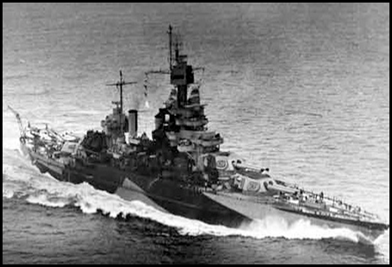
|
|
|
|
|
|
|
|
|
|
|
|
|
|
|
|
|
|
|
|
|
|
|
|
|
|
|
|
|
|
|
|
|
|
|
|
|
|
|
|
|
|
|
|
|
|
|
|
|
|
|
|
|
|
|
|
|
|
|
|
|
|
|
|
|
|
|
|
|
|
|
|
|
|
|
|
|
|
|
|
|
|
|
|
|
|
|
|
|
|
|
|
|
|
|
|
|
|
|
|
|
|
|
|
|
|
|
|
|
|
|
|
|
|
|
|
|
|
|
|
|
|
|
|
|
|
|
|
|
|
|
|
|
|
|
|
|
|
|
|
|
|
|
|
|
|
|
|
|
|
|
|
|
|
|
|
|
|
|
|
|
|
|
|
|
|
|
|
|
|
|
|
|
|
|
|
| USS Maryland (‘Fighting Mary’) BB-46 |
|
|
|
|
|
|
|
|
|
|
| http://www.historycentral.com/navy/battle/Maryland.html |
|
|
|
|
|
|
|
|
|
|
|
|
|
|
|
|
|
|
|
|
|
| What
occurred over the next three terrifying days ranks in the minds of military
historians as one of the most intense and costly engagements in Marine Corps’
history. By 23 November, all serious
enemy resistance on Betio ceased. Of
the original 4,500 Japanese defenders, all were dead except for roughly 146
Japanese and a few Korean prisoners. A
handful of Japanese combatants were captured toward the end before they could
mount further attacks or commit suicide. |
|
|
|
|
|
|
|
|
|
|
| http://tarawaontheweb.org/caschart.htm |
|
|
|
|
|
|
|
|
|
|
| http://www.usmchangout.com/military/branches/usmc/conflicts/wwii.htm#.UhrJgLzlUmI |
|
|
|
|
|
|
|
|
|
|
| http://www.ibiblio.org/hyperwar/USMC/USMC-M-Tarawa/USMC-M-Tarawa-5.html |
|
|
|
|
|
|
|
|
|
|
|
|
|
|
|
|
|
|
|
|
|
| By 27
November, all enemy resistance on Tarawa Atoll ceased, when the Battle of
Buariki (on the northernmost islet of Tarawa Atoll) was concluded, when the 2nd Battalion, 6th Marines killed the
last 175 of the enemy who had fled the battlefield on Betio. |
|
|
|
|
|
|
|
|
|
|
| http://www.ibiblio.org/hyperwar/USMC/USMC-M-Tarawa/USMC-M-Tarawa-6.html |
|
|
|
|
|
|
|
|
|
|
| John
Wukovits, One
Square Mile of Hell. (New York: New American Library,
2006), 233-234. |
|
|
|
|
|
|
|
|
|
|
| Joseph
H. Alexander, Utmost
Savagery: The Three Days of Tarawa. (Annapolis: Naval
Institute Press, 1995), 216. |
|
|
|
|
|
|
|
|
|
|
|
|
|
|
|
|
|
|
|
|
|
|
|
|
|
|
|
|
|
|
|
|
|
|
|
|
|
|
|
|
|
|
|
| What
was Elwin’s primary ‘tool of his trade’ while at Tarawa? |
|
|
|
|
|
|
|
|
|
|
|
|
|
|
|
|
|
|
|
|
|
| That
would be the TBX-8 … a transportable two-way HF radio set that receives in
the 2.0mhz to 8.1mhz range and transmits in the 2.0mhz to 6.0mhz range, with
the transmitter and the receiver combined in one unit. |
|
|
|
|
|
|
|
|
|
|
|
|
|
|
|
|
|
|
|
|
|
|
|
|
|
|
|
|
|
|
|
|
|
| |
|
|
|
|
|
|
|
|
|
|
|
|
|
|
|
|
|
|
|
|
|
|
|
|
|
|
|
|
|
|
|
|
|
|
|
|
|
|
|
|
|
|
|
|
|
|
|
|
|
|
|
|
|
|
|
|
|
|
|
|
|
|
|
|
|
|
|
|
|
|
|
|
|
|
|
|
|
|
|
|
|
|
|
|
|
|
|
| TBX-8 (CGO-43060)
transceiver TBX-8 transceiver
interior |
|
|
|
|
|
|
|
|
|
|
| http://navy-radio.com/xmtrs/ww2/tbx/tbx8-110504-02.jpg |
|
|
|
|
|
|
|
|
|
|
| http://www.virhistory.com/navy/xmtrs/ww2/tbx/tbx8-110420-02.jpg |
|
|
|
|
|
|
|
|
|
|
|
|
|
|
|
|
|
|
|
|
|
|
|
|
|
|
|
|
|
|
|
|
|
|
|
|
|
|
|
|
|
|
|
|
|
|
|
|
|
|
|
|
|
|
|
|
|
|
|
|
|
|
|
|
|
|
|
|
|
|
|
|
|
|
|
|
|
|
|
|
|
|
|
|
|
|
|
|
|
|
|
|
|
|
|
|
|
|
|
|
|
|
|
|
|
|
|
|
|
|
|
|
|
|
|
|
|
|
|
|
|
| TBX-8 transceiver
case
TBX-8 Morse Code
transmission key |
|
|
|
|
|
|
|
|
|
|
| Elwin carried
such a case. |
|
|
|
|
|
|
|
|
|
|
| http://www.virhistory.com/navy/xmtrs/ww2/tbx/tbx8-110525-04.jpg |
|
|
|
|
|
|
|
|
|
|
| http://www.virhistory.com/navy/xmtrs/ww2/tbx/tbx-key-1212-01.jpg |
|
|
|
|
|
|
|
|
|
|
|
|
|
|
|
|
|
|
|
|
|
| Elwin’s
TBX-8 had a 30-mile range for Morse code transmission and a 15-mile range for
phone transmission. It was built by
either Garod Radio Corporation of Brooklyn, New York or General Electric of
Schenectady, New York. This sort of
radio was a major focus of Elwin’s twelve-week Radio Telegraph Operators
Course at MCRD San Diego during the fall of 1941. With the TBX-8, Elwin says he never changed
operating frequencies during the battle, and he never detected any attempts
by the enemy to intercept his squad’s signals. |
|
|
|
|
|
|
|
|
|
|
| http://home.comcast.net/~californiaphotos/TBX-8.html |
|
|
|
|
|
|
|
|
|
|
|
|
|
|
|
|
|
|
|
|
|
|
|
|
|
|
|
|
|
|
|
|
|
|
|
|
|
|
|
|
|
|
|
|
|
|
|
|
|
|
|
|
|
|
|
|
|
|
|
|
|
|
|
|
|
|
|
|
|
|
|
|
|
|
|
|
|
|
|
|
|
|
|
|
|
|
|
|
|
|
|
|
|
|
|
|
|
|
|
|
|
|
|
|
|
|
|
|
|
|
|
|
|
|
|
|
|
|
|
|
|
|
|
|
|
|
|
|
|
|
|
|
| TBX-8 control
box
TBX-8 control box
interior |
|
|
|
|
|
|
|
|
|
|
| http://home.comcast.net/~californiaphotos/TBX-8.html |
|
|
|
|
|
|
|
|
|
|
|
|
|
|
|
|
|
|
|
|
|
|
|
|
|
|
|
|
|
|
|
|
|
| |
|
|
|
|
|
|
|
|
|
|
|
|
|
|
|
|
|
|
|
|
|
|
|
|
|
|
|
|
|
|
|
|
|
|
|
|
|
|
|
|
|
|
|
|
|
|
|
|
|
|
|
|
|
|
|
|
|
|
|
|
|
|
|
|
|
|
|
|
|
|
|
|
|
|
|
|
|
|
|
|
|
|
|
|
|
|
|
|
|
|
|
|
|
|
|
|
|
|
|
|
|
|
|
|
|
|
|
|
|
|
|
|
|
|
|
|
|
|
|
|
| TBX telephone-style handset TBX transceiver
earphone headset |
|
|
|
|
|
|
|
|
|
|
| http://home.comcast.net/~californiaphotos/TBX-8.html |
|
|
|
|
|
|
|
|
|
|
|
|
|
|
|
|
|
|
|
|
|
|
|
|
|
|
|
|
|
|
|
|
|
| |
|
|
|
|
|
|
|
|
|
|
|
|
|
|
|
|
|
|
|
|
|
|
|
|
|
|
|
|
|
|
|
|
|
|
|
|
|
|
|
|
|
|
|
|
|
|
|
|
|
|
|
|
|
|
|
|
|
|
|
|
|
|
|
|
|
|
|
|
|
|
|
|
|
|
|
|
|
|
|
|
|
|
|
|
|
|
|
|
|
|
|
|
|
|
|
|
|
|
| Accessory / Dry
Battery box exterior Accessory / Dry Battery box
interior |
|
|
|
|
|
|
|
|
|
|
| This
item was carried to shore |
|
|
|
|
|
|
|
|
|
|
| http://home.comcast.net/~californiaphotos/TBX-8.html |
|
|
|
|
|
|
|
|
|
|
| http://navy-radio.com/xmtrs/ww2/tbx/tbx8-acc-03.jpg |
|
|
|
|
|
|
|
|
|
|
|
|
|
|
|
|
|
|
|
|
|
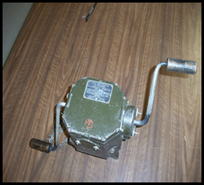
|
|
|
|
|
|
|
|
|
|
|
|
|
|
|
|
|
|
|
|
|
|
|
|
|
|
|
|
|
|
|
|
|
|
|
|
|
|
|
|
|
|
|
|
|
|
|
|
|
|
|
|
|
|
|
|
|
|
|
|
|
|
|
|
|
|
|
|
|
|
|
|
|
|
|
|
|
|
|
|
|
|
|
|
|
|
|
|
|
|
|
|
|
|
|
|
|
|
|
|
|
|
|
|
|
|
|
|
|
|
|
|
|
|
|
|
|
|
|
|
|
| TBX-8 Hand-Crank
Generator (CBF-21263-B) (detachable handles) |
|
|
|
|
|
|
|
|
|
|
| This
was used for the transmitter; dry batteries were used for the receiver. |
|
|
|
|
|
|
|
|
|
|
| With
two of Elwin’s squad down, he directed a nearby wireman to operate the
generator. |
|
|
|
|
|
|
|
|
|
|
| http://www.virhistory.com/navy/xmtrs/ww2/tbx/tbx-gen-110427-01_small.jpg |
|
|
|
|
|
|
|
|
|
|
|
|
|
|
|
|
|
|
|
|
|
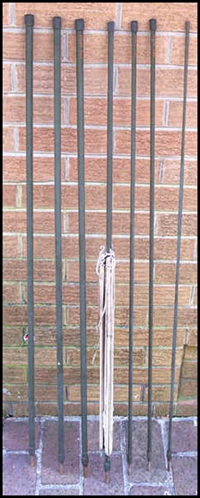
|
|
|
|
|
|
|
|
|
|
|
|
|
|
|
|
|
|
|
|
|
|
|
|
|
|
|
|
|
|
|
|
|
|
|
|
|
|
|
|
|
|
|
|
|
|
|
|
|
|
|
|
|
|
|
|
|
|
|
|
|
|
|
|
|
|
|
|
|
|
|
|
|
|
|
|
|
|
|
|
|
|
|
|
|
|
|
|
|
|
|
|
|
|
|
|
|
|
|
|
|
|
|
|
|
|
|
|
|
|
|
|
|
|
|
|
|
|
|
|
|
|
|
|
|
|
|
|
|
|
|
|
|
|
|
|
|
|
|
|
|
|
|
|
|
|
|
|
|
|
|
|
|
|
|
|
|
|
|
|
|
|
|
|
|
|
|
|
|
|
|
|
|
|
|
|
|
|
|
|
|
|
|
|
|
|
|
|
|
|
|
|
|
|
|
|
|
|
|
|
|
|
|
|
|
|
|
|
|
|
|
|
|
|
|
|
|
|
|
|
|
|
|
|
|
|
|
|
|
|
|
|
|
|
|
|
|
|
|
|
|
|
|
|
|
|
|
|
|
|
|
|
|
|
|
|
|
|
|
|
|
|
|
|
|
|
|
|
|
|
|
|
|
|
|
|
|
|
|
|
|
|
|
|
|
|
|
|
|
|
|
|
|
|
|
|
|
|
|
|
|
|
|
|
|
|
|
|
|
|
|
|
|
|
|
|
|
|
|
| TBX-8
stackable antennae sections |
|
|
|
|
|
|
|
|
|
|
| PFC
“Eddie” Fisher carried the generator and the antenna bag. |
|
|
|
|
|
|
|
|
|
|
| During
the battle, one of these sections was damaged by a bullet. |
|
|
|
|
|
|
|
|
|
|
| http://www.virhistory.com/navy/xmtrs/tbx.htm |
|
|
|
|
|
|
|
|
|
|
|
|
|
|
|
|
|
|
|
|
|

|
|
|
|
|
|
|
|
|
|
|
|
|
|
|
|
|
|
|
|
|
|
|
|
|
|
|
|
|
|
|
|
|
|
|
|
|
|
|
|
|
|
|
|
|
|
|
|
|
|
|
|
|
|
|
|
|
|
|
|
|
|
|
|
|
|
|
|
|
|
|
|
|
|
|
|
|
|
|
|
|
|
|
|
|
|
|
|
|
|
|
|
|
|
|
|
|
|
|
|
|
|
|
|
|
|
|
|
|
|
|
|
|
|
|
|
|
|
|
|
|
|
|
|
|
|
|
|
|
|
|
|
|
|
|
|
|
|
|
|
|
|
|
|
|
|
|
|
|
|
|
|
|
|
| Garod TBX-8
transceiver and accessories
storage trunk |
|
|
|
|
|
|
|
|
|
|
| http://www.cryptologicfoundation.org/content/Direct-Museum-Support/acquisition_arch.shtml |
|
|
|
|
|
|
|
|
|
|
|
|
|
|
|
|
|
|
|
|
|
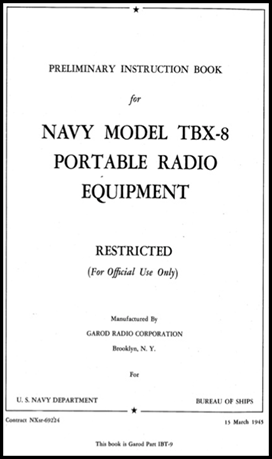
|
|
|
|
|
|
|
|
|
|
|
|
|
|
|
|
|
|
|
|
|
|
|
|
|
|
|
|
|
|
|
|
|
|
|
|
|
|
|
|
|
|
|
|
|
|
|
|
|
|
|
|
|
|
|
|
|
|
|
|
|
|
|
|
|
|
|
|
|
|
|
|
|
|
|
|
|
|
|
|
|
|
|
|
|
|
|
|
|
|
|
|
|
|
|
|
|
|
|
|
|
|
|
|
|
|
|
|
|
|
|
|
|
|
|
|
|
|
|
|
|
|
|
|
|
|
|
|
|
|
|
|
|
|
|
|
|
|
|
|
|
|
|
|
|
|
|
|
|
|
|
|
|
|
|
|
|
|
|
|
|
|
|
|
|
|
|
|
|
|
|
|
|
|
|
|
|
|
|
|
|
|
|
|
|
|
|
|
|
|
|
|
|
|
|
|
|
|
|
|
|
|
|
|
|
|
|
|
|
|
|
|
|
|
|
|
|
|
|
|
|
|
|
|
|
|
|
|
|
|
|
|
|
|
|
|
|
|
|
|
|
|
|
|
|
|
|
|
|
|
|
|
|
|
|
|
|
|
|
|
|
|
|
|
|
|
|
|
|
|
|
|
|
|
|
|
|
|
|
|
|
|
|
|
|
|
|
|
|
|
|
|
|
|
|
|
|
| A newer
version of the manual that Elwin Hart and his team knew so well. |
|
|
|
|
|
|
|
|
|
|
| http://bama.edebris.com/manuals/military/tbx8man/ |
|
|
|
|
|
|
|
|
|
|
| Complete manual available at http://bama.edebris.com/manuals/military/tbx8man/ |
|
|
|
|
|
|
|
|
|
|
|
|
|
|
|
|
|
|
|
|
|
| What do
TBX transceivers sound like when operating?
Access the following link. |
|
|
|
|
|
|
|
|
|
|
| https://www.youtube.com/watch?v=rU-bqz0xR98 |
|
|
|
|
|
|
|
|
|
|
|
|
|
|
|
|
|
|
|
|
|
| For a
two-part introduction and demonstration of TBX transceivers … |
|
|
|
|
|
|
|
|
|
|
| Part
1:
https://www.youtube.com/watch?v=G_4PVvzzJVE |
|
|
|
|
|
|
|
|
|
|
| Part
2:
https://www.youtube.com/watch?v=urQrhoveD1c |
|
|
|
|
|
|
|
|
|
|
|
|
|
|
|
|
|
|
|
|
|
| In the
context of his combat duty performance during the Battle of Tarawa, Elwin’s
traits of keen analytic perception; courageous initiative and follow-through;
improvisation; and sustained dedication to mission quality surfaced probably
more clearly than they ever had to that point in his life. As will be seen, such traits surfaced
frequently throughout Elwin’s career in the Marine Corps. |
|
|
|
|
|
|
|
|
|
|
|
|
|
|
|
|
|
|
|
|
|
| These
traits do not just mysteriously surface in a spontaneous manner without
reason. In large part, they are latent
and a product of good upbringing. In
Elwin’s case, the origin of these traits comes from several sources: the cultural values of courage
and wisdom taught by his parents and embedded in
his experiences at the Shreveport, Louisiana high school from which he
graduated; his training at San Diego; as well as his learning experiences at
American Samoa and Guadalcanal. In
short, Elwin repeatedly has shown his abilities to be an astute learner of
all life’s experiences, and this will become increasingly evident as he
progressed through his 33-year career in the Marine Corps. |
|
|
|
|
|
|
|
|
|
|
|
|
|
|
|
|
|
|
|
|
|
|
|
|
|
|
|
|
|
|
|
|
| - - - -
- - - - - - - - - - - - - - - - - - - - - - - - - - |
|
|
|
|
|
|
|
|
|
|
|
|
|
|
|
|
|
|
|
|
|
| Begun
and finished on 11 October 2013, an important and narrowly focused review
appears here on Elwin’s early involvement as a radio operator on Tarawa. The following three statements sent by
email from Elwin Hart to this writer set the scene for examining a critical
role he had in the early period of the Battle of Tarawa. The evidentiary
deductions derived from this review are ineluctable and deserve to be
highlighted. |
|
|
|
|
|
|
|
|
|
|
|
|
|
|
|
|
|
|
|
|
|
| In
Elwin’s words, … |
|
|
|
|
|
|
|
|
|
|
|
|
|
|
|
|
|
|
|
|
|
| 1) “(Our Message Center)
received all the messages from Col Shoup’s Headquarters (2nd Marine Regiment)
by telephone … (These) messages were
brought to me on message blanks from our Message Center. |
|
|
|
|
|
|
|
|
|
|
| Elwin
Hart, email to author, September 1, 2013. |
|
|
|
|
|
|
|
|
|
|
|
|
|
|
|
|
|
|
|
|
|
| 2) I would hand my
incoming messages (and copies of messages I sent to Division Headquarters) to
a runner from our Message Center. |
|
|
|
|
|
|
|
|
|
|
| Elwin
Hart, email to author, June 30 2013. |
|
|
|
|
|
|
|
|
|
|
|
|
|
|
|
|
|
|
|
|
|
|
|
|
|
|
|
|
|
|
|
|
| 3) All three of us were
radio telegraph operators and were all supposed to share in the duties as
radio operators. Since both of my PFC's were down once we were ashore, I
wound up with a 76 hour watch.” |
|
|
|
|
|
|
|
|
|
|
| Elwin
Hart, email to author, June 30 2013. |
|
|
|
|
|
|
|
|
|
|
|
|
|
|
|
|
|
|
|
|
|
|
|
|
|
|
|
|
|
|
|
|
| These
three statements should be kept in mind when reading through the following
radio messages. |
|
|
|
|
|
|
|
|
|
|
|
|
|
|
|
|
|
|
|
|
|
| For
the period from the pre-invasion bombardment of Betio on D-Day through D+4,
the following five messages (from a variety of sources) tell quite a story
about our Marines’ struggle to secure and advance their positions on shore. These messages reveal a grim series of
events whose eventual outcome was often in doubt. |
|
|
|
|
|
|
|
|
|
|
|
|
|
|
|
|
|
|
|
|
|
| While
events swirled violently around him, SSgt Elwin Hart
worked non-stop to stay on the air to assist in whatever communications
requirement came his way. |
|
|
|
|
|
|
|
|
|
|
|
|
|
|
|
|
|
|
|
|
|
|
|
|
|
|
|
|
|
|
|
|
| • SHORTLY BEFORE THE PRE-INVASION BOMBARDMENT BEGAN, ... |
|
|
|
|
|
|
|
|
|
|
| Rear
Admiral Howard F. Kingman (commanding the Gunfire Support Group at Tarawa)
confidently proclaimed to landing troops, |
|
|
|
|
|
|
|
|
|
|
|
|
|
|
|
|
|
|
|
|
|
| "Gentlemen,
we will not neutralize Betio. |
|
|
|
|
|
|
|
|
|
|
| We
will not destroy it. |
|
|
|
|
|
|
|
|
|
|
|
We will obliterate it!" |
|
|
|
|
|
|
|
|
|
|
| http://www.leatherneck.com/forums/archive/index.php/t-15643.html |
|
|
|
|
|
|
|
|
|
|
|
|
|
|
|
|
|
|
|
|
|
| • AT ABOUT 1000 ON D-DAY, ... |
|
|
|
|
|
|
|
|
|
|
| In
that first hour of battle, communications are described as raged and
unreliable. Usually, "there was
either dead silence or complete havoc on the command nets. No one on the flagship knew of Ryan's
relative success on the western end, or of (Lt. Colonel Herbert R.) Amey's
(CO, 3/2) death and Jordan's assumption of command. Then, from an unknown source came
"this ominous report ..." |
|
|
|
|
|
|
|
|
|
|
|
|
|
|
|
|
|
|
|
|
|
| "Have landed. |
|
|
|
|
|
|
|
|
|
|
| Unusually heavy
opposition. |
|
|
|
|
|
|
|
|
|
|
|
Casualties 70 per cent. |
|
|
|
|
|
|
|
|
|
|
|
Can't hold." |
|
|
|
|
|
|
|
|
|
|
| http://www.leatherneck.com/forums/archive/index.php/t-15643.html |
|
|
|
|
|
|
|
|
|
|
|
|
|
|
|
|
|
|
|
|
|
| • LATE
IN THE AFTERNOON OF D+1, ... |
|
|
|
|
|
|
|
|
|
|
| Colonel
Shoup, intent on getting to shore, engages in this memorable exchange of
radio messages with Major John F. Schoettel, (CO, LT 3/2): |
|
|
|
|
|
|
|
|
|
|
|
|
|
|
|
|
|
|
|
|
|
| 0959: (Schoettel to Shoup) "Receiving heavy fire
all along beach. |
|
|
|
|
|
|
|
|
|
|
|
Unable to land all. Issue in
doubt." |
|
|
|
|
|
|
|
|
|
|
|
|
|
|
|
|
|
|
|
|
|
| 1007: (Schoettel to Shoup) "Boats held up on reef
of right flank Red 1. |
|
|
|
|
|
|
|
|
|
|
|
Troops receiving heavy fire in water." |
|
|
|
|
|
|
|
|
|
|
|
|
|
|
|
|
|
|
|
|
|
| 1012: (Shoup to Schoettel) "Land Beach Red 2 and
work west." |
|
|
|
|
|
|
|
|
|
|
|
|
|
|
|
|
|
|
|
|
|
| 1018: (Schoettel to Shoup) "We have nothing left
to land." |
|
|
|
|
|
|
|
|
|
|
| http://www.nps.gov/history/history/online_books/npswapa/extcontent/usmc/pcn-190-003120-00/sec4a.htm |
|
|
|
|
|
|
|
|
|
|
|
|
|
|
|
|
|
|
|
|
|
|
|
|
|
|
|
|
|
|
|
|
| • LATE IN THE AFTERNOON OF D+1, ... |
|
|
|
|
|
|
|
|
|
|
| Admiral
Shibasaki, Japanese garrison commander on Betio, transmitted this - his last
- message to Tokyo: |
|
|
|
|
|
|
|
|
|
|
|
|
|
|
|
|
|
|
|
|
|
| "Our weapons have been destroyed. |
|
|
|
|
|
|
|
|
|
|
| From
now on everyone is attempting a final charge. |
|
|
|
|
|
|
|
|
|
|
|
May Japan exist for ten thousand years!" |
|
|
|
|
|
|
|
|
|
|
| http://www.leatherneck.com/forums/archive/index.php/t-15643.html |
|
|
|
|
|
|
|
|
|
|
|
|
|
|
|
|
|
|
|
|
|
|
|
|
|
|
|
|
|
|
|
|
| • ALSO IN THE LATE AFTERNOON OF D+1, ... |
|
|
|
|
|
|
|
|
|
|
| Colonel Shoup, sensing a shift n battle momentum, sends the
following message as part of his 1600 situation report to Division
Headquarters on the USS Maryland: |
|
|
|
|
|
|
|
|
|
|
|
|
|
|
|
|
|
|
|
|
|
| "Casualties: many. |
|
|
|
|
|
|
|
|
|
|
| Percentage
dead: unknown. |
|
|
|
|
|
|
|
|
|
|
| Combat
efficiency: we are winning." |
|
|
|
|
|
|
|
|
|
|
| http://www.leatherneck.com/forums/archive/index.php/t-15643.html |
|
|
|
|
|
|
|
|
|
|
|
|
|
|
|
|
|
|
|
|
|
|
|
|
|
|
|
|
|
|
|
|
| Without
food and serious rest through all of this … and surrounded in his abandoned
Japanese mortar pit with death, destruction and chaos, Elwin Hart focused on
ground operations and, as needed, maintained his communication link to
Division on the USS Maryland.
His best buddy on Betio and “throughout our 30 months together (in the
Pacific)” in the Communications Platoon of H&S, 2/8 was Corporal Jim
Martin (from Springville, Alabama), who worked only on the Naval Gunfire
Spotting Net with radio contact directly to Gunfire Support ships
offshore. |
|
|
|
|
|
|
|
|
|
|
| Elwin
Hart, email to author, September 1, 2013 |
|
|
|
|
|
|
|
|
|
|
|
|
|
|
|
|
|
|
|
|
|
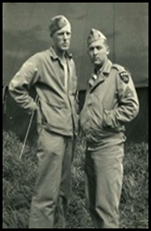
|
|
|
|
|
|
|
|
|
|
|
|
|
|
|
|
|
|
|
|
|
|
|
|
|
|
|
|
|
|
|
|
|
|
|
|
|
|
|
|
|
|
|
|
|
|
|
|
|
|
|
|
|
|
|
|
|
|
|
|
|
|
|
|
|
|
|
|
|
|
|
|
|
|
|
|
|
|
|
|
|
|
|
|
|
|
|
|
|
|
|
|
|
|
|
|
|
|
|
|
|
|
|
|
|
|
|
|
|
|
|
|
|
|
|
|
|
|
|
|
|
|
|
|
|
|
|
|
|
|
|
|
| Jim
Martin and Elwin Hart |
|
|
|
|
|
|
|
|
|
|
| TWO
OPERATORS, DIFFERENT RADIO NETS, ONE TEAM |
|
|
|
|
|
|
|
|
|
|
| Courtesy: Elwin Hart |
|
|
|
|
|
|
|
|
|
|
|
|
|
|
|
|
|
|
|
|
|
| As
probably every Marine did in Operation Galvanic, Elwin did all he could do … and he did his best to succeed
as a Marine communicator. Effectively
in his very specialized role, Elwin contributed to the ultimate mission
success of our Marines who paid a steep price for this victory. |
|
|
|
|
|
|
|
|
|
|
|
|
|
|
|
|
|
|
|
|
|
| This
assessment of Elwin Hart’s performance is corroborated by independent sources
(already cited) and by Joseph H. Alexander (Colonel, USMC Ret). In his masterpiece account of events at
Tarawa Utmost Savagery: The Three Days of Tarawa, (1995), Alexander referred to Elwin Hart as the “Voice of Tarawa” because Hart
was the only radio operator on Betio transmitting messages during the battle
to Division Headquarters of the 2nd Marine Division on the USS Maryland. (underline inserted
by this writer) |
|
|
|
|
|
|
|
|
|
|
|
|
|
|
|
|
|
|
|
|
|
| “Crowe
covered the five-hundred-yard wade so fast he reached dry ground only four
minutes after the last LVT. Equally
important, the LT 2/8 comm section arrived literally on Crowe’s heels. It would take Sgt. Elwin “Al” Hart several
frantic minutes to locate and assemble the major components of his TBX radio
set - one of his men was down - but soon he would become the most valuable
radio operator on the beach.” (118) |
|
|
|
|
|
|
|
|
|
|
|
|
|
|
|
|
|
|
|
|
|
| “Good
tactical communications, a rarity throughout the island, facilitated Crowe’s
relative success. Both his TBX sets
were working, one linking Shore Fire Control Party #82 with the destroyers in
the lagoon (operated by Elwin’s best buddy James B. Martin from Springville,
Alabama), the other in contact by lucky accident with the division command
post on the |
|
|
|
|
|
|
|
|
|
|
|
|
|
|
|
|
|
|
|
|
|
| Sergeant
Hart manned the telegraph key and earphones on this rig. Hart could not raise Shoup (still making
his way to shore) on the regimental command net, but he discovered that the
persistent “unknown station” on that frequency was actually the division
headquarters trying to contact anyone on the beach. Later, when Shoup established his command
post (CP) ashore, Hart and LT 2/8 continued to serve as a relay station
between the regimental commander and General Smith. Time and again throughout the battle,
Sergeant Hart’s Morse code signals would represent the “Voice of Tarawa” to
the division commander and staff (on the USS Maryland).” (125-126) |
|
|
|
|
|
|
|
|
|
|
|
|
|
|
|
|
|
|
|
|
|
| For
another two days after the period covered by the above radio messages, our
Marines held their own and grimly fought to defeat the Japanese garrison on
Betio. |
|
|
|
|
|
|
|
|
|
|
|
|
|
|
|
|
|
|
|
|
|
| It is
likely the reader will discern in these communications a progressive change
in mood and physiological state from desperation to grim desperation to
physical and emotional exhaustion to an uncertain realization that a positive
outcome is at hand as the tide of battle turns irrevocably to
celebration. In passing, the reader
may well experience a similar change of view from academic appreciation of
events to a personal and emotional appreciation of the flow of events on
Betio in November 1943. |
|
|
|
|
|
|
|
|
|
|
|
|
|
|
|
|
|
|
|
|
|
| The
situation is palpable. Our Marines
went into and came through ‘the valley of the shadow of death’ and began to
appreciate what they had accomplished … and at such a terrible cost. |
|
|
|
|
|
|
|
|
|
|
|
|
|
|
|
|
|
|
|
|
|
| • AT
1600 ON D+2, ... |
|
|
|
|
|
|
|
|
|
|
| The
commander of the 2nd Marine Division, Major General Julian Smith, reported: |
|
|
|
|
|
|
|
|
|
|
|
|
|
|
|
|
|
|
|
|
|
| "Situation
not favorable for rapid clean-up … Heavy casualties among officers make
leadership problems difficult. Still
strong resistance … Many (Japanese) emplacements intact on eastern end of
island … many Japanese (positions) to westward of our front lines within our
position that have not been reduced.
Progress slow and extremely costly." |
|
|
|
|
|
|
|
|
|
|
| http://www.ibiblio.org/hyperwar/USMC/USMC-M-Tarawa/USMC-M-Tarawa-4.html |
|
|
|
|
|
|
|
|
|
|
|
|
|
|
|
|
|
|
|
|
|
| •
DURING THE NIGHT OF D+2 / D+3, ... |
|
|
|
|
|
|
|
|
|
|
|
|
|
|
|
|
|
|
|
|
|
| "We're killing them as fast as they come at us, but we
can't hold out much longer; we need reinforcements!" To which the LT 1/6
commander replies, "We haven't got them;
you've got to hold!" |
|
|
|
|
|
|
|
|
|
|
| http://www.nps.gov/history/history/online_books/npswapa/extcontent/usmc/pcn-190-003120-00/sec6.htm |
|
|
|
|
|
|
|
|
|
|
|
|
|
|
|
|
|
|
|
|
|
| • AFTER
THE SUNRISE ON D+3, ... |
|
|
|
|
|
|
|
|
|
|
| The commander of LT 1/6, surveying the aftermath of the
counterattacks, was met by some of his haggard, exhausted and fiercely proud
Marines who exclaimed, |
|
|
|
|
|
|
|
|
|
|
|
|
|
|
|
|
|
|
|
|
|
| "They
told us we had to hold, and by God, we held." |
|
|
|
|
|
|
|
|
|
|
| http://www.nps.gov/history/history/online_books/npswapa/extcontent/usmc/pcn-190-003120-00/sec6.htm |
|
|
|
|
|
|
|
|
|
|
|
|
|
|
|
|
|
|
|
|
|
| • IN
THE EARLY AFTERNOON OF D+3, ... |
|
|
|
|
|
|
|
|
|
|
| Robert
Sherrod (journalis embedded with our Marines at Attu, Tarawa, Saipan, Iwo
Jima, and Okinawa) vividly describes the scene in the area not far from where
Elwin Hart was the sole radio operator on Betio during the battle: |
|
|
|
|
|
|
|
|
|
|
|
|
|
|
|
|
|
|
|
|
|
| "Betio
would be more habitable if the Marines could leave for a few days and send a
million buzzards in. Distinguishing
between Marines and the enemy dead was almost impossible. Reports of missing Marines being swept out
to sea and floating corpses miles distant from Betio were heard." |
|
|
|
|
|
|
|
|
|
|
| http://www.nps.gov/history/history/online_books/npswapa/extcontent/usmc/pcn-190-003120-00/sec7.htm |
|
|
|
|
|
|
|
|
|
|
|
|
|
|
|
|
|
|
|
|
|
| • ALSO
IN THE EARLY AFTERNOON OF D+3, … |
|
|
|
|
|
|
|
|
|
|
| The
flag raising ceremony occurred indicating Betio was secured (even though not
all action was yet finished), |
|
|
|
|
|
|
|
|
|
|
|
|
|
|
|
|
|
|
|
|
|
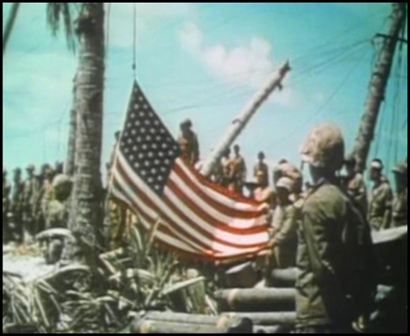
|
|
|
|
|
|
|
|
|
|
|
|
|
|
|
|
|
|
|
|
|
|
|
|
|
|
|
|
|
|
|
|
|
|
|
|
|
|
|
|
|
|
|
|
|
|
|
|
|
|
|
|
|
|
|
|
|
|
|
|
|
|
|
|
|
|
|
|
|
|
|
|
|
|
|
|
|
|
|
|
|
|
|
|
|
|
|
|
|
|
|
|
|
|
|
|
|
|
|
|
|
|
|
|
|
|
|
|
|
|
|
|
|
|
|
|
|
|
|
|
|
|
|
|
|
|
|
|
|
|
|
|
|
|
|
|
|
|
|
|
|
|
|
|
|
|
|
|
|
|
|
|
|
|
|
|
|
|
|
|
|
|
|
|
|
|
|
|
|
|
|
|
|
|
|
|
|
|
|
|
|
|
|
|
|
|
|
|
|
|
|
|
|
|
|
|
|
|
|
|
|
|
|
|
|
|
|
|
|
| American
48-star flag about to be raised, midday 23 November 1943 |
|
|
|
|
|
|
|
|
|
|
| http://www.ww2gyrene.org/2ndmardiv_history_part_4C.htm |
|
|
|
|
|
|
|
|
|
|
|
|
|
|
|
|
|
|
|
|
|
| • ON
D+4, … |
|
|
|
|
|
|
|
|
|
|
| The V
Amphibious Corps Commander (Major General H. M. Smith) conducted an aerial
survey of the battlefield and reported, |
|
|
|
|
|
|
|
|
|
|
|
|
|
|
|
|
|
|
|
|
|
| “The
sight of our dead floating in the waters of the lagoon and lying along the
blood-soaked beaches is one I will never forget. Over the pitted, blasted island hung a
miasma of coral dust and death, nauseating and horrifying." |
|
|
|
|
|
|
|
|
|
|
| http://www.nps.gov/history/history/online_books/npswapa/extcontent/usmc/pcn-190-003120-00sec7.htm |
|
|
|
|
|
|
|
|
|
|
|
|
|
|
|
|
|
|
|
|
|
| • IN
COLONEL SHOUP’S COMBAT NOTEBOOK IS RECORDED … |
|
|
|
|
|
|
|
|
|
|
|
|
|
|
|
|
|
|
|
|
|
| “With
God and the US Navy in direct support of the 2nd MarDiv there was never any doubt that we would get
Betio. For several hours, however,
there was considerable haggling over the exact price we were to pay for
it." |
|
|
|
|
|
|
|
|
|
|
| http://www.nps.gov/history/history/online_books/npswapa/extcontent/usmc/pcn-190-003120-00sec6.htm |
|
|
|
|
|
|
|
|
|
|
|
|
|
|
|
|
|
|
|
|
|
| • IN AN
11 JULY 2013 POSTING ON TARAWA ON THE WEB, … |
|
|
|
|
|
|
|
|
|
|
| (which
can be found at http://tarawaontheweb.org,) a competent contributor wrote, |
|
|
|
|
|
|
|
|
|
|
|
|
|
|
|
|
|
|
|
|
|
| "Time
and time again throughout the Tarawa battle, … Sgt. Hart's Morse code
represented the "Voice of Tarawa" from the 2nd Marines to
Division. Shoup's message
"Casualties many. Percentage dead
unknown. Combat efficiency: we are winning." … was sent by Sgt.
Elwin Hart." |
|
|
|
|
|
|
|
|
|
|
| http://disc.yourwebapps.com/discussion.cgi?id=149620;article=18096 |
|
|
|
|
|
|
|
|
|
|
|
|
|
|
|
|
|
|
|
|
|
| • IN A
12 JULY 2013 REPLY ON TARAWA ON THE WEB, … |
|
|
|
|
|
|
|
|
|
|
| Colonel
Elwin Hart wrote this modest acknowledgement: |
|
|
|
|
|
|
|
|
|
|
|
|
|
|
|
|
|
|
|
|
|
| "By
the way, I did not remember that passage from Col. Shoup until I saw it on
the wall of the Museum in Triangle (Virginia). It hit me when I saw the last phrase
"We are winning." Thanks …
for your kind words, Elwin." |
|
|
|
|
|
|
|
|
|
|
| http://disc.yourwebapps.com/discussion.cgi?id=149620;article=18098 |
|
|
|
|
|
|
|
|
|
|
|
|
|
|
|
|
|
|
|
|
|
| This
writer’s deduction, corroboration from respectable third-party sources and
Elwin’s own words yield the realization that the reader now begins to
perceive: the person who transmitted Colonel Shoup’s inspiring
message on D+1 was … Elwin Hart. He was the TBX operator on Betio who, as
noted, established and maintained reliable communications to Division
Headquarters on the USS Maryland. |
|
|
|
|
|
|
|
|
|
|
|
|
|
|
|
|
|
|
|
|
|
| As any
effective leader must do, Elwin himself evaluates the performance of his
squad in the Communication Platoon, H&S Company, 2nd Battalion, 8th Marines … and, indirectly, evaluates his own performance on
the bloody sands of Tarawa in November 1943: |
|
|
|
|
|
|
|
|
|
|
|
|
|
|
|
|
|
|
|
|
|
| "So
I guess 2/8 had done its job from a radio communication point of view. |
|
|
|
|
|
|
|
|
|
|
| (We
had provided the only communication to the command ship and to the supporting
naval gunfire ships.)”
(original parentheses are Elwin Hart’s) |
|
|
|
|
|
|
|
|
|
|
| Hart,
Elwin. Did I Do
Enough?
Raleigh, NC: Lulu. (2011): 40. |
|
|
|
|
|
|
|
|
|
|
|
|
|
|
|
|
|
|
|
|
|
| So
succinct and powerful were the words of Colonel Shoup’s message - tapped out
by then Sgt Elwin B. Hart from his abandoned Japanese mortar pit, the Marine
Corps has had those very words carved into the stone wall at the base of the
glass tower of the new National Marine Corps Museum (NMCM) in Triangle,
Virginia, where they are enshrined for posterity. |
|
|
|
|
|
|
|
|
|
|
|
|
|
|
|
|
|
|
|
|
|
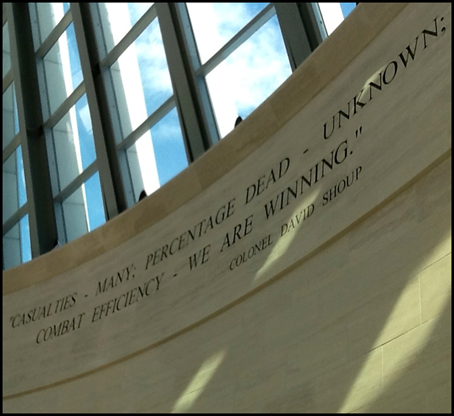
|
|
|
|
|
|
|
|
|
|
|
|
|
|
|
|
|
|
|
|
|
|
|
|
|
|
|
|
|
|
|
|
|
|
|
|
|
|
|
|
|
|
|
|
|
|
|
|
|
|
|
|
|
|
|
|
|
|
|
|
|
|
|
|
|
|
|
|
|
|
|
|
|
|
|
|
|
|
|
|
|
|
|
|
|
|
|
|
|
|
|
|
|
|
|
|
|
|
|
|
|
|
|
|
|
|
|
|
|
|
|
|
|
|
|
|
|
|
|
|
|
|
|
|
|
|
|
|
|
|
|
|
|
|
|
|
|
|
|
|
|
|
|
|
|
|
|
|
|
|
|
|
|
|
|
|
|
|
|
|
|
|
|
|
|
|
|
|
|
|
|
|
|
|
|
|
|
|
|
|
|
|
|
|
|
|
|
|
|
|
|
|
|
|
|
|
|
|
|
|
|
|
|
|
|
|
|
|
|
|
|
|
|
|
|
|
|
|
|
|
|
|
|
|
|
|
|
|
|
|
|
|
|
|
|
|
|
|
|
|
|
|
|
|
|
|
|
|
|
|
|
|
|
| Colonel
Shoup’s original message transmitted on D+1 (21 November 1943) by Elwin Hart |
|
|
|
|
|
|
|
|
|
|
| prominently
displayed at the National Marine Corps Museum, Triangle, Virginia |
|
|
|
|
|
|
|
|
|
|
| Courtesy: Major David Vickers, USMC (Ret.); NMCM
docent |
|
|
|
|
|
|
|
|
|
|
|
|
|
|
|
|
|
|
|
|
|
| Elwin’s
actions in this crucible of combat exemplify several essential qualities of
an effective leader, qualities remaining in Elwin’s character to this day.
The hot and bloody sands of the battlefield on Betio were the stage on which
Elwin’s high standards, moral character and his expectations of himself and
his buddies played themselves out. When Elwin hit Betio’s shore on Red 3, he
was like thousands of other Marines on those beaches in late November
1943. When unit cohesion essentially
broke down (for several different reasons), individual Marines on that
battlefield made their own decisions that ultimately led to overall Marine
success at Tarawa. Marine performance
was exemplary, for those who lived to fight another day and for those who
paid the ultimate sacrifice for the greater good of their buddies, their
Corps and our country. |
|
|
|
|
|
|
|
|
|
|
|
|
|
|
|
|
|
|
|
|
|
| Elwin is quick to add that
two other Marine Corps radio operators deserve mention at this point: PFC John Gross and PFC Gordon Stevens
(father of Jon Stevens who created http://tarawaontheweb.org. That website pays tribute to the 2nd Marine
Division of WWII and is an historical resource furthering the knowledge of
the epic struggle on Tarawa that was an integral part of the march of the
United States leading to the defeat of Imperial Japan. |
|
|
|
|
|
|
|
|
|
|
|
|
|
|
|
|
|
|
|
|
|
| Gross
and Stevens operated radios for Colonel Shoup at RLT-2 Headquarters, but
nothing is known of the details of their operations. However, Gross was awarded the Navy Cross
for his efforts during the Tarawa operation.
To date, no known survivors with information on their operations
during the battle on Betio have been found, but a Navy Cross indicates
Colonel Shoup was impressed with their work! |
|
|
|
|
|
|
|
|
|
|
|
|
|
|
|
|
|
|
|
|
|
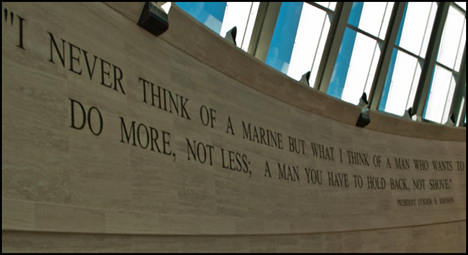
|
|
|
|
|
|
|
|
|
|
|
|
|
|
|
|
|
|
|
|
|
|
|
|
|
|
|
|
|
|
|
|
|
|
|
|
|
|
|
|
|
|
|
|
|
|
|
|
|
|
|
|
|
|
|
| |
|
|
|
|
|
|
|
|
|
|
|
|
|
|
|
|
|
|
|
|
|
|
|
|
|
|
|
|
|
|
|
|
|
|
|
|
|
|
|
|
|
|
|
|
|
|
|
|
|
|
|
|
|
|
|
|
|
|
|
|
|
|
|
|
|
|
|
|
|
|
|
|
|
|
|
|
|
|
|
|
|
|
|
|
|
|
|
| A
tribute to Marines from US President Lyndon B. Johnson |
|
|
|
|
|
|
|
|
|
|
| carved
in a wall at the National Marine Corps Museum |
|
|
|
|
|
|
|
|
|
|
| http://www.usmcmuseum.org/ |
|
|
|
|
|
|
|
|
|
|
|
|
|
|
|
|
|
|
|
|
|
| To make
the above quotation visually clearer, here it is again: |
|
|
|
|
|
|
|
|
|
|
|
|
|
|
|
|
|
|
|
|
|
| “I never think of a Marine but what I think of a man who wants
to do more, not less; |
|
|
|
|
|
|
|
|
|
|
| a man
you have to hold back, not shove.” |
|
|
|
|
|
|
|
|
|
|
|
|
|
|
|
|
|
|
|
|
|
|
|
|
|
|
|
|
|
|
|
|
|
|
|
|
|
|
|
|
|
|
|
| General
Alexander A. Vandegrift had a good understanding of what happened at Betio,
and he was very competent making post-battle assessments of that battle: He had already been the Commanding General
of the 1st Marine
Division at Guadalcanal and the Commanding General of the First Marine
Amphibious Corps in the early phases of the Bougainville campaign. |
|
|
|
|
|
|
|
|
|
|
| http://www.usmarineraiders.org/bougainville.htm |
|
|
|
|
|
|
|
|
|
|
| http://www.caltrap.org/history/bougainville.asp |
|
|
|
|
|
|
|
|
|
|
|
|
|
|
|
|
|
|
|
|
|
| “Tarawa
was the first example in history of a sea-borne assault against a heavily
defended coral atoll. Marine preparations for this operation were thorough;
its plans were executed in a noteworthy manner. In the final analysis,
however, success at Tarawa depended upon the discipline, courage and fighting
ability of the individual Marine. Seldom has anyone been called upon to fight
a battle under more difficult circumstances." (underlining by this writer) |
|
|
|
|
|
|
|
|
|
|
|
|
|
|
|
|
|
|
|
|
|
| A. A.
Vandegrift |
|
|
|
|
|
|
|
|
|
|
| General,
U.S. Marine Corps |
|
|
|
|
|
|
|
|
|
|
| 18th
Commandant of the Marine Corps (1944-1947) |
|
|
|
|
|
|
|
|
|
|
|
|
|
|
|
|
|
|
|
|
|
|
|
|
|
|
|
|
|
|
|
|
|
|
|
|
|
|
|
|
|
|
|
|
|
|
|
|
|
|
|
|
|
|
|
|
|
|
|
|
|
|
|
|
|
| IN
APPRECIATION |
|
|
|
|
|
|
|
|
|
|
|
|
|
|
|
|
|
|
|
|
|
| The
story about how these photos from the National Marine Corps Museum appear in
this report deserves special attention:
the photos were taken by Major David Vickers (USMC, Ret.) at the
request of Ed Gilbert, a military history researcher and prolific writer on a
wide variety of military topics, because this writer asked for help in
obtaining a copy of the photographs! |
|
|
|
|
|
|
|
|
|
|
|
|
|
|
|
|
|
|
|
|
|
| This
writer appreciates immensely the contributions of Dave Vickers and Ed Gilbert
in obtaining the digital photo of the message Elwin Hart transmitted near the
end of the second day of combat at the Battle of Tarawa - some 70 years ago! |
|
|
|
|
|
|
|
|
|
|
|
|
|
|
|
|
|
|
|
|
|
| Vickers
is a volunteer docent at the National Marine Corps Museum, had a notable
career in tanks and is now a civilian employee on special writing projects at
Quantico. |
|
|
|
|
|
|
|
|
|
|
|
|
|
|
|
|
|
|
|
|
|
| Gilbert
has enjoyed a very diversified career path in geology, teaching at Auburn
University, and service as the senior geoscientist in international
geological exploration projects. His books include an oral history series on
Marine tank battles in the Pacific, Korea and Vietnam, and his e-books cover
topics ranging from American militia forces in the War of 1812; Navajo code
talkers in WWII; the elite Marine Corps raiders in the early 1940s; to the
savage struggle waged by the III Marine Amphibious Force against Viet Cong
guerillas and North Vietnamese Army regulars in the Vietnam War. Gilbert’s body of published work can be
found at … |
|
|
|
|
|
|
|
|
|
|
| Elwin
Hart, email to author, September 26, 2013. |
|
|
|
|
|
|
|
|
|
|
| http://www.amazon.com/s/ref=nb_sb_noss/175-0552783-7721718?url=search-alias%3Daps&field-keywords=gilbert%20marine%20tank%20battles |
|
|
|
|
|
|
|
|
|
|
| http://www.ospreypublishing.com/text_search.aspx?TextSearch=ed%20gilbert&Group=Book |
|
|
|
|
|
|
|
|
|
|
|
|
|
|
|
|
|
|
|
|
|
|
|
|
|
|
|
|
|
|
|
|
| ADDENDUM: Confirmation of the
conclusions in the preceding review on Elwin Hart’s role as radio operator on
Betio appeared on the Tarawa Talk Forum on 20 November 2013 … by Colonel Hart
himself: |
|
|
|
|
|
|
|
|
|
|
|
|
|
|
|
|
|
|
|
|
|
| “…I
was a Sgt at 2/8 operating a TBX radio in contact with 2ndMarDiv Hq on the
Maryland. I was able to relay messages
from Col Shoup to Div Hq and so acted for the whole operation.” |
|
|
|
|
|
|
|
|
|
|
| http://disc.yourwebapps.com/discussion.cgi?id=149620;article=18417 |
|
|
|
|
|
|
|
|
|
|
|
|
|
|
|
|
|
|
|
|
|
| HEREWITH,
THIS NARROWLY FOCUSSED REVIEW |
|
|
|
|
|
|
|
|
|
|
| ON
ELWIN HART’S CENTRAL ROLE AT BETIO IS FINISHED |
|
|
|
|
|
|
|
|
|
|
|
|
|
|
|
|
|
|
|
|
|
| - - -
- - - - - - - - - - - - - - - - - - - - - - - - - - - |
|
|
|
|
|
|
|
|
|
|
|
|
|
|
|
|
|
|
|
|
|
| Closing
this part of Elwin Hart’s report, this writer wishes again to thank Elwin for
his generous permission to use pertinent portions of his memoirs to share
them publicly in the context of related research. Elwin’s willingness to help, clarify and
elaborate frequently on so many aspects of his story is very much
appreciated. |
|
|
|
|
|
|
|
|
|
|
|
|
|
|
|
|
|
|
|
|
|
| Elwin’s generosity enables
readers now and into the future to become acquainted with many more of the
facets of this man’s exemplary service to our country and to his family, as
will soon be seen. Including reflections
on his upbringing, his military career and personal experiences of a
non-military nature, Elwin’s memoirs Did I Do Enough? (published in 2011 and available through www.amazon.com) is a
very readable and informative work covering events up to 2010. Elwin’s
writing provides superb insights into his thoughtfully and purposefully
well-lived life. Selective use of emails and phone calls over the better part
of a calendar year extend Elwin’s story through to late 2013 and the 70th
anniversary of the start of the Battle of Tarawa. |
|
|
|
|
|
|
|
|
|
|
|
|
|
|
|
|
|
|
|
|
|
| That
title of his memoirs, Elwin hastens to add, is not a reference to anything of
a military nature. Instead, it refers
to a poignant personal story that he willingly shares with readers of his
memoirs. |
|
|
|
|
|
|
|
|
|
|
|
|
|
|
|
|
|
|
|
|
|
| With
Elwin’s permission and this writer’s appreciation, a verbatim copy of Elwin’s narration of events on Betio follows: “TARAWA
1943, ” from his memoirs Did I Do Enough? |
|
|
|
|
|
|
|
|
|
|
|
|
|
|
|
|
|
|
|
|
|
| Unless
otherwise identified, all personal photographs in the next part of this
report were taken at Camp Tarawa, on now unknown dates before the 2nd Marine
Division moved on to Saipan and Operation Forager in June of 1944. Elwin also comments on the sixth photograph appearing below: Communications Chief Maurice Lynch was from Minnesota and
got the Navy Cross for his work when their Communications Officer 2nd Lt. George Kern was
severely wounded and is still listed as MIA as of this writing. Lynch took over and did a great job, but unfortunately he was
later killed on Saipan (as was this writer’s
cousin, Conrad Edgar Olson, Weapons Company, 4th Platoon, 6th Marine Regiment). |
|
|
|
|
|
|
|
|
|
|
| Elwin
Hart, email to author, June 30, 2013. |
|
|
|
|
|
|
|
|
|
|
|
|
|
|
|
|
|
|
|
|
|
| Ib |
|
|
|
|
|
|
|
|
|
|
| CHAPTER
6 FROM ELWIN HART’S MEMOIRS |
|
|
|
|
|
|
|
|
|
|
| Did I Do Enough? … published 2011 |
|
|
|
|
|
|
|
|
|
|
| [A
verbatim copy appears here by permission of Colonel Hart.] |
|
|
|
|
|
|
|
|
|
|
|
|
|
|
|
|
|
|
|
|
|
| TARAWA 1943 |
|
|
|
|
|
|
|
|
|
|
|
|
|
|
|
|
|
|
|
|
|
| EDITORIAL
NOTE: In March of 1994, I received a
letter from Colonel Joe Alexander, a retired Marine. He was writing a book for the Naval
Institute Press on the battle of Tarawa and wanted my account of the battle.
Colonel Ed Driscoll, a longtime friend and fellow Marine, had given him my
address. At that time my wife Gladys
and I were in Mesa, Arizona, where we had been spending winters as
“snowbirds” since 1990. Having no word
processing capability with me, I wrote Joe a brief handwritten account of
some of my most vivid memories of the operation and promised him a more
detailed account upon our return to Puyallup, Washington in May. The following letter dated 29 June 1994 to
Joe is as good an account as I could muster on a combat experience I had some
51 years earlier. |
|
|
|
|
|
|
|
|
|
|
|
|
|
|
|
|
|
|
|
|
|
| “Dear
Joe – Please excuse my tardiness in responding to your request for my account
of the Tarawa battle ............. I was not the radio chief for 2/8 (2nd Battalion 8th Marines), but I was a sergeant, having been promoted before
we left New Zealand in a regimental wide competitive exam. We received both promotions in 2/8 of the
two available with wireman Dick Hogue getting the other one. I was in charge of the TBX team (the TBX
was a three man radio set used by Marine Corps units to participate in unit
to unit communications) scheduled to operate on the Regimental Command Net
with the 2nd
Marines. As I recall and you probably know (from your 30 months of research),
2/8 was attached to RLT-2 (Regimental Landing Team 2) for the landing. I believe my landing craft was in the
second or third wave (after the amphibian tractors of course). My best buddy,
James B. Martin from Springville, Alabama (later was Postmaster there) had
our other TBX (two TBX’s per Bn (Battalion) as I recall) and he was on a
Naval Gunfire Spotting Net with some direct support ships. To the best of my
knowledge, Jim and I had the only TBX’s operating on the island. |
|
|
|
|
|
|
|
|
|
|
|
|
|
|
|
|
|
|
|
|
|
| Of
course everyone is familiar with the stories of landing craft literally
sinking from under them. My experience was no different. We were an estimated
800 yards from the beach when the landing craft opened its ramp and off we
went. As I stepped off the ramp, I was
barely able to touch bottom and sort of bounced along for some time. There was a great deal of mortar and small
arms fire, but I remember
being rather oblivious to all the racket. I only had one thing on my mind,
which was to get to the beach and get our TBX on the air. Of course I also wanted to survive, so as a
friendly tank lumbered past, I grabbed onto the rear and hung on. I knew that
it was a target, but it seemed safer and maybe it was. |
|
|
|
|
|
|
|
|
|
|
|
|
|
|
|
|
|
|
|
|
|
| On
the way to the beach I encountered our Battalion Communication Officer, a
newly appointed second lieutenant named Kern, Kearny or something
similar. He had been hit in the leg,
and was bleeding profusely in the water.
He was heading back to a landing craft for evacuation, and I asked him
for the authentication tables for days D+1 and thereafter. (Authentication
tables were used to verify that you were who you said you were). I was only carrying the D-Day tables. He refused to give them to me--I don’t know why. In any event, to my knowledge we never
found out what happened to him. |
|
|
|
|
|
|
|
|
|
|
|
|
|
|
|
|
|
|
|
|
|
| On
the way to the beach I encountered our Battalion Communication Officer, a
newly appointed second lieutenant named Kern, Kearny or something
similar. He had been hit in the leg,
and was bleeding profusely in the water.
He was heading back to a landing craft for evacuation, and I asked him
for the authentication tables for days D+1 and thereafter. (Authentication
tables were used to verify that you were who you said you were). I was only carrying the D-Day tables. He refused to give them to me--I don’t know
why. In any event, to my knowledge we
never found out what happened to him. |
|
|
|
|
|
|
|
|
|
|
|
|
|
|
|
|
|
|
|
|
|
| As I
recall he had the accessory case, which of course was an essential element,
since it contained the receiver batteries, the headphones, microphone,
telegraphic key, connecting cables and other items necessary for operation of
the radio. I located Clarence lying
behind the seawall a few yards (perhaps 25-30) from the water’s edge. He had been shot (appeared to be 25
caliber) in the neck with an entry and exit wound on each side of the neck.
(He was still alive.) I retrieved the
radio accessory box from him and hailed a passing Marine to help me get him
into a landing craft for evacuation.
As we began to walk him toward the water, a burst of automatic fire
started kicking up sand around our feet.
I began cursing the unknown weapons wielder and then glanced over at
the “Marine” assisting me only to discover it was the Battalion
Chaplain. I started to apologize for
my language, but he assured me that he understood, and that in fact he had
been thinking similar thoughts. |
|
|
|
|
|
|
|
|
|
|
|
|
|
|
|
|
|
|
|
|
|
| After
getting Backus safely on board a landing craft for evacuation, I ran back to
the dugout where we would set up the TBX and get on the air. After setting up, I started calling
Regiment. It was a CW (continuous wave
or Morse code) net (not voice) and after several frustrating and fruitless
attempts to raise Regiment, I finally heard another station answering
me. Not recognizing the call sign, I
learned through the call sign extract card I had in a waterproof pouch that
the unknown station was actually Division Headquarters (aboard the battleship
Maryland) trying to establish contact with anyone on the beach. I was pretty happy to have contact with
anyone. We had telephone contact with
Regiment (2nd
Marines) and I advised Division that we would relay messages to Regiment via
landline. |
|
|
|
|
|
|
|
|
|
|
|
|
|
|
|
|
|
|
|
|
|
| I
contacted the Regimental Communication Officer by telephone and advised him
of our contact with Division and that we would act as a relay for any
messages they wished to send. The
Regimental Communication Officer, a Major, then asked if I could move our TBX
down the beach to where the Regimental Headquarters was located. I was not
thrilled by his request but believe that I might have complied if he had
insisted. I did advise him that we had
already had one wireman killed on the edge of our bunker and that I could not
guarantee that we could make it to his CP (Command Post) carrying the
TBX. As I recall the Major was
satisfied, so long as we could keep the wire line in to him. I did not remind him that communication
between higher and lower headquarters was the responsibility of the higher
unit. The wire line stayed in and I relayed all the traffic between Regiment
and Division for all three days of the battle. To the best of my knowledge, my TBX had the
only contact with Division Headquarters during that period. |
|
|
|
|
|
|
|
|
|
|
|
|
|
|
|
|
|
|
|
|
|
| On
the second day of the operation, Division challenged my use of the
authenticator tables. I had continued to use the first day table since I had
no other. You will recall that the Battalion Communication Officer had turned
down my request for them in the water. I believe he thought that he would be
able to get his wound attended to and proceed back to shore. After several futile attempts to explain my
problem using various operating signals (in Morse code), I finally asked
Division to switch to voice. They complied and I must assume that my
Louisiana accent convinced them that I was authentic enough. After all, I was all they had. We switched back to CW and continued to
pass messages back and forth. |
|
|
|
|
|
|
|
|
|
|
|
|
|
|
|
|
|
|
|
|
|
| My
only problem was getting someone to give me some relief on the set. Backus of course had been evacuated, and
Fisher had developed a disabling headache--very severe. He remained ill for most of the
operation. So my watch turned out to
be some 70+ hours long. I did get
other people to spell me during periods of inactivity, but they would call me
as soon as they heard a signal on the air.
Wiremen were operating the hand generator for me and it just became
something I had to do. As far as I can
remember, I did not eat a bite of food for the full three days. I had two full canteens of water and only a
few swallows of water was gone from one of the canteens. I’m sure I must have
been near dehydration toward the end. |
|
|
|
|
|
|
|
|
|
|
|
|
|
|
|
|
|
|
|
|
|
| I
remember going out once to check on Jim Martin and his TBX team working the
Naval Gunfire Spotting Net. They were
all fine but set up right out in plain sight on the beach. A Naval officer was with him -- spotting
the fire from the destroyers not too far off shore. [Remember the Lieutenant-Commandant
Cadwalader Ringgold in Samoa in the late 1830s? And the USS Ringgold (DD-500) from part 1a of this report?] |
|
|
|
|
|
|
|
|
|
|
|
|
|
|
|
|
|
|
|
|
|
| So I
guess 2/8 had done its job from a radio communication point of view. (We had
provided the only communication to the command ship and to the supporting
naval gunfire ships.) Oddly enough I
have never read any accounts dealing with this subject, nor have I ever been
asked for my account. Perhaps if these
words make it into print somewhere, someone will challenge my recollections,
and add to all our knowledge about what other radio communications may have
been taking place. |
|
|
|
|
|
|
|
|
|
|
|
|
|
|
|
|
|
|
|
|
|
| The
TBX’s were contained in two waterproof cast aluminum cabinets or cases plus
the generator and the antenna bag. They had rubber gaskets around the edges
of the covers to each of the cabinets. These covers could be screwed down so
that the rubber gaskets made contact with the edge of the cabinet. The
generator had similar waterproof covers over the handle and cable holes. It was a much more reliable radio set than
the TBY (a one man portable radio) which was intended for short range
tactical use. The TBY was difficult to waterproof and I assume that most of
them failed because of their submersion on the way to the beach. I have no knowledge or at least no memory
of what happened to any other of the radio sets even in our own
battalion. I know we had TBY’s on both
our Battalion and Regimental Tactical nets, but cannot recall if we were able
to communicate with them. Hopefully some of my fellow communicators can fill
in that blank. |
|
|
|
|
|
|
|
|
|
|
|
|
|
|
|
|
|
|
|
|
|
| Following
the Tarawa operation, we were moved to Hawaii where the Division went for
regrouping or whatever. I remember
that our Communication Chief, Master Technical Sergeant Maurice Lynch (later
killed on Saipan) came by and asked me if I would like a medal or a promotion
for my part in the Tarawa operation. I
quickly chose the latter option and very soon became a 19 year old Staff Sergeant with about 30 months total
service. If you are mathematically inclined you can deduce that I enlisted
five days before my seventeenth birthday. |
|
|
|
|
|
|
|
|
|
|
|
|
|
|
|
|
|
|
|
|
|
| Joe,
that about sums up my recollections for those three memorable days on Tarawa.
The three days were pretty much more of the same each day and it went very
fast for me. I wasn’t in a great deal
of danger, so long as I could keep my head down in the bunker we had been
fortunate enough to inherit. As I
recall we only lost the one wireman and Backus plus the unknown fate of our
Communication Officer. One last little
thing. When we took down the antenna after the operation was over, we
discovered a bullet hole right through the antenna. The antenna was not large in diameter and
we had exposed only about three feet up through the top of the bunker. We
took pictures of it and I may still have it somewhere. (I do) Let me know if
you have any questions, Joe. |
|
|
|
|
|
|
|
|
|
|
|
|
|
|
|
|
|
|
|
|
|
|
|
|
|
|
|
|
|
|
|
|
|
Semper Fidelis Elwin (Al) Hart |
|
|
|
|
|
|
|
|
|
|
|
Col USMC Ret” |
|
|
|
|
|
|
|
|
|
|
|
|
|
|
|
|
|
|
|
|
|
|
|
|
|
|
|
|
|
|
|
|
|
|
|
|
|
|
|
|
|
|
|
|
|
|
|
|
|
|
|
|
|
|
| The
wireman who was killed sitting on the side of our bunker was an 18 year old
we called “Rabbit” from Texas. He was
a particular favorite of Sergeant Dick Hogue, the Wire Chief and a close
friend of mine. Dick knelt down over
Rabbit’s still body and cried like a baby, and kept saying no, no, no! |
|
|
|
|
|
|
|
|
|
|
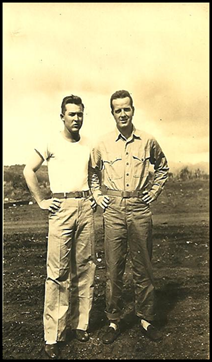
|
|
|
|
|
|
|
|
|
|
|
|
|
|
|
|
|
|
|
|
|
|
|
|
|
|
|
|
|
|
|
|
|
|
|
|
|
|
|
|
|
|
|
|
|
|
|
|
|
|
|
|
|
|
|
|
|
|
|
|
|
|
|
|
|
|
|
|
|
|
|
|
|
|
|
|
|
|
|
|
|
|
|
|
|
|
|
|
|
|
|
|
|
|
|
|
|
|
|
|
|
|
|
|
|
|
|
|
|
|
|
|
|
|
|
|
|
|
|
|
|
|
|
|
|
|
|
|
|
|
|
|
|
|
|
|
|
|
|
|
|
|
|
|
|
|
|
|
|
|
|
|
|
|
|
|
|
|
|
|
|
|
|
|
|
|
|
|
|
|
|
|
|
|
|
|
|
|
|
|
|
|
|
|
|
|
|
|
|
|
|
|
|
|
|
|
|
|
|
|
|
|
|
|
|
|
|
|
|
|
|
|
|
|
|
|
|
|
|
|
|
|
|
|
|
|
|
|
|
|
|
|
|
|
|
|
|
|
|
|
|
|
| Me
& Dick Hogue |
|
|
|
|
|
|
|
|
|
|
|
|
|
|
|
|
|
|
|
|
|
| We knew
the round that killed Rabbit had come from a sniper in nearby palm trees, and
several of our guys started peppering those trees with round after round from
their carbines. We think their shots silenced the sniper since no more rounds
were fired from the palm trees. |
|
|
|
|
|
|
|
|
|
|
|
|
|
|
|
|
|
|
|
|
|
| I got
a nice response to my letter to Colonel Joe Alexander and a copy of his book
entitled UTMOST SAVAGERY – The Three Days of Tarawa published by the Naval Institute Press, Annapolis, Maryland
in 1995. Excerpts from that historic
and accurate account of the battle of Tarawa are shown below. I received
permission from Joe and the Naval Institute Press to include these excerpts
from Joe’s book. |
|
|
|
|
|
|
|
|
|
|
|
|
|
|
|
|
|
|
|
|
|
| From
Page 118: “The sailor gunned the LCVP full-bore toward Red Three, hitting the
reef so hard the impact knocked staff and commander into a heap. Crowe jumped
up and vaulted over the gunwale into the water. Hatch, striving to protect his fragile film
containers from the water, straggled behind. Crowe covered the
five-hundred-yard wade so fast he reached dry ground only four minutes after
the last LVT. Equally important, the LT
2/8 comm section arrived literally on Crowe’s heels. It would take Sgt. Elwin “Al” Hart several
frantic minutes to locate and assemble the major components of his TBX radio
set--one of his men was down--but soon he would become the most valuable
radio operator on the beach.” |
|
|
|
|
|
|
|
|
|
|
|
|
|
|
|
|
|
|
|
|
|
| From
Pages 125-126: “Good tactical
communications, a rarity throughout the island, facilitated Crowe’s relative
success. Both his TBX sets were
working, one linking Shore Fire Control Party #82 with the destroyers in the
lagoon, the other in contact by lucky accident with the division command post
on the Maryland. Nineteen year old
Sergeant Hart manned the telegraph key and earphones on this rig. Hart could not raise Shoup (still making
his way ashore) on the regimental command net, but he discovered that the
persistent “unknown station” on that frequency was actually the division
headquarters trying to contact anyone on the beach. Later, when Shoup established his command
post (CP) ashore, Hart and LT 2/8 continued to serve as a relay station
between the regimental commander and General Smith. Time and again throughout the battle,
Sergeant Hart’s Morse code signals would represent the “Voice of Tarawa” to
the division commander and staff.” |
|
|
|
|
|
|
|
|
|
|
|
|
|
|
|
|
|
|
|
|
|
| (Recently,
Elwin informed the writer about a delightful contact he made with Sharon
Bradshaw Smith, daughter of the 8th Marines Regimental Communication Officer on shore at
Tarawa.) |
|
|
|
|
|
|
|
|
|
|
|
|
|
|
|
|
|
|
|
|
|
| “At
the 64th reunion of the 2nd Marine Division Association in Chicago in
September 2013, Elwin met Sharon Bradshaw Smith. Noticing the Bradshaw middle
name in her name tag, Elwin asked her if she was related to John Bradshaw.
Turns out he was her father, several years deceased. Sharon was a
devoted member of the Association, having attended many such reunions in
memory of her father. Elwin had known her father--first by phone on Tarawa,
with Elwin as the Sergeant operating the TBX radio set in the 2nd Battalion
8th Marines Command Post and then Captain Bradshaw, the 8th Marines
Regimental Communication Officer. Later in 1951, Captain Bradshaw was
an Instructor at the Communication Officers’ School (COS) in Quantico where
2nd Lieutenant Elwin Hart was a student. And finally, then Colonel Bradshaw
was the Director of COS when then Major Elwin Hart was an instructor there in
the 1956-59 era. By coincidence, Elwin's final job before retirement in 1974
was as Director of COS. Elwin and Sharon keep in touch by email and she has
provided some useful information to Elwin regarding a pending reunion at the
present Communication Officers School in Quantico prior to its pending move
to California in 2014.”] |
|
|
|
|
|
|
|
|
|
|
|
|
|
|
|
|
|
|
|
|
|
|
|
|
|
|
|
|
|
|
|
|
| (Returning
to the verbatim copy of Elwin Hart’s Chapter 6 from his memoirs … ) |
|
|
|
|
|
|
|
|
|
|
|
|
|
|
|
|
|
|
|
|
|
| On a
personal note, “Hatch” mentioned in the Page 118 extract above, was one Staff
Sergeant Norman Hatch, a combat photographer, attached to our infantry
battalion during the Tarawa operation.
Norm and I were not acquainted during our time in the Tarawa
operation, but we did become friends later in our lives. Information about that will be covered in a
later chapter. Norm became rather famous
for his photography of the Marine Corps combat operations in World War II,
especially during the Tarawa and Iwo Jima combat operations. He recently was featured in a book entitled
“War Shots”, which is available through Amazon. |
|
|
|
|
|
|
|
|
|
|
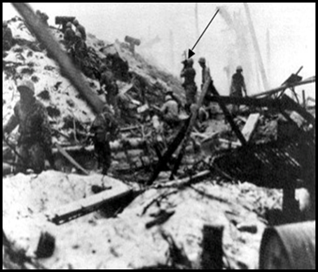
|
|
|
|
|
|
|
|
|
|
|
|
|
|
|
|
|
|
|
|
|
|
|
|
|
|
|
|
|
|
|
|
|
|
|
|
|
|
|
|
|
|
|
|
|
|
|
|
|
|
|
|
|
|
|
|
|
|
|
|
|
|
|
|
|
|
|
|
|
|
|
|
|
|
|
|
|
|
|
|
|
|
|
|
|
|
|
|
|
|
|
|
|
|
|
|
|
|
|
|
|
|
|
|
|
|
|
|
|
|
|
|
|
|
|
|
|
|
|
|
|
|
|
|
|
|
|
|
|
|
|
|
|
|
|
|
|
|
|
|
|
|
|
|
|
|
|
|
|
|
|
|
|
|
|
|
|
|
|
|
|
|
|
|
|
|
|
|
|
|
|
|
|
|
|
|
| SSgt
Hatch (see arrow) assisted by Pvt Wm Kelliher filming attack (3rd day) on bombproof Japanese emplacement by 1ST Lt Alexander
Bonneyman, awarded Medal of Honor (posthumously) for his actions |
|
|
|
|
|
|
|
|
|
|
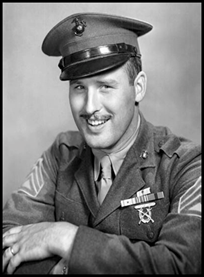
|
|
|
|
|
|
|
|
|
|
|
|
|
|
|
|
|
|
|
|
|
|
|
|
|
|
|
|
|
|
|
|
|
|
|
|
|
|
|
|
|
|
|
|
|
|
|
|
|
|
|
|
|
|
|
|
|
|
|
|
|
|
|
|
|
|
|
|
|
|
|
|
|
|
|
|
|
|
|
|
|
|
|
|
|
|
|
|
|
|
|
|
|
|
|
|
|
|
|
|
|
|
|
|
|
|
|
|
|
|
|
|
|
|
|
|
|
|
|
|
|
|
|
|
|
|
|
|
|
|
|
|
|
|
|
|
|
|
|
|
|
|
|
|
|
|
|
|
|
|
|
|
|
|
|
|
|
|
|
|
|
|
|
|
|
| Staff
Sergeant Norman Hatch in New Zealand Prior to Tarawa |
|
|
|
|
|
|
|
|
|
|
|
|
|
|
|
|
|
|
|
|
|
| One
more bit of information which I failed to mention in my letter to Joe: we had
two Navajo code talkers in our battalion. These guys were supposed to provide
for secure voice transmissions over our radio circuits. Our experience with them was not all that
successful. Their names were Tsosie
and Baldwin (first names escape me) and they were both good Marines but had
limited English language skills. Of
course this limited their ability to provide information which they had
received from their companion code talker on the other end of the radio
circuit. I realize there was a lot of
favorable publicity on the use of the Navajo code talkers during the Pacific
campaigns, but my own evaluation was much less favorable. |
|
|
|
|
|
|
|
|
|
|
|
|
|
|
|
|
|
|
|
|
|
| In the
photos shown hereafter, Eddie Fisher and I are holding the antenna which had
received a bullet hole sometime during the operation. |
|
|
|
|
|
|
|
|
|
|
|
|
|
|
|
|
|
|
|
|
|
|
|
|
|
|
|
|
|
|
|
|
|
|
|
|
|
|
|
|
|
|
|
|
|
|
|
|
|
|
|
|
|
|
|
|
|
|
|
|
|
|
|
|
|
|
|
|
|
|
|
|
|
|
|
|
|
|
|
|
|
|
|
|
|
|
|
|
|
|
|
|
|
|
|
|
|
|
|
|
|
|
|
|
|
|
|
|
|
|
|
|
|
|
|
|
|
|
|
|
|
|
|
|
|
|
|
|
|
|
|
|
|
|
|
|
|
|
|
|
|
|
|
|
|
|
|
|
|
|
|
|
|
|
|
|
|
|
|
|
|
|
|
|
|
| Eddie Fisher &
Me
Walt Sears & Me |
|
|
|
|
|
|
|
|
|
|
|
|
|
|
|
|
|
|
|
|
|
| The
flag which Walt Sears and I are holding was made of pure silk, and had an
account of every battle the Japanese regiment that possessed it had fought
in. |
|
|
|
|
|
|
|
|
|
|
|
|
|
|
|
|
|
|
|
|
|
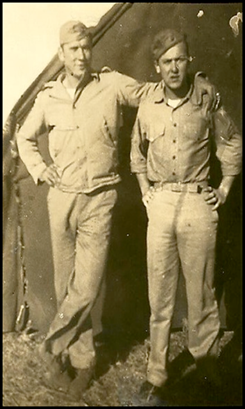
|
|
|
|
|
|
|
|
|
|
|
|
|
|
|
|
|
|
|
|
|
|
|
|
|
|
|
|
|
|
|
|
|
|
|
|
|
|
|
|
|
|
|
|
|
|
|
|
|
|
|
|
|
|
|
|
|
|
|
|
|
|
|
|
|
|
|
|
|
|
|
|
|
|
|
|
|
|
|
|
|
|
|
|
|
|
|
|
|
|
|
|
|
|
|
|
|
|
|
|
|
|
|
|
|
|
|
|
|
|
|
|
|
|
|
|
|
|
|
|
|
|
|
|
|
|
|
|
|
|
|
|
|
|
|
|
|
|
|
|
|
|
|
|
|
|
|
|
|
|
|
|
|
|
|
|
|
|
|
|
|
|
|
|
|
|
|
|
|
|
|
|
|
|
|
|
|
|
|
|
|
|
|
|
|
|
|
|
|
|
|
|
|
|
|
|
|
|
|
|
|
|
|
|
|
|
|
|
|
|
|
|
|
|
|
|
|
|
|
|
|
|
|
|
|
|
|
|
|
|
|
|
|
|
|
|
|
|
|
|
|
|
| MSgt
Lynch & Me |
|
|
|
|
|
|
|
|
|
|
| (Lynch
later KIA on Saipan) |
|
|
|
|
|
|
|
|
|
|
|
|
|
|
|
|
|
|
|
|
|
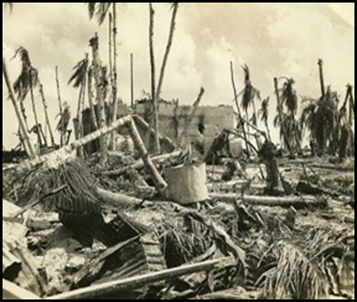
|
|
|
|
|
|
|
|
|
|
|
|
|
|
|
|
|
|
|
|
|
|
|
|
|
|
|
|
|
|
|
|
|
|
|
|
|
|
|
|
|
|
|
|
|
|
|
|
|
|
|
|
|
|
|
|
|
|
|
|
|
|
|
|
|
|
|
|
|
|
|
|
|
|
|
|
|
|
|
|
|
|
|
|
|
|
|
|
|
|
|
|
|
|
|
|
|
|
|
|
|
|
|
|
|
|
|
|
|
|
|
|
|
|
|
|
|
|
|
|
|
|
|
|
|
|
|
|
|
|
|
|
|
|
|
|
|
|
|
|
|
|
|
|
|
|
|
|
|
|
|
|
|
|
|
|
|
|
|
|
|
|
|
|
|
|
|
|
|
|
|
|
|
|
|
|
|
|
|
|
|
|
|
|
|
|
|
| Japanese
Concrete Bunkhouse Command Post |
|
|
|
|
|
|
|
|
|
|
|
|
|
|
|
|
|
|
|
|
|
|
|
|
|
|
|
|
|
|
|
|
|
|
|
|
|
|
|
|
|
|
|
|
|
|
|
|
|
|
|
|
|
|
|
|
|
|
|
|
|
|
|
|
|
|
|
|
|
|
|
|
|
|
|
|
| - - - -
- - - - - - - - - - - - - - - - - - - - - - - - - - |
|
|
|
|
|
|
|
|
|
|
| The end
of the verbatim copy of Elwin Hart’s Chapter 6 from his memoirs |
|
|
|
|
|
|
|
|
|
|
| - - - -
- - - - - - - - - - - - - - - - - - - - - - - - - - |
|
|
|
|
|
|
|
|
|
|
|
|
|
|
|
|
|
|
|
|
|
|
|
|
|
|
|
|
|
|
|
|
|
|
|
|
|
|
|
|
|
|
|
|
|
|
|
|
|
|
|
|
|
|
|
|
|
|
|
|
|
|
|
|
|
|
|
|
|
|
|
|
|
|
|
|
|
|
|
|
|
|
|
|
|
|
|
|
|
|
|
|
|
|
|
|
|
|
| While
the primary focus of this report is on Elwin Hart and his role in the Battle
of Tarawa, Elwin’s career in the Marine Corps continued for another 30½ years
after Tarawa. |
|
|
|
|
|
|
|
|
|
|
|
|
|
|
|
|
|
|
|
|
|
| At this
point, justice is best served by providing a general survey of the highlights
of Elwin Hart’s military accomplishments in those post-Tarawa years. |
|
|
|
|
|
|
|
|
|
|
|
|
|
|
|
|
|
|
|
|
|
| Part Ic
of this report covers the remainder of his Marine Corps career as an enlisted
man. |
|
|
|
|
|
|
|
|
|
|
|
|
|
|
|
|
|
|
|
|
|
| Part II
deals in general terms with his Marine Corps career as an officer. |
|
|
|
|
|
|
|
|
|
|
|
|
|
|
|
|
|
|
|
|
|
| Part
III is a tribute to Elwin’s wife Gladys. |
|
|
|
|
|
|
|
|
|
|
|
|
|
|
|
|
|
|
|
|
|
| Part IV
deals in general terms with Elwin’s life after his post-military career. |
|
|
|
|
|
|
|
|
|
|
|
|
|
|
|
|
|
|
|
|
|
| - - - -
- - - - - - - - - - - - - - - - - - - - - - - - - - |
|
|
|
|
|
|
|
|
|
|
|
|
|
|
|
|
|
|
|
|
|
|
|
|
|
|
|
|
|
|
|
|
|
|
|
|
|
|
|
|
|
|
|
|
|
|
|
|
|
|
|
|
|
|
| Next
comes the portion of this report on Elwin Hart’s Marine Corps career as an
enlisted man, covering the period up to 1950. |
|
|
|
|
|
|
|
|
|
|
|
|
|
|
|
|
|
|
|
|
|
|
|
|
|
|
|
|
|
|
|
|
|
|
|
|
|
|
|
|
|
|
|
|
|
|
|
|
|
|
|
|
|
|
| Ic |
|
|
|
|
|
|
|
|
|
|
|
|
|
|
|
|
|
|
|
|
|
| TARAWA
- OFFICERS CANDIDATE SCHOOL |
|
|
|
|
|
|
|
|
|
|
| 1943 –
1950 |
|
|
|
|
|
|
|
|
|
|
|
|
|
|
|
|
|
|
|
|
|
| Even
before the last combat at Tarawa Atoll was finished on 27 November 1943
(Battle of Buariki, where the men of the 2nd Battalion, 6th Marines were victorious), most Marines had boarded transports
for the 2,400-mile voyage to the Big Island of Hawaii where Camp Tarawa was
located. Camp Tarawa, on the famous
Parker Ranch, was chosen by the 2nd Marine Division as the site for the rebuilding of unit
personnel structures (replacing Marines who, after the battle, had been
transferred, sent home or had been killed); and extensive training and
restoring the health of surviving Marines; and the replenishing equipment and
materiel. All of this was critical to
restoring the combat capabilities of the 2nd Marine Division prior to their moving on in June 1944 some
3,850 miles to the west for their next amphibious assault – Operation Forager - at Saipan and Tinian in
the Marianas. |
|
|
|
|
|
|
|
|
|
|
| http://parkerranch.com/ |
|
|
|
|
|
|
|
|
|
|
| http://www.camptarawamcl.com/ |
|
|
|
|
|
|
|
|
|
|
| http://waimeagazette.com/Mar95_WaimeaRemembersTarawa.htm |
|
|
|
|
|
|
|
|
|
|
|
|
|
|
|
|
|
|
|
|
|
| Meanwhile,
… |
|
|
|
|
|
|
|
|
|
|
|
|
|
|
|
|
|
|
|
|
|
| Elwin
Hart was at Camp Tarawa for a few months before being transferred to Pearl
Harbor where he served as Radio Chief
of an artillery unit. In the summer of
1944, while his 2/8 had gone on to Saipan and Tinian in the Marianas, Elwin
returned Stateside to MCRD San Diego for a High Speed Radio Operators’
Course. |
|
|
|
|
|
|
|
|
|
|
|
|
|
|
|
|
|
|
|
|
|
| In
1944, Elwin also had some time off to visit his Father, Bert Hart, who worked
long and hard to support his family, managing several dry goods stores and
starting his own |
|
|
|
|
|
|
|
|
|
|
|
|
|
|
|
|
|
|
|
|
|
|
|
|
|
|
|
|
|
|
|
|
|
| |
|
|
|
|
|
|
|
|
|
|
|
|
|
|
|
|
|
|
|
|
|
|
|
|
|
|
|
|
|
|
|
|
|
|
|
|
|
|
|
|
|
|
|
|
|
|
|
|
|
|
|
|
|
|
|
|
|
|
|
|
|
|
|
|
|
|
|
|
|
|
|
|
|
|
|
|
|
|
|
|
|
|
|
|
|
|
|
|
|
|
|
|
|
|
|
|
|
|
|
|
|
|
|
|
|
|
|
|
|
|
|
|
|
|
|
|
|
|
|
|
|
|
|
|
|
|
|
|
|
|
|
| Elwin and his Father, Bert . . . . .
‘the mighty fishermen of Cross Lake, Shreveport, Louisiana’ |
|
|
|
|
|
|
|
|
|
|
|
|
|
|
|
|
|
|
|
|
|
| company
making and selling mattresses.
Wonderfully together for both Elwin and his Father, they went fishing
at Cross Lake and had a lot to catch up on since Elwin had been away to
exotic places like Samoa, Guadalcanal and Tarawa. |
|
|
|
|
|
|
|
|
|
|
|
|
|
|
|
|
|
|
|
|
|
| In
December 1944, Elwin was transferred to the Navy Radio Intelligence School on
Bainbridge Island, across Puget Sound from Seattle, Washington. Elwin’s focus
at this school included learning how to intercept Japanese radio
transmissions sent in a code similar to Morse code. He graduated from this
course with a 100% average and a promotion to Technical Sergeant, but he
still had enough capability to enjoy himself off base! Not all of his activity on Bainbridge Island
was of an official military nature! It
was here on New Year’s Eve 1944 that he met his future wife, Gladys, a US
Navy WAVE (Women Accepted for Volunteer Emergency Service). Early in March, he proposed to her, and
they were married at the end of that month. |
|
|
|
|
|
|
|
|
|
|
| http://www.history.navy.mil/photos/prs-tpic/females/wave-ww2.htm |
|
|
|
|
|
|
|
|
|
|
| http://ww2db.com/other.php?other_id=24 |
|
|
|
|
|
|
|
|
|
|
|
|
|
|
|
|
|
|
|
|
|
| As
would happen often during the remainder of Elwin’s military career, frequent
overseas deployments caused separations during which both he and Gladys
missed each other immensely. The only
upside to these separations, Elwin reports, is that his return home always
meant a new honeymoon was in store!
Often in his memoirs, Elwin pays tribute to Gladys for her faithful
support in keeping the home fires burning and ensuring Elwin had a warm,
loving home to return to. |
|
|
|
|
|
|
|
|
|
|
|
|
|
|
|
|
|
|
|
|
|
| On
completion of this Navy Radio Intelligence Course, Elwin was sent back to
Hawaii where he became NCOIC (Non-Commissioned Officer in Charge) of the 3rd Radio Intelligence
Platoon. After several weeks, somewhat
strangely, all Japanese military radio stations went off air … the first sign
for Elwin that the war in the Pacific was over. The reason for this, of course, was the
decisive application of atomic bombs on the Japanese cities of Hiroshima (6
August 1945) and Nagasaki (9 August 1945).
This writer asked Elwin about President Roosevelt and President Truman
and their role in the decision to use atomic weapons in August 1945. Without equivocation, Elwin replied, “I
thought Roosevelt and Truman probably did more for our country (than other
presidents this century) … Roosevelt for leading the WWII effort and Truman
for the courage to drop the bombs that stopped the was in the Pacific.” |
|
|
|
|
|
|
|
|
|
|
| Elwin
Hart, email to author, September 4, 2013. |
|
|
|
|
|
|
|
|
|
|
| http://www.atomicarchive.com/History/mp/introduction.shtml |
|
|
|
|
|
|
|
|
|
|
| G.
Thomas and M. Morgan-Witts, Ruin from the air: The
atomic mission to Hiroshima. ( London: |
|
|
|
|
|
|
|
|
|
|
| Hamish Hamilton, 1977). |
|
|
|
|
|
|
|
|
|
|
|
|
|
|
|
|
|
|
|
|
|
| Shortly
after war’s end, Elwin and his unit were transferred to China for less than a
year to support Marine units already there involved in reconstruction
efforts. He was sent back Stateside in
the summer of 1946 and eventually made his way to a new, though short-term,
assignment at Camp Lejeune, North Carolina. |
|
|
|
|
|
|
|
|
|
|
| http://www.lejeune.marines.mil/ |
|
|
|
|
|
|
|
|
|
|
|
|
|
|
|
|
|
|
|
|
|
| Elwin
was then transferred to the Philadelphia Naval Shipyard to be an instructor
at the Radio Operator School, but that assignment too was also short-lived
when Elwin was reassigned for two years to Camp Del Mar, adjacent to Camp
Pendleton near Oceanside, California.
There, he was an instructor at the Radio Operators School in the
Signal Schools Battalion. |
|
|
|
|
|
|
|
|
|
|
|
|
|
|
|
|
|
|
|
|
|
| In
his off-duty time at Camp Del Mar, Elwin was instrumental in forming a
baseball team that played other local civilian teams and was, as a
result, helpful in forming good
community relations with surrounding communities. In the spring of 1949, Elwin and most
members of his Camp Del Mar team were transferred to the local “big” league
of service baseball, the Camp Pendleton Marines. That team played other military teams on
the West Coast, several Pacific Coast League teams and one major league - the
Chicago White Sox managed by Luke Appling.
The Camp Pendleton team won the Military West Coast championship! |
|
|
|
|
|
|
|
|
|
|
|
|
|
|
|
|
|
|
|
|
|
| In
the summer of 1949, Elwin was transferred to San Francisco where he worked in
the Communication Center of the Department of the Pacific, the administrative
headquarters for all Marine Corps units in the Pacific. Six months into this new assignment, Elwin
was promoted to Master Sergeant, the highest enlisted rank in the Marine
Corps. He was about 25 years old, evidence that the Marine Corps appreciated
and recognized the experience and potential this young Marine had for the
Corps … a practice repeated several times by the Corps over the ensuing
almost quarter of a century! |
|
|
|
|
|
|
|
|
|
|
|
|
|
|
|
|
|
|
|
|
|
| At
virtually the same time in 1949, Elwin was recommended for Officer Candidate
School (OCS), requiring yet another transfer back to the East Coast to
Quantico, Virginia. On that trip, he
learned that the Korean War had begun. |
|
|
|
|
|
|
|
|
|
|
|
|
|
|
|
|
|
|
|
|
|
|
|
|
|
|
|
|
|
|
|
|
|
|
|
|
|
|
|
|
|
|
|
|
|
|
|
|
|
|
|
|
|
|
|
|
|
|
|
|
|
|
|
|
|
|
|
|
|
|
|
|
|
|
|
|
|
|
|
|
|
|
|
|
|
|
|
|
|
|
|
|
|
|
|
|
|
|
|
|
|
|
|
|
|
|
|
|
|
|
|
|
|
|
|
|
|
|
|
|
|
|
|
|
|
|
|
|
|
|
|
|
|
|
|
|
|
|
|
|
|
|
|
|
|
|
|
|
|
|
|
|
|
|
|
|
|
|
|
|
|
|
|
|
| Next
comes the portion of this report on Elwin Hart’s Marine Corps first 15 years
as an officer, covering the period up to 1965. |
|
|
|
|
|
|
|
|
|
|
|
|
|
|
|
|
|
|
|
|
|
|
|
|
|
|
|
|
|
|
|
|
| IIa |
|
|
|
|
|
|
|
|
|
|
|
|
|
|
|
|
|
|
|
|
|
| OCS –
KOREA – OKINAWA – VIETNAM |
|
|
|
|
|
|
|
|
|
|
| 1950 –
1965 |
|
|
|
|
|
|
|
|
|
|
|
|
|
|
|
|
|
|
|
|
|
| The
six-month OCS program (shortened because of the onset of the Korean War) was
rigorously competitive and Elwin graduated #1 in his class, earning him a
commission as a Second Lieutenant. By
coincidence, the commanding officer of the OCS program at Quantico at this
time was Colonel David Shoup who had been the ground commander of operations
at Betio, Tarawa some seven years previously.
Within another 17 years, Colonel Shoup had become a four-star General
upon his appointment by President Dwight Eisenhower as the 22nd Commandant of the
Marine Corps. |
|
|
|
|
|
|
|
|
|
|
| http://www.homeofheroes.com/DG/08c_shoup.html |
|
|
|
|
|
|
|
|
|
|
| http://arlingtoncemetery.net/shoup.htm |
|
|
|
|
|
|
|
|
|
|
|
|
|
|
|
|
|
|
|
|
|
| The
pattern of deployments to new responsibilities and new opportunities
continued. Traits he exhibited at
Tarawa continued as well, including willingness to learn and grow with new
work opportunities. Dedication and
outstanding performance were never in doubt, as recognition for his
effectiveness and leadership in training, teaching and management at many
levels came from our allies and the Department of the Navy. |
|
|
|
|
|
|
|
|
|
|
|
|
|
|
|
|
|
|
|
|
|
| In
February 1951, Elwin attended the Communication Officers School, where his
familiarity with equipment and procedures was a distinct advantage. Again, he graduated #1 in a very
competitive class and was sent to California to the 3rd Marine Brigade at Camp Pendleton. Here, as a newly-minted 2nd Lieutenant, Elwin
was assigned to be the assistant to the Brigade’s Signal Officer, performing
duties normally given to people with the rank of Major. Once again, Elwin successfully rose to the
challenge of this new assignment. |
|
|
|
|
|
|
|
|
|
|
|
|
|
|
|
|
|
|
|
|
|
| The 3rd Marine Brigade at
this time was commanded by Brigadier General Lewis Burwell “Chesty” Puller
who, when he retired in 1955, had become one of the most decorated combat
Marines in Marine Corps history. This
is the same “Chesty” Puller who once famously said in 1950, when surrounded
by enemy forces in Korea at the Choisin Reservoir, “So, they’ve got us
surrounded, good! Now we can fire in
any direction. Those b*****ds won’t get away this
time!” Little doubt that Elwin Hart could relate well to these sentiments, having performed with
distinction in a similar close-quarters situation at the Battle of Tarawa
over seven years previously! |
|
|
|
|
|
|
|
|
|
|
| http://www.3rdmarines.net/Marine_Quotes.htm |
|
|
|
|
|
|
|
|
|
|
|
|
|
|
|
|
|
|
|
|
|
| A new
assignment ensued when Elwin was soon given command of the Radio Platoon in
the Signal Company of the 3rd Marine Brigade. This
became his first platoon-level command position, and with the new
responsibilities came his promotion to 1st Lieutenant. |
|
|
|
|
|
|
|
|
|
|
|
|
|
|
|
|
|
|
|
|
|
| Flash
forward to early 1953 and Elwin again received orders for deployment to
Korea, where he, after 12 years in the Corps, became the Communications
Officer for the 2nd
Battalion, 5th Marines (an infantry battalion) serving in a role with which
he was familiar because of his previous experiences at American Samoa,
Guadalcanal and Tarawa. |
|
|
|
|
|
|
|
|
|
|
|
|
|
|
|
|
|
|
|
|
|

|
|
|
|
|
|
|
|
|
|
|
|
|
|
|
|
|
|
|
|
|
|
|
|
|
|
|
|
|
|
|
|
|
|
|
|
|
|
|
|
|
|
|
|
|
|
|
|
|
|
|
|
|
|
|
|
|
|
|
|
|
|
|
|
|
|
|
|
|
|
|
|
|
|
|
|
|
|
|
|
|
|
|
|
|
|
|
|
|
|
|
|
|
|
|
|
|
|
|
|
|
|
|
|
|
|
|
|
|
|
|
|
|
|
|
|
|
|
|
|
|
|
|
|
|
|
|
|
|
|
|
|
|
|
|
|
|
|
|
|
|
|
|
|
|
|
|
|
|
|
|
|
|
|
|
|
|
|
|
|
|
|
|
|
|
|
|
|
|
|
|
|
|
|
|
|
|
|
|
|
|
|
|
|
|
|
|
|
|
|
|
|
|
|
|
|
|
|
|
|
|
|
|
|
|
|
|
|
|
|
|
|
|
|
|
|
|
|
|
|
|
|
|
|
|
|
|
|
|
|
|
|
|
|
|
|
|
|
|
|
|
|
|
|
|
|
|
|
|
|
|
|
|
|
|
|
|
|
|
|
|
|
|
|
|
|
|
|
|
|
|
|
|
|
|
|
|
|
|
|
|
|
|
|
|
|
|
|
|
|
|
|
|
|
|
|
|
|
|
|
|
|
|
|
|
|
|
|
|
|
|
|
|
|
|
|
|
|
|
|
|
|
|
|
|
|
|
|
|
|
| BGen
“Chesty” Puller (left) escorted by Elwin (back, right) |
|
|
|
|
|
|
|
|
|
|
| on
night maneuvers on the DMZ in Korea |
|
|
|
|
|
|
|
|
|
|
| Courtesy: Elwin Hart |
|
|
|
|
|
|
|
|
|
|
|
|
|
|
|
|
|
|
|
|
|
| Elwin
relates that, when combat operations ceased with the Korean Armistice
Agreement of July 1953, he and his men had been in position right on the
demilitarized zone (DMZ) for only a few weeks. Our duties included ensuring that telephone
lines were maintained to the many observation posts we manned on the DMZ. |
|
|
|
|
|
|
|
|
|
|
|
|
|
|
|
|
|
|
|
|
|
| It was
at this time that Elwin was promoted to Captain (after 18 months as a 1st Lieutenant), and he
was again transferred and given new duties with the Korean Marine Corps
Advisory Group in Pusan as the Signal Advisor to the Korean Marine Corps
Signal Officer, Major Chung. In recognition of his services with the Korean
Marines, he was awarded the Order of Military Merit Medal with Silver Star by
the government of the Republic of Korea. |
|
|
|
|
|
|
|
|
|
|
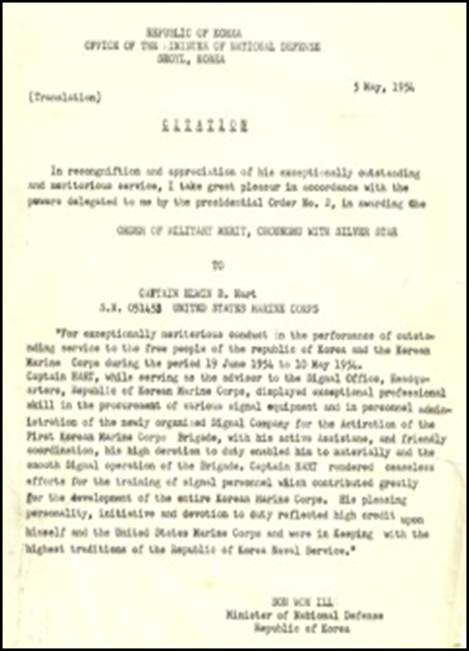
|
|
|
|
|
|
|
|
|
|
|
|
|
|
|
|
|
|
|
|
|
|
|
|
|
|
|
|
|
|
|
|
|
|
|
|
|
|
|
|
|
|
|
|
|
|
|
|
|
|
|
|
|
|
|
|
|
|
|
|
|
|
|
|
|
|
|
|
|
|
|
|
|
|
|
|
|
|
|
|
|
|
|
|
|
|
|
|
|
|
|
|
|
|
|
|
|
|
|
|
|
|
|
|
|
|
|
|
|
|
|
|
|
|
|
|
|
|
|
|
|
|
|
|
|
|
|
|
|
|
|
|
|
|
|
|
|
|
|
|
|
|
|
|
|
|
|
|
|
|
|
|
|
|
|
|
|
|
|
|
|
|
|
|
|
|
|
|
|
|
|
|
|
|
|
|
|
|
|
|
|
|
|
|
|
|
|
|
|
|
|
|
|
|
|
|
|
|
|
|
|
|
|
|
|
|
|
|
|
|
|
|
|
|
|
|
|
|
|
|
|
|
|
|
|
|
|
|
|
|
|
|
|
|
|
|
|
|
|
|
|
|
|
|
|
|
|
|
|
|
|
|
|
|
|
|
|
|
|
|
|
|
|
|
|
|
|
|
|
|
|
|
|
|
|
|
|
|
|
|
|
|
|
|
|
|
|
|
|
|
|
|
|
|
|
|
|
|
|
|
|
|
|
|
|
|
|
|
|
|
|
|
|
|
|
|
|
|
|
|
|
|
|
|
|
|
|
|
|
|
|
|
|
|
|
|
|
|
|
|
|
|
|
|
|
|
|
|
|
|
|
|
|
|
|
|
|
|
|
|
|
|
|
|
|
|
|
|
|
|
|
|
|
|
|
|
|
|
|
|
|
|
|
|
|
|
|
|
|
|
|
|
|
|
|
|
|
|
|
|
|
|
|
|
|
|
|
|
|
|
|
|
|
|
|
|
|
|
|
|
|
|
|
|
|
|
|
|
|
| Order
of Military Merit Medal with Silver Star (English translation) |
|
|
|
|
|
|
|
|
|
|
| awarded
to Elwin Hart by the Republic of Korea on 5 May 1954 |
|
|
|
|
|
|
|
|
|
|
|
|
|
|
|
|
|
|
|
|
|
|
|
|
|
|
|
|
|
|
|
|
|
|
|
|
|
|
|
|
|
|
|
| In case
the above text cannot be read clearly, a verbatim copy follows: |
|
|
|
|
|
|
|
|
|
|
|
|
|
|
|
|
|
|
|
|
|
|
|
|
|
|
|
|
|
|
|
|
|
|
|
|
|
|
|
|
|
|
|
| REPUBLIC
OF KOREA |
|
|
|
|
|
|
|
|
|
|
| OFFICE
OF THE MINISTER OF NATIONAL DEFENSE |
|
|
|
|
|
|
|
|
|
|
| SEOYL,
KOREA |
|
|
|
|
|
|
|
|
|
|
| |
|
|
|
|
|
|
|
|
|
|
| |
|
|
|
|
|
|
|
|
|
|
| (Translation)
5 May, 1954 |
|
|
|
|
|
|
|
|
|
|
| |
|
|
|
|
|
|
|
|
|
|
| |
|
|
|
|
|
|
|
|
|
|
| C I
T A T
I O N |
|
|
|
|
|
|
|
|
|
|
| |
|
|
|
|
|
|
|
|
|
|
| |
|
|
|
|
|
|
|
|
|
|
| |
|
|
|
|
|
|
|
|
|
|
| ORDER
OF MILITARY MERIT, CHOUNGMU WITH SILVER STAR |
|
|
|
|
|
|
|
|
|
|
| |
|
|
|
|
|
|
|
|
|
|
| |
|
|
|
|
|
|
|
|
|
|
| TO |
|
|
|
|
|
|
|
|
|
|
| |
|
|
|
|
|
|
|
|
|
|
| CAPTAIN
ELWIN B. Hart |
|
|
|
|
|
|
|
|
|
|
| S.N.
051453 UNITED STATES MARINE CORPS |
|
|
|
|
|
|
|
|
|
|
| |
|
|
|
|
|
|
|
|
|
|
| |
|
|
|
|
|
|
|
|
|
|
| |
|
|
|
|
|
|
|
|
|
|
| Captain
HART, while serving as the advisor to the Signal Office, Headquarters,
Republic of Korean Marine Corps, displayed exceptional professional skill in
the procurement of various signal equipment and in personnel administration
of the newly organized Signal Company for the Actiration of the First Korean
Marine Corps Brigade, with his active
Assistane, and friendly coordination, his high derotion to duty enabled him
to materially and the smooth Signal operation of the Brigade. Captain HART rendered ceaseless efforts for
the training of signal personnel which contributed greatly for the
development of the entire Korean Marine Corps. His pleasing personality, initiative and
devotion to duty reflected high credit upon himself and the United States
Marine Corps and were in Keeping with the highest traditions of the Republic
of Korea Naval Service.” |
|
|
|
|
|
|
|
|
|
|
| |
|
|
|
|
|
|
|
|
|
|
|
SON WON ILL |
|
|
|
|
|
|
|
|
|
|
|
Minister of National Defense |
|
|
|
|
|
|
|
|
|
|
|
Republic of Korea |
|
|
|
|
|
|
|
|
|
|
|
|
|
|
|
|
|
|
|
|
|
| In
the summer of 1954, Elwin returned to Camp Lejeune where he became the
Executive Officer of the Communication Company of the 2nd Marine Division, the same Marine Division he had served in
back in the days of American Samoa, Guadalcanal and Tarawa. When the Commanding Officer of the
Communication Company was promoted, Elwin too was promoted to Commanding
Officer of the Communication Company of the 2nd Marine Division, a position he held until the summer of 1956. |
|
|
|
|
|
|
|
|
|
|
|
|
|
|
|
|
|
|
|
|
|
| At
this time, Elwin, with his family, was reassigned for three years to New
Orleans – a mere 280 miles down the road from where he had graduated from
high school some 15 years before. He
was to become the Assistant Recruiting Officer for Louisiana, and in his
third year there, he was promoted to the position of Officer in Charge of
Marine Corps recruiting for Louisiana. |
|
|
|
|
|
|
|
|
|
|
|
|
|
|
|
|
|
|
|
|
|
| During
his tour in New Orleans, Elwin attended night school at Tulane University for
three years earning enough credits to qualify for attendance later in his
career at San Diego State where he was to earn a Bachelor’s degree in
Political Science. |
|
|
|
|
|
|
|
|
|
|
|
|
|
|
|
|
|
|
|
|
|
| Another
transfer came in the summer of 1959 when Elwin returned to Quantico, Virginia
for a three-year period working as an instructor in the Communication
Officers’ School, the same school he had attended as a student in 1951. One principle he employed in the
preparation of his lessons - an idea having great merit in any learning or
speaking situation - is “that each period of instruction had to have a
Purpose and three or more Main Ideas.” Captain Hart’s
pedagogy here promotes a valuable insight: effective communication requires
concise organization and persuasive delivery.
These are fundamental skills essential for the success of any
communicator, and, with practice, performance improves. |
|
|
|
|
|
|
|
|
|
|
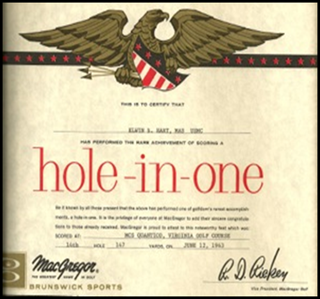
|
|
|
|
|
|
|
|
|
|
|
|
|
|
|
|
|
|
|
|
|
|
|
|
|
|
|
|
|
|
|
|
|
|
|
|
|
|
|
|
|
|
|
|
|
|
|
|
|
|
|
|
|
|
|
|
|
|
|
|
|
|
|
|
|
|
|
|
|
|
|
|
|
|
|
|
|
|
|
|
|
|
|
|
|
|
|
|
|
|
|
|
|
|
|
|
|
|
|
|
|
|
|
|
|
|
|
|
|
|
|
|
|
|
|
|
|
|
|
|
|
|
|
|
|
|
|
|
|
|
|
|
|
|
|
|
|
|
|
|
|
|
|
|
|
|
|
|
|
|
|
|
|
|
|
|
|
|
|
|
|
|
|
|
|
|
|
|
|
|
|
|
|
|
|
|
|
|
|
|
|
|
|
|
|
|
|
|
|
|
|
|
|
|
|
|
|
|
| Proof
of a job done well on the 14th hole over a distance of 147 yards |
|
|
|
|
|
|
|
|
|
|
| MCS
Quantico, Virginia Golf Course |
|
|
|
|
|
|
|
|
|
|
|
|
|
|
|
|
|
|
|
|
|
| The
certificate shown above proves that
Major Elwin B. Hart (promoted while an Instructor at Communication Officers
School) was NOT ‘all work and no play’ as an instructor. One of his greatest sporting achievements
was landing a ‘hole-in-one’ on the 14th hole of the MCS Quantico, Virginia Golf Course! |
|
|
|
|
|
|
|
|
|
|
|
|
|
|
|
|
|
|
|
|
|
| Following
his instructor work at the Communication Officers’ School, Elwin was assigned
to the Amphibious Warfare Course also in Quantico, Virginia. Sadly, about halfway through this
nine-month course, Elwin’s father died back in Louisiana. Readers of Elwin’s memoirs will have a
superb opportunity to discover the depth of love and respect this man has for
his family when reading about how his brother, sister and he stood united by
their father “at the funeral home where our Dad lay in state.” So fortunate was Elwin to have had a warm
and loving relationship with his father, which he acknowledged with alacrity
in a recent telephone call. |
|
|
|
|
|
|
|
|
|
|
|
|
|
|
|
|
|
|
|
|
|
| Elwin
was still an instructor at the Communication Officers’ School, when he
applied for and received a one-year sabbatical from the Marine Corps to
capitalize on provisions of the Marine Corps’ “Bootstrap Program” for a
one-year opportunity to earn his Bachelor of Arts degree at San Diego State
University. “Go West” again! This
Marine heard a call for greater fulfillment and greater preparation for
future career opportunities! Elwin’s results were graduation with High Honors
and with Distinction in Political Science.
Again, the Marine Corps had the evidence that it had profited from an
astute investment in this Marine officer who had such auspicious prospects.
Then in the summer of 1963, Elwin returned to Quantico as per his agreement
with the Marine Corps to complete his Amphibious Warfare Course. Without
doubt, his years of learning, teaching and modeling high standards in the
Corps equipped Elwin with clear guidelines for and future instructional and
leadership opportunities. |
|
|
|
|
|
|
|
|
|
|
|
|
|
|
|
|
|
|
|
|
|
| By
this time in the mid-1960s, the war in Vietnam was well underway and Elwin
believed he would be going to that war theater. In fact, he deployed to Okinawa (about |
|
|
|
|
|
|
|
|
|
|
|
|
|
|
|
|
|
|
|
|
|
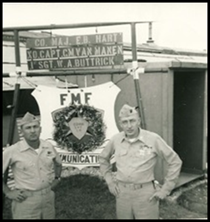
|
|
|
|
|
|
|
|
|
|
|
|
|
|
|
|
|
|
|
|
|
|
|
|
|
|
|
|
|
|
|
|
|
|
|
|
|
|
|
|
|
|
|
|
|
|
|
|
|
|
|
|
|
|
|
|
|
|
|
|
|
|
|
|
|
|
|
|
|
|
|
|
|
|
|
|
|
|
|
|
|
|
|
|
|
|
|
|
|
|
|
|
|
|
|
|
|
|
|
|
|
|
|
|
|
|
|
|
|
|
|
|
|
|
|
|
|
|
|
|
|
|
|
|
|
|
|
|
|
|
|
|
|
|
|
|
|
|
|
|
|
|
|
| Major
Elwin B. Hart and his XO Captain Charles Van Manen |
|
|
|
|
|
|
|
|
|
|
| Camp
Hague, Okinawa, Summer 1964 |
|
|
|
|
|
|
|
|
|
|
| Courtesy: Elwin Hart |
|
|
|
|
|
|
|
|
|
|
|
|
|
|
|
|
|
|
|
|
|
| 1,200
miles northeast of Hanoi), serving a full 13-month tour as the Commanding
Officer of the Signal Company of the 3rd Marine Brigade. |
|
|
|
|
|
|
|
|
|
|
|
|
|
|
|
|
|
|
|
|
|
| Elwin
and his Signal Company went on a three-month shipboard deployment in the
South China Sea offshore of the beautiful white sand beaches of Danang. Having never received orders to land, the
Brigade Signal Company as part of the 3rd Marine Brigade commanded by Brigadier General “Chesty” Puller
returned to Okinawa. The Brigade
eventually received orders to Vietnam and became the first unit to land at
Danang in February 1965. The Brigade
Headquarters was directing combat efforts of infantry units in the
field. By the summer of 1965, Elwin’s
tour of duty in Okinawa and Vietnam ended, and the long flight back to the
States brought him to San Diego … to Gladys and their family … and another
long drive across the States to the East Coast. |
|
|
|
|
|
|
|
|
|
|
|
|
|
|
|
|
|
|
|
|
|
|
|
|
|
|
|
|
|
|
|
|
|
|
|
|
|
|
|
|
|
|
|
| Next
comes the portion of this report covering the period from 1965 through to
Elwin Hart’s retirement from the Marine Corps in 1974. |
|
|
|
|
|
|
|
|
|
|
|
|
|
|
|
|
|
|
|
|
|
|
|
|
|
|
|
|
|
|
|
|
| IIb |
|
|
|
|
|
|
|
|
|
|
|
|
|
|
|
|
|
|
|
|
|
| CAMP
LEJEUNE - AMERICAN UNIVERSITY- OKINAWA - QUANTICO |
|
|
|
|
|
|
|
|
|
|
| 1965-
1974 |
|
|
|
|
|
|
|
|
|
|
|
|
|
|
|
|
|
|
|
|
|
| Once
again came increased responsibilities and a promotion to Lt. Colonel, as
Elwin was assigned to command the 8th Communication Battalion, Force Troops, Fleet Marine
Force. Their mission statement reads … |
|
|
|
|
|
|
|
|
|
|
|
|
|
|
|
|
|
|
|
|
|
| “On
order, 8th
Communication Battalion, provides, installs, operates and maintains (PIOM)
communication support to II Marine Expeditionary Force (MEF) Command Element
(CE), two Marine Expeditionary Brigades (MEB) CE, and three Marine
Expeditionary Units (MEU) CE, in order to provide reliable, redundant, robust
and secure command and control communications. 8th Communications Battalion’s simultaneous communication support
for each command is contingent upon size and scope of simultaneous
missions. Be prepared to (BPT) support
designed Major Subordinate Commands (MSC), Marine Component Commands, Special
Purpose Marine Air Ground Tasks Force (SPMAGTF) and Joint Forces (JTF) with
reliable, redundant, robust and secure command and control
communications.” |
|
|
|
|
|
|
|
|
|
|
| http://www.iimef.marines.mil/Units/8thCommunicationBattalion.aspx |
|
|
|
|
|
|
|
|
|
|
|
|
|
|
|
|
|
|
|
|
|
| Elwin’s
view of his stewardship of all 8th Communication Battalion’s activities is that it ranks as the
most complex, challenging and rewarding position in his entire 33-year
career. |
|
|
|
|
|
|
|
|
|
|
|
|
|
|
|
|
|
|
|
|
|
| On
completion of one year as Commanding Officer of the 8th Communication Battalion, Elwin was transferred to the Force
Troops Headquarters at Camp Lejeune where he assumed duties for another
one-year period as the Assistant Chief of Staff G-1 for Personnel, dealing
with all personnel issues of all the separate battalions comprising Force
Troops. This was the year, too, when Elwin was a member of the Force Troops
winning intramural golf team! |
|
|
|
|
|
|
|
|
|
|
|
|
|
|
|
|
|
|
|
|
|
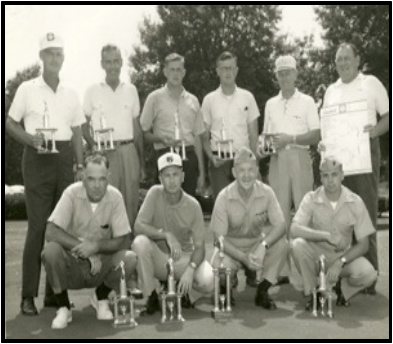
|
|
|
|
|
|
|
|
|
|
|
|
|
|
|
|
|
|
|
|
|
|
|
|
|
|
|
|
|
|
|
|
|
|
|
|
|
|
|
|
|
|
|
|
|
|
|
|
|
|
|
|
|
|
|
|
|
|
|
|
|
|
|
|
|
|
|
|
|
|
|
|
|
|
|
|
|
|
|
|
|
|
|
|
|
|
|
|
|
|
|
|
|
|
|
|
|
|
|
|
|
|
|
|
|
|
|
|
|
|
|
|
|
|
|
|
|
|
|
|
|
|
|
|
|
|
|
|
|
|
|
|
|
|
|
|
|
|
|
|
|
|
|
|
|
|
|
|
|
|
|
|
|
|
|
|
|
|
|
|
|
|
|
|
|
|
|
|
|
|
|
|
|
|
|
|
|
|
|
|
|
|
|
|
|
|
|
|
|
|
|
|
|
|
|
|
|
|
|
|
|
|
|
|
|
|
|
|
|
|
|
|
|
|
|
|
|
|
|
|
| Elwin
(front, second from left) and the Force Troops Intramural Golf Team |
|
|
|
|
|
|
|
|
|
|
| Champions
– 1966 |
|
|
|
|
|
|
|
|
|
|
|
|
|
|
|
|
|
|
|
|
|
| In
1967, Elwin was transferred to Headquarters Marine Corps (HQMC) in Arlington,
Virginia, where he was enrolled in a course titled "Technology of
Management" at American University in Washington, DC. This course served two purposes: it completed the requirements for his
Masters Degree in Public Administration which he received in 1968, and it
prepared him for assignment as an Assistant to the Director of the Data Systems
Division responsible for handling all dataa processing activities of HQMC and
for the technical supervision of the same sort of work for the entire Marine
Corps. |
|
|
|
|
|
|
|
|
|
|
| |
|
|
|
|
|
|
|
|
|
|
| In 1970
Elwin was promoted to Colonel and was given command of the Systems Control
Office of the Data Systems Division. |
|
|
|
|
|
|
|
|
|
|
|
|
|
|
|
|
|
|
|
|
|
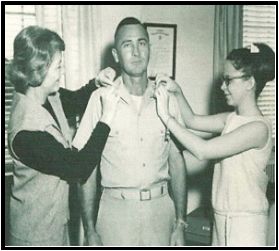
|
|
|
|
|
|
|
|
|
|
|
|
|
|
|
|
|
|
|
|
|
|
|
|
|
|
|
|
|
|
|
|
|
|
|
|
|
|
|
|
|
|
|
|
|
|
|
|
|
|
|
|
|
|
|
|
|
|
|
|
|
|
|
|
|
|
|
|
|
|
|
|
|
|
|
|
|
|
|
|
|
|
|
|
|
|
|
|
|
|
|
|
|
|
|
|
|
|
|
|
|
|
|
|
|
|
|
|
|
|
|
|
|
|
|
|
|
|
|
|
|
|
|
|
|
|
|
|
|
|
|
|
|
|
|
|
|
|
|
|
|
|
|
|
|
|
|
|
|
|
|
|
|
|
| Elwin’s
wife and daughter assist in his promotion to Colonel |
|
|
|
|
|
|
|
|
|
|
| Courtesy: Elwin Hart |
|
|
|
|
|
|
|
|
|
|
|
|
|
|
|
|
|
|
|
|
|
| In
1971, before Elwin left Arlington for his next overseas deployment, the
Department of the Navy showed its high regard for Elwin’s leadership in the
Data Systems Division at Headquarters Marine Corps by presenting him with the
Navy Commendation Medal. |
|
|
|
|
|
|
|
|
|
|
|
|
|
|
|
|
|
|
|
|
|
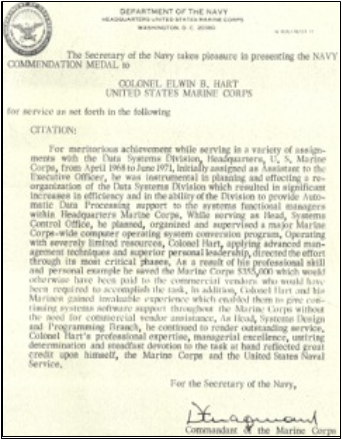
|
|
|
|
|
|
|
|
|
|
|
|
|
|
|
|
|
|
|
|
|
|
|
|
|
|
|
|
|
|
|
|
|
|
|
|
|
|
|
|
|
|
|
|
|
|
|
|
|
|
|
|
|
|
|
|
|
|
|
|
|
|
|
|
|
|
|
|
|
|
|
|
|
|
|
|
|
|
|
|
|
|
|
|
|
|
|
|
|
|
|
|
|
|
|
|
|
|
|
|
|
|
|
|
|
|
|
|
|
|
|
|
|
|
|
|
|
|
|
|
|
|
|
|
|
|
|
|
|
|
|
|
|
|
|
|
|
|
|
|
|
|
|
|
|
|
|
|
|
|
|
|
|
|
|
|
|
|
|
|
|
|
|
|
|
|
|
|
|
|
|
|
|
|
|
|
|
|
|
|
|
|
|
|
|
|
|
|
|
|
|
|
|
|
|
|
|
|
|
|
|
|
|
|
|
|
|
|
|
|
|
|
|
|
|
|
|
|
|
|
|
|
|
|
|
|
|
|
|
|
|
|
|
|
|
|
|
|
|
|
|
|
|
|
|
|
|
|
|
|
|
|
|
|
|
|
|
|
|
|
|
|
|
|
|
|
|
|
|
|
|
|
|
|
|
|
|
|
|
|
|
|
|
|
|
|
| A copy
of the citation for Elwin’s Navy Commendation Medal |
|
|
|
|
|
|
|
|
|
|
|
|
|
|
|
|
|
|
|
|
|
| In case
the above text cannot be read clearly, a verbatim copy follows: |
|
|
|
|
|
|
|
|
|
|
|
|
|
|
|
|
|
|
|
|
|
| DEPARTMENT
OF THE NAVY |
|
|
|
|
|
|
|
|
|
|
| HEADQUARTERS
UNITED STATES MARINE CORPS |
|
|
|
|
|
|
|
|
|
|
| WASHINGTON,
D. C. 20380 |
|
|
|
|
|
|
|
|
|
|
| |
|
|
|
|
|
|
|
|
|
|
| The Secretary of the Navy takes pleasure
in presenting the NAVY COMMENDATION MEDAL to |
|
|
|
|
|
|
|
|
|
|
| |
|
|
|
|
|
|
|
|
|
|
| |
|
|
|
|
|
|
|
|
|
|
| COLONEL
ELWIN B. HART |
|
|
|
|
|
|
|
|
|
|
| UNITED
STATES MARINE CORPS |
|
|
|
|
|
|
|
|
|
|
| |
|
|
|
|
|
|
|
|
|
|
| for service as set forth in the following |
|
|
|
|
|
|
|
|
|
|
| |
|
|
|
|
|
|
|
|
|
|
| CITATION: |
|
|
|
|
|
|
|
|
|
|
| |
|
|
|
|
|
|
|
|
|
|
| For meritorious achievement while
serving in a variety of assignments with the Data Systems Division,
Headquarters, U.S. Marine Corps, from April 1968 to June 1971. Initially assigned as Assistant to the
Executive Officer, he was instrumental in planning and effecting a
reorganization of the Data Systems Division which resulted in significant
increases in efficiency and in the ability of the Division to provide Automatic
Data Processing support to the systems functional managers within
Headquarters Marine Corps. While
serving as Head, Systems Control Office, he planned, organized and supervised
a major Marine Corps-wide computer operating system conversion program. Operating with severely limited resources,
Colonel Hart, applying advanced management techniques and superior personal
leadership, directed the effort through its most critical phases. As a result
of his professional skill and personal example he saved the Marine Corps
$355,000 which would otherwise have been paid to the commercial vendors who
would have been required to accomplish the task. In addition, Colonel Hart and his Marines
gained invaluable experience which enabled them to give continuing systems
software support throughout the Marine Corps without the need for commercial
vendor assistance. As Head, Systems
Design and Programming Branch, he continued to render outstanding service.
Colonel Hart’s professional expertise, managerial excellence, untiring
determination and steadfast devotion to the task at hand reflected great
credit upon himself, the Marine Corps and the United States Naval Service. |
|
|
|
|
|
|
|
|
|
|
| |
|
|
|
|
|
|
|
|
|
|
| |
|
|
|
|
|
|
|
|
|
|
|
For the Secretary of the Navy, |
|
|
|
|
|
|
|
|
|
|
|
Leonard F. Chapman, Jr / jco |
|
|
|
|
|
|
|
|
|
|
|
Commandant of the Marine Corps |
|
|
|
|
|
|
|
|
|
|
|
|
|
|
|
|
|
|
|
|
|
|
|
|
|
|
|
|
|
|
|
|
| Elwin’s
work at HQMC was nearing completion in the spring of 1971, when one more
transfer came his way: to Camp Schwab
on Okinawa to command the 3rd Service Battalion which was responsible for fulfilling all
the supply and maintenance requirements of the 3rd Marine Division. In
this capacity, Elwin was in command of
about 750 Marines, and this represented yet another example of the pattern
deployments to new responsibilities and new opportunities. |
|
|
|
|
|
|
|
|
|
|
|
|
|
|
|
|
|
|
|
|
|
| Three
highlights of Elwin’s time during this tour of duty still evoke wonderful
memories some 43 years later. First, his competitive spirit and demonstrated
skills in tennis exhibited when he was on the tennis team for four years at
Fair Park High came in handy when several young lieutenants challenged him to
a series of several ping pong matches. Elwin adapted his tennis skills to
suit the demands of ping pong, and the young lieutenants were continually
left with their tongues hanging and bewildered at their commander’s ‘take no
prisoners’ approach to the game!
Someone had to teach them!
Second, when Okinawa reverted to Japan in 1971, Americans were obliged
to begin driving on the left side of the road, and Elwin again adapted to
that new requirement. Finally, Elwin
admits that the highlight of his tour of duty on Okinawa was an event that
did not even occur on Okinawa: he flew
to Hawaii for a one-week rendezvous with Gladys! |
|
|
|
|
|
|
|
|
|
|
|
|
|
|
|
|
|
|
|
|
|
| In
June 1972, Elwin’s second tour of duty on Okinawa ended, when he received
orders to report to the Joint Chiefs of Staff in the Pentagon. Before his departure, though, his Staff
NCOs and Officers assembled for a farewell gathering, at which they presented
Elwin with a framed wall hanging displaying all his promotions through the
enlisted ranks (Private First Class to Msgt) and through the officer ranks (2nd Lieutenant to
Colonel). |
|
|
|
|
|
|
|
|
|
|
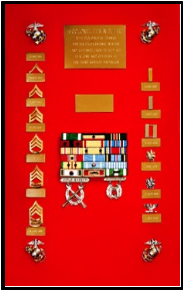
|
|
|
|
|
|
|
|
|
|
|
|
|
|
|
|
|
|
|
|
|
|
|
|
|
|
|
|
|
|
|
|
|
|
|
|
|
|
|
|
|
|
|
|
|
|
|
|
|
|
|
|
|
|
|
|
|
|
|
|
|
|
|
|
|
|
|
|
|
|
|
|
|
|
|
|
|
|
|
|
|
|
|
|
|
|
|
|
|
|
|
|
|
|
|
|
|
|
|
|
|
|
|
|
|
|
|
|
|
|
|
|
|
|
|
|
|
|
|
|
|
|
|
|
|
|
|
|
|
|
|
|
|
|
|
|
|
|
|
|
|
|
|
|
|
|
|
|
|
|
|
|
|
|
|
|
|
|
|
|
|
|
|
|
|
|
|
|
|
|
|
|
|
|
|
|
|
|
|
|
|
|
|
|
|
|
|
| The
farewell presentation to Elwin Hart from his Staff NCOs and Officers |
|
|
|
|
|
|
|
|
|
|
| when
he departed Okinawa and returned Stateside |
|
|
|
|
|
|
|
|
|
|
|
|
|
|
|
|
|
|
|
|
|
| Before
leaving for Washington, DC and the Pentagon, an opportunity arose back in
Quantico where he was assigned as the new Director of the Communications
Officers School (COS), the same school he had attended as a student some
twenty-one years previously and the same school where he had been an
instructor eleven years previously.
Elwin’s priorities included improving the curriculum, initiating the
integration of communication and computer specialties and introducing a more
rigorous 9-month Advanced Communication Officers’ Course for Captains and
Majors. |
|
|
|
|
|
|
|
|
|
|
|
|
|
|
|
|
|
|
|
|
|
| After
some three decades in the Corps, retirement plans became the object of
several discussions with Gladys. |
|
|
|
|
|
|
|
|
|
|
|
|
|
|
|
|
|
|
|
|
|
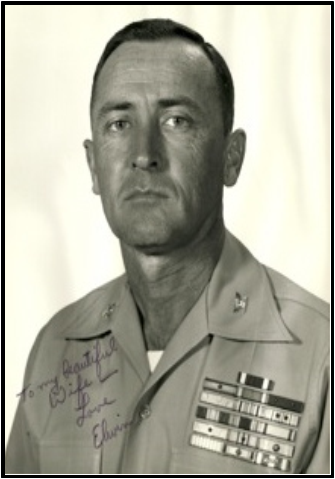
|
|
|
|
|
|
|
|
|
|
|
|
|
|
|
|
|
|
|
|
|
|
|
|
|
|
|
|
|
|
|
|
|
|
|
|
|
|
|
|
|
|
|
|
|
|
|
|
|
|
|
|
|
|
|
|
|
|
|
|
|
|
|
|
|
|
|
|
|
|
|
|
|
|
|
|
|
|
|
|
|
|
|
|
|
|
|
|
|
|
|
|
|
|
|
|
|
|
|
|
|
|
|
|
|
|
|
|
|
|
|
|
|
|
|
|
|
|
|
|
|
|
|
|
|
|
|
|
|
|
|
|
|
|
|
|
|
|
|
|
|
|
|
|
|
|
|
|
|
|
|
|
|
|
|
|
|
|
|
|
|
|
|
|
|
|
|
|
|
|
|
|
|
|
|
|
|
|
|
|
|
|
|
|
|
|
|
|
|
|
|
|
|
|
|
|
|
|
|
|
|
|
|
|
|
|
|
|
|
|
|
|
|
|
|
|
|
|
|
|
|
|
|
|
|
|
|
|
|
|
|
|
|
|
|
|
|
|
|
|
|
|
|
|
|
|
|
|
|
|
|
|
|
|
|
|
|
|
|
|
|
|
|
|
|
|
|
|
|
|
|
|
|
|
|
|
|
|
|
|
|
|
|
|
|
|
|
|
|
|
|
|
|
|
|
|
|
|
|
|
|
|
|
|
|
|
|
|
| Private
to Colonel |
|
|
|
|
|
|
|
|
|
|
| Faithful
and exemplary service to our country.
Well done, Sir! |
|
|
|
|
|
|
|
|
|
|
|
|
|
|
|
|
|
|
|
|
|
| At
about the same time, Elwin became aware of a chance for promotion to the rank
of Brigadier General - a considerable recognition by the Marine Corps for his
outstanding service and for his prospects of continued achievements in the
Corps. In a field of highly competent and deserving Marine Colonels, Elwin,
never one to shirk a new challenge, agreed with Gladys he would allow his
name to stand for promotion. However, if that decision did not lead to a
favorable outcome, he would retire. As
things turned out, retirement is what happened. |
|
|
|
|
|
|
|
|
|
|
|
|
|
|
|
|
|
|
|
|
|
| After
33 years in the U.S. Marine Corps, Colonel Elwin B. Hart decided to
retire. After numerous assignments and
many separations from his dear wife, Elwin - ever the optimist - was now in
the delightful position of never again having to be apart from his faithful
Gladys. |
|
|
|
|
|
|
|
|
|
|
|
|
|
|
|
|
|
|
|
|
|
| In his
memoirs, Elwin captures the importance of the transformation that was now
underway. |
|
|
|
|
|
|
|
|
|
|
|
|
|
|
|
|
|
|
|
|
|
| “I
had been a sixteen year old private in 1941, and was retiring as a full
Colonel some 33 years to the day later, thanks in large part to the support
of my wonderful wife Gladys during 29 of those years. I felt proud of my accomplishments and
thankful for her everlasting support, but I was sad to be leaving a life that
I really enjoyed. However, I was
looking forward to never again being apart from my beautiful bride. We still had a whole lot of living to
do.” |
|
|
|
|
|
|
|
|
|
|
|
|
|
|
|
|
|
|
|
|
|
| In a
poetic way, Colonel Elwin B. Hart was at a point in his life when he could
reflect on the long and rich perspective of his life in the Marine
Corps. The prospect of what lay ahead
brought the wonderful realization that he and Gladys together could savor all
that life has to offer in ways they had been unable to do before. |
|
|
|
|
|
|
|
|
|
|
|
|
|
|
|
|
|
|
|
|
|
|
|
|
|
|
|
|
|
|
|
|
|
|
|
|
|
|
|
|
|
|
|
|
|
|
|
|
|
|
|
|
|
|
|
|
|
|
|
|
|
|
|
|
|
|
|
|
|
|
|
|
|
|
|
|
|
|
|
|
|
|
|
|
|
|
|
|
|
|
|
|
|
|
|
|
|
|
|
|
|
|
|
|
|
|
|
|
|
|
|
|
|
|
|
|
|
|
|
|
|
|
|
|
|
|
|
|
|
|
|
|
|
|
|
|
|
|
|
|
|
|
|
|
|
|
|
|
|
|
|
|
|
| Next
comes a loving homage in Elwin's own words to his faithful wife Gladys,
formed by bringing together several passages from his memoirs Did I Do Enough? |
|
|
|
|
|
|
|
|
|
|
|
|
|
|
|
|
|
|
|
|
|
|
|
|
|
|
|
|
|
|
|
|
| III |
|
|
|
|
|
|
|
|
|
|
|
|
|
|
|
|
|
|
|
|
|
| GLADYS |
|
|
|
|
|
|
|
|
|
|
| Abiding
Love |
|
|
|
|
|
|
|
|
|
|
|
|
|
|
|
|
|
|
|
|
|
| For a
period of over 63½ years, Elwin was blessed to have a partner on the road of
life for whom he had the greatest respect and love … his wife Gladys. This writer would be remiss if a special
focus on Elwin’s own words expressing his love for Gladys were not shared -
with Elwin's permission. |
|
|
|
|
|
|
|
|
|
|
|
|
|
|
|
|
|
|
|
|
|
| Throughout
his memoirs, Elwin shares his perceptions about his faithful love and respect
for Gladys in ways, frankly, that echo the legendary love story of Odysseus
and his Penelope from ancient Greek literature. Imagine the steadfast faithfulness involved
soldiering on with 13 residence changes as Elwin’s Marine Corps career
progressed! |
|
|
|
|
|
|
|
|
|
|
|
|
|
|
|
|
|
|
|
|
|
| The
parallel between ancient Greece and present-day America is obvious: Odysseus and Elwin were away from home for
long periods of time, and both men endured the stiffest and most threatening
challenges a warrior could face when away from home. Gladys was to Elwin exactly what Penelope
was to Odysseus: the epitome of
faithful loving wives maintaining the home front while husbands dealt with
enemies to their respective states. |
|
|
|
|
|
|
|
|
|
|
| http://odysseus.culture.gr/index_en.html |
|
|
|
|
|
|
|
|
|
|
| http://www.greeka.com/ionian/ithaca/ithaca-myths/odysseus.htm |
|
|
|
|
|
|
|
|
|
|
|
|
|
|
|
|
|
|
|
|
|
| The
following are adoring references in Elwin's own words to Gladys and her
supportive role in his life … |
|
|
|
|
|
|
|
|
|
|
|
|
|
|
|
|
|
|
|
|
|
|
|
|
|
|
|
|
|
|
|
|
|
|
|
|
|
|
|
|
|
|
|
| “
Gladys sat next to me and I asked her for a date … I remember being excited
about (her) response and call her I did the next day. So began a 90 day courtship ending in our
marriage … (that lasted only) 63 wonderful years … (we) managed to find lots
of time together and I remember being in love with her almost from the very
beginning … we had so much fun dancing and laughing and joking with our
friends that we had a ball on every outing.” |
|
|
|
|
|
|
|
|
|
|
|
|
|
|
|
|
|
|
|
|
|
|
|
|
|
|
|
|
|
|
|
|
| “(Gladys)
was a loving person and related well to all my friends. I could tell that her girl friends liked
her and trusted her … On top of all that, I though she was beautiful.” |
|
|
|
|
|
|
|
|
|
|
|
|
|
|
|
|
|
|
|
|
|
|
|
|
|
|
|
|
|
|
|
|
| “I
finally realized I wanted to spend the rest of my life with her and proposed
in early March … I remember that she threw her arms around my neck and said,
“Yes, yes, yes! I love you Elwin and I
want to be your wife.” It was a joyful
moment and I will never forget it.” |
|
|
|
|
|
|
|
|
|
|
|
|
|
|
|
|
|
|
|
|
|
|
|
|
|
|
|
|
|
|
|
|
| “…
stewed tomatoes on toast. She cooked
the tomatoes in a glass pot, and as she removed it from the stove and headed
for the table, the pot broke in half and our first meal was all over the
floor. She was devastated, but we
wound up laughing so hard we cried.” |
|
|
|
|
|
|
|
|
|
|
|
|
|
|
|
|
|
|
|
|
|
|
|
|
|
|
|
|
|
|
|
|
| “Everyone
who ever met Gladys liked her. She
changed my life … Gladys soon taught me what love was all about … how often
did I hear the words at night, “Elwin, you forgot to kiss me.” |
|
|
|
|
|
|
|
|
|
|
|
|
|
|
|
|
|
|
|
|
|
|
|
|
|
|
|
|
|
|
|
|
| “We
had been in contact by mail during my 13 month absence, and I did manage a
phone call from Hawaii before I had left for China. I had missed her terribly and I was looking
forward to our reunion.” |
|
|
|
|
|
|
|
|
|
|
|
|
|
|
|
|
|
|
|
|
|
|
|
|
|
|
|
|
|
|
|
|
| “… one
particular dance at the San Onofre Beach Club … we entered a jitterbug
contest. The band playing at that
event was Spade Cooley. Gladys and I
concluded a night of fun by placing second in the jitterbug contest. Our prize was a bottle of champagne, which
was quickly devoured at our table by all of us celebrating our victory or
near victory. We enjoyed life and our
friends … “ |
|
|
|
|
|
|
|
|
|
|
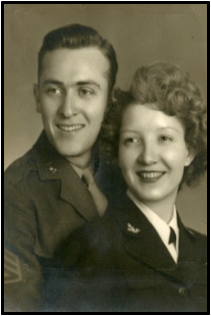
|
|
|
|
|
|
|
|
|
|
|
|
|
|
|
|
|
|
|
|
|
|
|
|
|
|
|
|
|
|
|
|
|
|
|
|
|
|
|
|
|
|
|
|
|
|
|
|
|
|
|
|
|
|
|
|
|
|
|
|
|
|
|
|
|
|
|
|
|
|
|
|
|
|
|
|
|
|
|
|
|
|
|
|
|
|
|
|
|
|
|
|
|
|
|
|
|
|
|
|
|
|
|
|
|
|
|
|
|
|
|
|
|
|
|
|
|
|
|
|
|
|
|
|
|
|
|
|
|
|
|
|
|
|
|
|
|
|
|
|
|
|
|
|
|
|
|
|
|
|
|
|
|
|
|
|
|
|
|
|
|
|
|
|
|
|
|
|
|
|
|
|
|
|
|
|
|
|
|
|
|
|
|
|
|
|
|
|
|
|
|
|
|
|
|
|
|
|
|
|
|
|
|
|
|
|
|
|
|
| Staff
Sergeant Elwin B. Hart and his beautiful bride Gladys |
|
|
|
|
|
|
|
|
|
|
| Wedding
photo, 31 March 1945, Bainbridge Island, Washington |
|
|
|
|
|
|
|
|
|
|
| “”During
our marriage, I never left the house without a goodbye kiss.” |
|
|
|
|
|
|
|
|
|
|
|
|
|
|
|
|
|
|
|
|
|
| “After
all, our new daughter Marylee was only 5 months old at that time. I was reluctant to leave (Gladys) there
alone, but she told me she would be fine.
Gladys was a real trooper; however, that didn’t stop me from worrying
about her.” |
|
|
|
|
|
|
|
|
|
|
|
|
|
|
|
|
|
|
|
|
|
|
|
|
|
|
|
|
|
|
|
|
| “Gladys
and I really enjoyed the time awaiting the start of class (Communication
Officers School), since I was basically on my own - no duties and lots of
family time.” |
|
|
|
|
|
|
|
|
|
|
|
|
|
|
|
|
|
|
|
|
|
|
|
|
|
|
|
|
|
|
|
|
| “Gladys
never complained about our life in the service, and kept a positive attitude
toward our numerous separations throughout my time in the Marine Corps. This assignment to Korea was to be the
second of our four year-long separations during our marriage. Once again, I hated leaving Gladys and
Marylee with all my heart. But we did
have a great farewell party!” |
|
|
|
|
|
|
|
|
|
|
|
|
|
|
|
|
|
|
|
|
|
|
|
|
|
|
|
|
|
|
|
|
| “Marylee
was entered in the event (a skating competition) and, although she was the
youngest participant, she won the event.
I an still recall the happiness and pride that evening brought to both
Gladys and me.” |
|
|
|
|
|
|
|
|
|
|
|
|
|
|
|
|
|
|
|
|
|
|
|
|
|
|
|
|
|
|
|
|
| “… I
headed overseas to what I thought was going to be Vietnam. It was once again a 13 month separation
from Gladys and Marylee. This was
always a painful aspect of being a career Marine.” |
|
|
|
|
|
|
|
|
|
|
|
|
|
|
|
|
|
|
|
|
|
|
|
|
|
|
|
|
|
|
|
|
| “I
returned to the good old USA for … one more tour at Camp Lejeune, North
Carolina, and another joyous reunion with my gorgeous wife Gladys and our
beautiful daughter Marylee … The separations never got any easier for me, and
I know how hard it was on Gladys and Marylee.
It was my third 13 month separation from Gladys, and my second from
Marylee. It was always a challenge,
but it came with the territory of being a career Marine.” |
|
|
|
|
|
|
|
|
|
|
|
|
|
|
|
|
|
|
|
|
|
|
|
|
|
|
|
|
|
|
|
|
| “In
1970, Chuck and I were both promoted to Colonel, and Gladys and Marylee
attended my promotion ceremony and pinned my silver eagles on to my
collar. We all felt pretty proud of
our accomplishment. After all, I had
entered the Marine Corps as a sixteen year old private fresh out of high
school. And I used the words “our
accomplishment” with all due respect to the fact that it had been an
accomplishment which would not have been possible without the love and
support of my faithful wife Gladys, and the understanding of our daughter
Marylee during my many evening hours of studying and class work, which robbed
us of many hours of family time.” |
|
|
|
|
|
|
|
|
|
|
|
|
|
|
|
|
|
|
|
|
|
|
|
|
|
|
|
|
|
|
|
|
| “…
Gladys was a real trooper; she never once complained and always kept nothing
but happy thoughts and words in our letters and tapes during our
separations. She was a model Marine
Corps wife whom I loved and admired since the day I met her …” |
|
|
|
|
|
|
|
|
|
|
|
|
|
|
|
|
|
|
|
|
|
|
|
|
|
|
|
|
|
|
|
|
| “Gladys
and I started exchanging audio tapes … (They) were invaluable to me as I
could hardly wait to get each tape and to hear Gladys’ voice and feel assured
that she was okay.” |
|
|
|
|
|
|
|
|
|
|
|
|
|
|
|
|
|
|
|
|
|
|
|
|
|
|
|
|
|
|
|
|
| “ALWAYS
involve your wife in (major) decisions.”
[Remembering his own advice, when considering a new work opportunity
after his retirement, Elwin wrote,] “After consulting with Gladys, my chief
advisor, I decided to accept the offer…” |
|
|
|
|
|
|
|
|
|
|
|
|
|
|
|
|
|
|
|
|
|
|
|
|
|
|
|
|
|
|
|
|
| “She
was a bonafide mother - through and through.
There was none better.” |
|
|
|
|
|
|
|
|
|
|
|
|
|
|
|
|
|
|
|
|
|
|
|
|
|
|
|
|
|
|
|
|
| - - -
- - - - - - - - - - - - - - - - - - - - - - - - - - - |
|
|
|
|
|
|
|
|
|
|
|
|
|
|
|
|
|
|
|
|
|
|
|
|
|
|
|
|
|
|
|
|
|
|
|
|
|
|
|
|
|
|
|
|
|
|
|
|
|
|
|
|
|
|
|
|
|
|
|
|
|
|
|
|
|
| An
incomplete presentation of what Elwin has meant to our country and his family
would result if this report focused only on Tarawa or only on his remarkable
military career. A fuller measure of
this man became possible, though, when this writer sought and was given
permission to summarize with broad-brush strokes Elwin’s remarkable
commitments and approach to life after resigning from the Marine Corps in
1974. |
|
|
|
|
|
|
|
|
|
|
|
|
|
|
|
|
|
|
|
|
|
| The
next portion of this report focuses on the new civilian life and new
challenges after Elwin Hart retired from the Marine Corps. |
|
|
|
|
|
|
|
|
|
|
|
|
|
|
|
|
|
|
|
|
|
|
|
|
|
|
|
|
|
|
|
|
| IV |
|
|
|
|
|
|
|
|
|
|
|
|
|
|
|
|
|
|
|
|
|
| NEW
LIFE, NEW CHALLENGES |
|
|
|
|
|
|
|
|
|
|
| 1974 –
2013 |
|
|
|
|
|
|
|
|
|
|
|
|
|
|
|
|
|
|
|
|
|
| After
retiring from the Marine Corps on 31 May 1974, Elwin and Gladys set out full
of optimism and hope on an entirely new path presenting challenges and
opportunities unlike anything they had faced before. Elwin was just days past his 50th birthday, and they
had already been married for 29 years.
They returned to Washington State to build their ‘dream’ home. It was to be located in Puyallup,
Washington, in Pierce County about ten miles southeast of Tacoma, the
principal metropolitan center of Pierce County. A lot of effort went into this project,
including clearing most of their one-acre site of trees so that a beautiful 3,300
square foot, two-story Colonial-style home, with an in-ground swimming pool,
could be built. For 13 years, they had a lively family life there and enjoyed
the friendship of many people in the area.
Howeve, when their children grew up and moved on, they decided to
modify their residential requirements. |
|
|
|
|
|
|
|
|
|
|
|
|
|
|
|
|
|
|
|
|
|
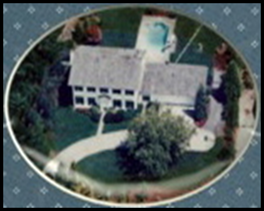
|
|
|
|
|
|
|
|
|
|
|
|
|
|
|
|
|
|
|
|
|
|
|
|
|
|
|
|
|
|
|
|
|
|
|
|
|
|
|
|
|
|
|
|
|
|
|
|
|
|
|
|
|
|
|
|
|
|
|
|
|
|
|
|
|
|
|
|
|
|
|
|
|
|
|
|
|
|
|
|
|
|
|
|
|
|
|
|
|
|
|
|
|
|
|
|
|
|
|
|
|
|
|
|
|
|
|
|
|
|
|
|
|
|
|
|
|
|
|
|
|
|
|
|
|
|
|
|
|
|
|
|
| Elwin
and Gladys’ new residence in Puyallup, Washington |
|
|
|
|
|
|
|
|
|
|
|
|
|
|
|
|
|
|
|
|
|
| Even
though he could have retired totally, Elwin had gained a lot of experience
during his military career, and he was not ready to go willingly out to
pasture. While his new home was under construction, Elwin was hired to the
full-time position of Evaluator-Researcher in the Law and Justice Planning
Office for the Pierce County Government.
This soon led to his being promoted to Director of the Law and Justice
Planning Office in which position he served for five years. Elwin liked his job, with its scope and
variety of responsibilities, and he still found time to teach night classes
at the University of Puget Sound (in Tacoma), until he wanted a new challenge
of a sort he had never faced before! |
|
|
|
|
|
|
|
|
|
|
|
|
|
|
|
|
|
|
|
|
|
| Elwin
was asked to run for the office of Sheriff of Pierce County, a political
position where he would have to campaign for the office. The idea of running for office was a
concept to which Elwin was unaccustomed because of his decades’ of experience
in the military where the requirement existed not to be political while in
Uncle Sam’s employment (the Hatch Act).
Meanwhile, before the election, because the position needed to be
filled, he was appointed temporarily in July 1979 to the position of Sheriff
by the Pierce County Commissioners for the four-month period leading up to
the election. |
|
|
|
|
|
|
|
|
|
|
|
|
|
|
|
|
|
|
|
|
|
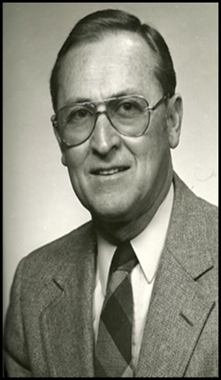
|
|
|
|
|
|
|
|
|
|
|
|
|
|
|
|
|
|
|
|
|
|
|
|
|
|
|
|
|
|
|
|
|
|
|
|
|
|
|
|
|
|
|
|
|
|
|
|
|
|
|
|
|
|
|
|
|
|
|
|
|
|
|
|
|
|
|
|
|
|
|
|
|
|
|
|
|
|
|
|
|
|
|
|
|
|
|
|
|
|
|
|
|
|
|
|
|
|
|
|
|
|
|
|
|
|
|
|
|
|
|
|
|
|
|
|
|
|
|
|
|
|
|
|
|
|
|
|
|
|
|
|
|
|
|
|
|
|
|
|
|
|
|
|
|
|
|
|
|
|
|
|
|
|
|
|
|
|
|
|
|
|
|
|
|
|
|
|
|
|
|
|
|
|
|
|
|
|
|
|
|
|
|
|
|
|
|
|
|
|
|
|
|
|
|
|
|
|
|
|
|
|
|
|
|
|
|
|
|
|
|
|
|
|
|
|
|
|
|
|
|
|
|
|
|
|
|
|
|
|
|
|
|
|
|
|
|
|
|
|
|
|
| Pierce
County Sheriff Elwin B. Hart |
|
|
|
|
|
|
|
|
|
|
| July -
November 1979 |
|
|
|
|
|
|
|
|
|
|
|
|
|
|
|
|
|
|
|
|
|
| He
would have to campaign for that position, and he accepted this challenge with
dynamism of the sort which he had never had to call on before. The concepts of overt political campaigns
and military service are mutually exclusive.
Elwin sensibly fielded a team of experienced supporters and began
campaigning hard, giving media interviews, attending public meetings and
ringing door-bells on the porches of thousands of potential voters asking for
their support … all in the evenings after his daytime work as the appointed
Sheriff. |
|
|
|
|
|
|
|
|
|
|
|
|
|
|
|
|
|
|
|
|
|
| He won
the primary election in September, but in the November General Election he
came up short by a whisker: of 90,000 votes cast, Elwin was just 300 votes
short … 1/3 of 1% difference for a total novice! |
|
|
|
|
|
|
|
|
|
|
|
|
|
|
|
|
|
|
|
|
|
| Nothing
in his entire military career had prepared him for this experience. Self-confidence, latent capacities for
growth and progress based on demonstrated abilities in a hierarchy of
military positions were aspects to Elwin’s rise through Marine Corps ranks --
not political campaigning! Yes, the
election results of November 1979 were disappointing because setbacks had
been an unknown experience for Elwin during his 33-year Marine Corps
career. |
|
|
|
|
|
|
|
|
|
|
|
|
|
|
|
|
|
|
|
|
|
| Nevertheless,
the election experience was a good learning experience. All that remained after the election was to
pay off campaign expenses … which he did!
And then he moved on. |
|
|
|
|
|
|
|
|
|
|
|
|
|
|
|
|
|
|
|
|
|
| Now
at age 55, while reassessing his future plans, Elwin became aware of a
recruiting effort underway for new Directors of the Washington State Gambling
Commission. After consulting with his
closest adviser Gladys, he applied for and was offered the position of Deputy
Director. He accepted the offer and
worked tirelessly and effectively as the Deputy Director of the Washington
State Gambling Commission for five years - to 1984. For this period, he had two 30-mile daily
commutes from Puyallup to the State Capitol in Olympia, which he did for five
years - to 1984 … ten years after retiring from the U.S. Marine Corps! He still had a lot to live for, and he
brought a lot to the table at any and all civilian work he undertook. |
|
|
|
|
|
|
|
|
|
|
|
|
|
|
|
|
|
|
|
|
|
| His
duties as Deputy Director required significant travel to the three Gambling
Commission satellite offices in Seattle, Spokane and Yakima to enforce
gambling state laws and regulations.
These included monitoring pull-tab and punchboard operations in
taverns and nightclubs throughout the state, regulation of bingo games and
raffles run by non-profit organizations and card rooms. |
|
|
|
|
|
|
|
|
|
|
|
|
|
|
|
|
|
|
|
|
|
| Elwin’s
duties gradually expanded to include liaison with the Washington State
Legislature in Olympia, and the essence of that work was lobbying legislators
on gambling issues and the need for new gambling laws in the state. Given the
almost innate skepticism of people and legislators from agricultural
communities in Eastern Washington, Elwin’s skills of persuasion were put to
the test. |
|
|
|
|
|
|
|
|
|
|
|
|
|
|
|
|
|
|
|
|
|
| When
the idea of a Washington State Lottery began to grow in 1981, Elwin, now 57
years old, was tasked with writing state law leading to a proposed statute
acceptable to both the State Gambling Commissioners and the State Legislators
for their consideration. What
happened, Elwin says, is he was both the author of the new statute and its
chief lobbyist. He had excellent
working relationships with members of the appropriate committees, and his
winning argument favoring the new statute was that passage of this new law
would significantly increase revenue flow to the state’s treasury. Elwin’s statute passed both houses of the
State Legislature in 1982, and, as things developed, that exposure and
experience made him in 1984 a logical candidate for a new job. |
|
|
|
|
|
|
|
|
|
|
|
|
|
|
|
|
|
|
|
|
|
| Beginning
in 1984 and aged 60, Elwin became the Deputy Director of the Washington State
Lottery. Elwin continued in this role
for another year, stopping only because the then-new Governor Booth Gardner
began making political appointments, as was Gardner’s privilege, to replace
various Directors of state agencies.
That process resulted in Elwin also being replaced … an experience he
had never gone through in the Marine Corps.
Like any good Marine fighter, though, Elwin rolled with the punch and
committed to continue being the optimistic and goal-oriented achiever he
always was. |
|
|
|
|
|
|
|
|
|
|
|
|
|
|
|
|
|
|
|
|
|
| On the
bright side, though, 1985 was also the occasion of the 40th wedding anniversary for Elwin and Gladys! A surprise party brought several neighbors,
and the event was savored joyously by the happy couple. |
|
|
|
|
|
|
|
|
|
|
|
|
|
|
|
|
|
|
|
|
|
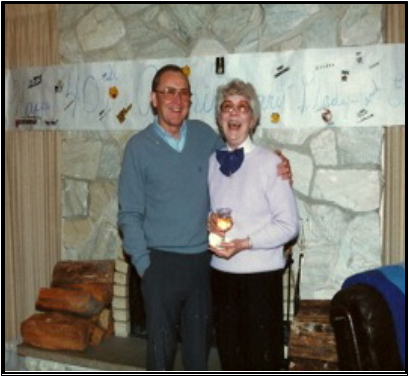
|
|
|
|
|
|
|
|
|
|
|
|
|
|
|
|
|
|
|
|
|
|
|
|
|
|
|
|
|
|
|
|
|
|
|
|
|
|
|
|
|
|
|
|
|
|
|
|
|
|
|
|
|
|
|
|
|
|
|
|
|
|
|
|
|
|
|
|
|
|
|
|
|
|
|
|
|
|
|
|
|
|
|
|
|
|
|
|
|
|
|
|
|
|
|
|
|
|
|
|
|
|
|
|
|
|
|
|
|
|
|
|
|
|
|
|
|
|
|
|
|
|
|
|
|
|
|
|
|
|
|
|
|
|
|
|
|
|
|
|
|
|
|
|
|
|
|
|
|
|
|
|
|
|
|
|
|
|
|
|
|
|
|
|
|
|
|
|
|
|
|
|
|
|
|
|
|
|
|
|
|
|
|
|
|
|
|
|
|
|
|
|
|
|
|
|
|
|
|
|
|
|
|
|
|
|
|
|
|
|
|
|
|
|
|
|
|
|
|
|
|
|
|
|
|
|
|
|
|
|
|
|
|
|
|
|
|
|
|
|
|
|
| Elwin
and Gladys Hart |
|
|
|
|
|
|
|
|
|
|
| Their
40th wedding
anniversary on 31 March 1985 |
|
|
|
|
|
|
|
|
|
|
|
|
|
|
|
|
|
|
|
|
|
| Still
in his early 60s, Elwin was full of energy and desire to use his abilities in
positive and constructive ways. In
time, he capitalized on his previous Washington State Lottery experience by
applying for and being accepted as the Deputy Director of the Colorado State
Lottery. Any Marine who went through
combat such as that encountered at Guadalcanal, Tarawa, Korea and Vietnam, as
did Elwin Hart, would be the first to agree that much of life is a gamble …
go with the flow and make the best of every situation possible. Again, Elwin’s optimism and competitive
spirit energized so much of what he accomplished in his years after retiring from
the Marine Corps. |
|
|
|
|
|
|
|
|
|
|
|
|
|
|
|
|
|
|
|
|
|
| Off
to Colorado they went. Elwin attended
a meeting of the Colorado Lottery Commission late in the day of their
arrival. With perceptive instincts,
he learned enough about operations at the Colorado Lottery Commission meeting
to persuade him that this new position was not going to be what he wanted to
do, and that led to his decision to resign two days later. Sometimes, life’s gambles are not worth
getting involved with when examining them to any depth, and the sooner a
person decides to dissociate with the new circumstances the better. No hurt
feelings on anybody’s part (surprise, maybe!), and consequently, Elwin and
Gladys decided to return to Washington State. |
|
|
|
|
|
|
|
|
|
|
|
|
|
|
|
|
|
|
|
|
|
| On
New Year's Day of 1986, Gladys' beloved mother Katie passed away. Everybody in the family called her Mom,
including Elwin. Elwin's own moter Ina
Mae (McMahen) Hart had died back on 9 October 1934, when Elwin was only 10
years old, from complications in childbirth when his only sister Yvon was
born, and such a long time had passed since he had lost his mother that his
childhood memories of her were hard to maintain. That is one reason why Elwin was so
comfortable with calling Katie ... Mom. |
|
|
|
|
|
|
|
|
|
|
|
|
|
|
|
|
|
|
|
|
|
| Gladys’
Mother had owned a ranch in Broadus, Montana for many years, and Gladys and
Elwin nostalgically chose to visit what remained of the old ranch on their
return to Washington State. As a young
girl, Gladys herself had lived on this ranch for several years. She had fond memories of her early years in
Broadus and wanted to visit two of her oldest friends. |
|
|
|
|
|
|
|
|
|
|
|
|
|
|
|
|
|
|
|
|
|
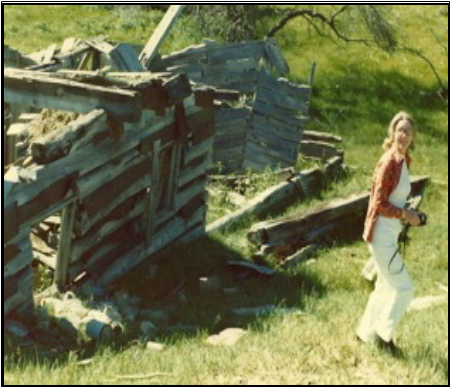
|
|
|
|
|
|
|
|
|
|
|
|
|
|
|
|
|
|
|
|
|
|
|
|
|
|
|
|
|
|
|
|
|
|
|
|
|
|
|
|
|
|
|
|
|
|
|
|
|
|
|
|
|
|
|
|
|
|
|
|
|
|
|
|
|
|
|
|
|
|
|
|
|
|
|
|
|
|
|
|
|
|
|
|
|
|
|
|
|
|
|
|
|
|
|
|
|
|
|
|
|
|
|
|
|
|
|
|
|
|
|
|
|
|
|
|
|
|
|
|
|
|
|
|
|
|
|
|
|
|
|
|
|
|
|
|
|
|
|
|
|
|
|
|
|
|
|
|
|
|
|
|
|
|
|
|
|
|
|
|
|
|
|
|
|
|
|
|
|
|
|
|
|
|
|
|
|
|
|
|
|
|
|
|
|
|
|
|
|
|
|
|
|
|
|
|
|
|
|
|
|
|
|
|
|
|
|
|
|
|
|
|
|
|
|
|
|
|
|
|
|
|
|
|
|
|
|
|
|
|
|
|
|
|
|
|
|
|
|
|
|
|
|
|
|
|
|
|
|
|
|
|
|
| Gladys
at her childhood family cabin near Broadus, Montana, on the 1986 visit |
|
|
|
|
|
|
|
|
|
|
| Courtesy: Elwin Hart |
|
|
|
|
|
|
|
|
|
|
|
|
|
|
|
|
|
|
|
|
|
| Broadus
is a very small town in the grasslands and gentle rolling hills of Eastern
Montana, a region that to some people appears remote and desolate, but
readers are in for a treat! Out on the
Great Plains there is a lot of history and broad vistas of powerful natural
beauty ... much of this vividly captured in the art of Charles M.
Russell. |
|
|
|
|
|
|
|
|
|
|
|
|
|
|
|
|
|
|
|
|
|
| In
the early 1800s the Lewis and Clark’s Corps of Discovery traveled through
this area on their historic trek to the Pacific Ocean. Cattle ranchers with their cowboys and
later a few homesteaders settled in the area from the early-1800s
onward. Broadus itself is about 100
miles east southeast of the site of the Battle of the Little Big Horn, where
General Custer and part of his 7th Cavalry Regiment fought to the end against
Lakota Sioux, Northern Cheyenne and Arapaho warriors on 25-26 June 1876. |
|
|
|
|
|
|
|
|
|
|
|
|
|
|
|
|
|
|
|
|
|
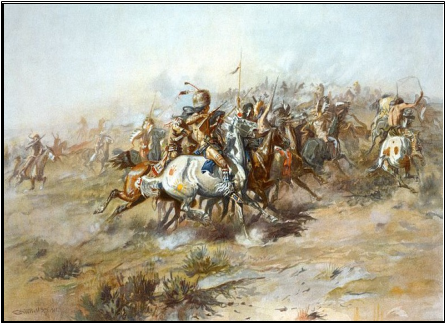
|
|
|
|
|
|
|
|
|
|
|
|
|
|
|
|
|
|
|
|
|
|
|
|
|
|
|
|
|
|
|
|
|
|
|
|
|
|
|
|
|
|
|
|
|
|
|
|
|
|
|
|
|
|
|
|
|
|
|
|
|
|
|
|
|
|
|
|
|
|
|
|
|
|
|
|
|
|
|
|
|
|
|
|
|
|
|
|
|
|
|
|
|
|
|
|
|
|
|
|
|
|
|
|
|
|
|
|
|
|
|
|
|
|
|
|
|
|
|
|
|
|
|
|
|
|
|
|
|
|
|
|
|
|
|
|
|
|
|
|
|
|
|
|
|
|
|
|
|
|
|
|
|
|
|
|
|
|
|
|
|
|
|
|
|
|
|
|
|
|
|
|
|
|
|
|
|
|
|
|
|
|
|
|
|
|
|
|
|
|
|
|
|
|
|
|
|
|
| Gladys’
childhood home was about 100 miles east of where Custer’s Last Stand
occurred. |
|
|
|
|
|
|
|
|
|
|
| “The
Custer Fight” Charles Russell, 1903 |
|
|
|
|
|
|
|
|
|
|
| http://www.historynet.com/c-m-russell-art-of-the-west.htm |
|
|
|
|
|
|
|
|
|
|
| http://www.nps.gov/libi/historyculture/index.htm |
|
|
|
|
|
|
|
|
|
|
| http://www.charlesmarionrussell.org/ |
|
|
|
|
|
|
|
|
|
|
|
|
|
|
|
|
|
|
|
|
|
| On
their return to the Puget Sound area, Elwin and Gladys settled for several
years in a very comfortable triple-wide mobile home on a lot they already
owned in a mobile home park for seniors south of Puyallup, Washington. They were back home in beautiful Pierce
County. Again, Gladys made this
residence into a comfortable, beautiful and inviting home to live in. |
|
|
|
|
|
|
|
|
|
|
|
|
|
|
|
|
|
|
|
|
|
| By
1990, with Elwin and Gladys in their mid-60s, the idea of no interference
with living life in a relatively
carefree manner had winning appeal, as did the warmer and drier winters which
attracted them like a magnet to the Southwest. For several years, they drove between
Washington State and Arizona to a compact mobile home they purchased in the
Phoenix area. Here too, Elwin and
Gladys had many friends and had ample opportunity for exercise in the dry
heat. Morning walks around the
three-mile inside perimeter of the residential park were good for lubricating
the joints, as were several nearby golf courses. Spectacular sunsets and
clear night skies were jaw-dropping awesome! |
|
|
|
|
|
|
|
|
|
|
|
|
|
|
|
|
|
|
|
|
|
| It
was here after one of his golfing outings in 1997 that Elwin, approaching his
73rd birthday,
experienced chest pains that required medical intervention. Diagnosed with severe blockage (about 90%)
in two arteries, double by-pass surgery was essential. As of this writing in late 2013, Elwin is
still going strong as his 90th birthday approaches! A
good Marine cannot be kept down! |
|
|
|
|
|
|
|
|
|
|
|
|
|
|
|
|
|
|
|
|
|
| In the
late 1990s, Elwin and Gladys wanted more room and purchased a larger
condominium also in the Phoenix area.
This led to a move to a house larger than the condominium where they
stayed full-time until the spring of 2002 … for what turned out to be their
last winter in Arizona. |
|
|
|
|
|
|
|
|
|
|
|
|
|
|
|
|
|
|
|
|
|
| A
change in their plans was brought about by health issues Gladys began to
face, and she told Elwin she wanted to return to Washington State. It was now April 2002, and Elwin and Gladys
were in their upper 70s. They packed
up their belongings and drove back to Puyallup, Washington … a beautiful trip
regardless of the route taken. |
|
|
|
|
|
|
|
|
|
|
|
|
|
|
|
|
|
|
|
|
|
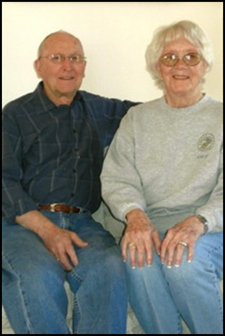
|
|
|
|
|
|
|
|
|
|
|
|
|
|
|
|
|
|
|
|
|
|
|
|
|
|
|
|
|
|
|
|
|
|
|
|
|
|
|
|
|
|
|
|
|
|
|
|
|
|
|
|
|
|
|
|
|
|
|
|
|
|
|
|
|
|
|
|
|
|
|
|
|
|
|
|
|
|
|
|
|
|
|
|
|
|
|
|
|
|
|
|
|
|
|
|
|
|
|
|
|
|
|
|
|
|
|
|
|
|
|
|
|
|
|
|
|
|
|
|
|
|
|
|
|
|
|
|
|
|
|
|
|
|
|
|
|
|
|
|
|
|
|
|
|
|
|
|
|
|
|
|
|
|
|
|
|
|
|
|
|
|
|
|
|
|
|
|
|
|
|
|
|
|
|
|
|
|
|
|
|
|
|
|
|
|
|
|
|
|
|
|
|
|
|
|
|
|
|
|
|
|
|
|
|
|
|
|
|
|
|
|
|
|
|
|
|
|
|
|
| Elwin
and Gladys visiting family |
|
|
|
|
|
|
|
|
|
|
| in
Wenatchee, Washington in 2006 |
|
|
|
|
|
|
|
|
|
|
|
|
|
|
|
|
|
|
|
|
|
| For
nearly five years, health issues were increasingly a problem for Gladys, and
in the spring of 2007 she fell and broke her left femur in three places. Elwin, ever the stalwart Marine who had
trained for years to deal with emergencies, saw Gladys off in an ambulance to
a nearby hostpital in Puyallup where the surgeon installed a long metal plate
over the area where the breaks had occurred.
Gladys' overall health decline continued and her surgery ultimately
proved unsuccessful. She was allowed
to go home, and Elwin - faithful and thoroughly attentive to her many needs -
had the sole care of the love of his life for the next 15 months. |
|
|
|
|
|
|
|
|
|
|
|
|
|
|
|
|
|
|
|
|
|
| True
to his nature, Elwin gave his all to support Gladys as her overall health
declined. Elwin personified the spirit of Semper Fidelis with his dedicated commitment to her. What Elwin went through
personally to care and support the love of his life took a severe toll:
he lost 30 pounds and was increasingly distressed about his increasing
inability to make any positive difference in Gladys’ situation. For Elwin,
always being faithful has always meant much more than just words; it also
means rallying all possible assistance to effect positive outcomes. |
|
|
|
|
|
|
|
|
|
|
|
|
|
|
|
|
|
|
|
|
|
| The
thought that doing his best for Gladys without being able to reverse Gladys'
decline upset him deeply. This Marine
who survived combat on Guadalcanal, Tarawa, Korea and Vietnam and rose
steadily through the enlisted and officer ranks of the Marine Corps because
of his abilities felt so helpless and inadequate. The poignancy for Elwin caused by this
situation became even more acute considering how Gladys tried to cope with her
deteriorating condition. In his
memoirs, Elwin reflects on this period by saying, |
|
|
|
|
|
|
|
|
|
|
| “Gladys
never complained about her situation and I really admired her composure and
her attempts to make me feel comfortable with our situation. She had the courage and character of
someone who most of us could only aspire to live up to.” |
|
|
|
|
|
|
|
|
|
|
|
|
|
|
|
|
|
|
|
|
|
| By
August of 2008, Elwin reluctantly allowed Gladys to be admitted to a nearby
family care home because he and others knew he could not continue as her sole
caretaker. Shortly after her admission to the care home, Gladys suddenly
wanted to go back home. Gladys never
returned home, but she repeatedly asked Elwin, “Are we going home today?” |
|
|
|
|
|
|
|
|
|
|
|
|
|
|
|
|
|
|
|
|
|
| What
Elwin was going through at this time was made all the more distressing
because he is a highly moral, very thoughtful, dutiful and caring person. A
comment by Elwin on the occasion of his retirement from the Marine Corps in
1974 ironically presages the situation Elwin faced as Gladys’ health
continued to decline in 2008. |
|
|
|
|
|
|
|
|
|
|
|
|
|
|
|
|
|
|
|
|
|
| Back
in 1974, Elwin felt proud of his accomplishments over the 33-year period of
his career in the Marine Corps and was thankful for Gladys’ everlasting
support through almost all of that time.
In 2008, by contrast, some 34 years after retiring from the Marine
Corps, Elwin faced the opposite situation:
True, he felt ever so thankful for over 63 years of a superb and
mutually loving marriage, but in October 2008 he felt helpless to provide
effective support for his loving wife Gladys. Realizing that he might have to
accept the prospects of never again being with his beautiful bride whom he
loved so much was a terrible and overwhelming experience he would have
avoided at all cost, if only he could. |
|
|
|
|
|
|
|
|
|
|
|
|
|
|
|
|
|
|
|
|
|
| It is
out of this context that the title of Elwin’s memoirs emerged. |
|
|
|
|
|
|
|
|
|
|
|
|
|
|
|
|
|
|
|
|
|
| Elwin’s
numerous superlative tributes to his wife contain sentiments sympathetically
and freely expressed by Gladys’ sister Phyllis who, in late 2008, wrote to
Elwin: |
|
|
|
|
|
|
|
|
|
|
|
|
|
|
|
|
|
|
|
|
|
| “You
and she lived a long and eventful life together. You made her happy. She was always proud of you and of your
achievements … You and she represented a world that was better, happier, more
meaningful and showed possibilities which I could observe … You were a
wonderful husband Elwin, and Gladys knew that and loved you very much.” |
|
|
|
|
|
|
|
|
|
|
|
|
|
|
|
|
|
|
|
|
|
| Without
doubt, Elwin and others recognized the abiding and mutual love in a
remarkable marriage of 63 years, 6 months and 26 days. Like so many others in the same situation,
Elwin felt devastated by Gladys’ passing.
Her decline continued until the morning of Sunday, 26 October
2008. She could not go on, and, in one
sense, both Gladys and Elwin lost their life’s companion. |
|
|
|
|
|
|
|
|
|
|
|
|
|
|
|
|
|
|
|
|
|
| At
such a time, comfort is what is needed, and one appropriate source of comfort
speaking directly to Elwin comes from Kahlil Gibran’s masterpiece The Prophet (New York: Alfred A. Knopf, 1923), 15-16: |
|
|
|
|
|
|
|
|
|
|
|
|
|
|
|
|
|
|
|
|
|
| "And
what of Marriage, master? |
|
|
|
|
|
|
|
|
|
|
| And he
answered saying: |
|
|
|
|
|
|
|
|
|
|
| …
together you shall be forevermore. |
|
|
|
|
|
|
|
|
|
|
| … let
there be spaces in your togetherness, |
|
|
|
|
|
|
|
|
|
|
| And
let the winds of the heavens dance between you. |
|
|
|
|
|
|
|
|
|
|
|
|
|
|
|
|
|
|
|
|
|
| Love
one another … Let (love) … be a moving sea |
|
|
|
|
|
|
|
|
|
|
| between
the shores of your souls. |
|
|
|
|
|
|
|
|
|
|
|
|
|
|
|
|
|
|
|
|
|
| Sing
and dance together and be joyous … Even as the strings of a lute are
alone |
|
|
|
|
|
|
|
|
|
|
| though
they quiver with the same music. |
|
|
|
|
|
|
|
|
|
|
|
|
|
|
|
|
|
|
|
|
|
| Stand
together yet not too near together:
For the pillars of the temple stand apart, |
|
|
|
|
|
|
|
|
|
|
| And
the oak tree and the cypress grow not in each other’s shadow." |
|
|
|
|
|
|
|
|
|
|
|
|
|
|
|
|
|
|
|
|
|
| People
who have not gone through such tormenting situations cannot fully appreciate
the agonizing decision-making processes that are experienced. The long emotional toll on Elwin has been
immense, but he has had close friends who have stood with him and walked with
him through the difficult times. Chief
among those has been a close friend and neighbor of Gladys and Elwin, Nancy
Martin. She could empathize with all
the dimensions of what Gladys and Elwin were going through because she too
had seen what her own mother went through.
Elwin is quick to commend Nancy for her support at this time, when he writes:
“I honestly do not think I could have made it through the many months without
(Nancy’s) counsel and advice. I owe her an everlasting debt of gratitude.”
Little wonder that Elwin now is so supportive of the health care axiom that
‘caregivers too need to be cared for.’ |
|
|
|
|
|
|
|
|
|
|
|
|
|
|
|
|
|
|
|
|
|
| The
proverb that ‘it is sometimes difficult to see the forest for the trees’ is
appropriate in the context of what Elwin went through. |
|
|
|
|
|
|
|
|
|
|
|
|
|
|
|
|
|
|
|
|
|
| Metaphorically,
someone who can't see the forest for the trees typically becomes so
preoccupied with present and immediate concerns that he or she risks losing
perspective on other, perhaps bigger, concerns. In such trying circumstances as what Elwin
faced, advantages can - and did - accrue to the person who allows time to
take its own course, who takes a step or two or more back from a difficult
situation to regain a wider perspective on the problems he or she faces. Doing so can make people better problem
solvers because they know or learn the wisdom of contemplating and
occasionally talking with others about problems being faced. Such a way of dealing with difficult issues
can help a person regain perspective and approach life with a new
perspective. |
|
|
|
|
|
|
|
|
|
|
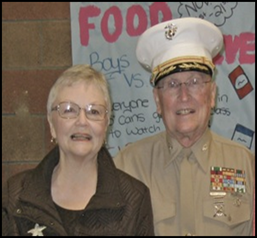
|
|
|
|
|
|
|
|
|
|
|
|
|
|
|
|
|
|
|
|
|
|
|
|
|
|
|
|
|
|
|
|
|
|
|
|
|
|
|
|
|
|
|
|
|
|
|
|
|
|
|
|
|
|
|
|
|
|
|
|
|
|
|
|
|
|
|
|
|
|
|
|
|
|
|
|
|
|
|
|
|
|
|
|
|
|
|
|
|
|
|
|
|
|
|
|
|
|
|
|
|
|
|
|
|
|
|
|
|
|
|
|
|
|
|
|
|
|
|
|
|
|
|
|
|
|
|
|
|
|
|
|
|
|
|
|
|
|
|
|
|
|
|
|
|
|
|
|
|
|
|
|
|
|
| Nancy
Kling and Elwin Hart |
|
|
|
|
|
|
|
|
|
|
| at a
book-signing event on Veterans Day 2011 |
|
|
|
|
|
|
|
|
|
|
| at
Todd Beamer High School, Federal Way, Washington |
|
|
|
|
|
|
|
|
|
|
|
|
|
|
|
|
|
|
|
|
|
| After
a few years of pragmatic reflection, self-assessment and prioritization,
Elwin has found a new balance and new sense of purpose that daily provides a
joyful and optimistic outlook on life.
Elwin and another good friend - Nancy Kling - have enjoyed each
other’s company for quite some time, even getting out to book-signing events
for Elwin’s memoirs, such as the visit to Todd Beamer High School in Federal
Way, Washington. |
|
|
|
|
|
|
|
|
|
|
|
|
|
|
|
|
|
|
|
|
|
| In
January 2012, Elwin Hart and Nancy Kling confidently affirmed their loving
companionship and stepped into the future by getting married. They have known each other for several
years, and Elwin reports, “We are very happy and feel blessed to have found
each other at this stage of our lives.”
They have travelled extensively since their wedding, and their second
wedding anniversary is not too many weeks ahead! |
|
|
|
|
|
|
|
|
|
|
|
|
|
|
|
|
|
|
|
|
|
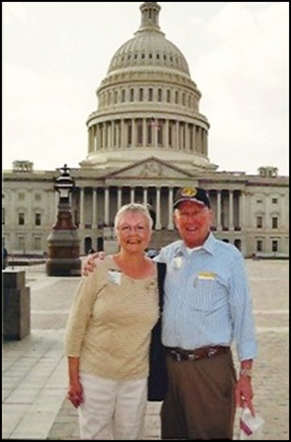
|
|
|
|
|
|
|
|
|
|
|
|
|
|
|
|
|
|
|
|
|
|
|
|
|
|
|
|
|
|
|
|
|
|
|
|
|
|
|
|
|
|
|
|
|
|
|
|
|
|
|
|
|
|
|
|
|
|
|
|
|
|
|
|
|
|
|
|
|
|
|
|
|
|
|
|
|
|
|
|
|
|
|
|
|
|
|
|
|
|
|
|
|
|
|
|
|
|
|
|
|
|
|
|
|
|
|
|
|
|
|
|
|
|
|
|
|
|
|
|
|
|
|
|
|
|
|
|
|
|
|
|
|
|
|
|
|
|
|
|
|
|
|
|
|
|
|
|
|
|
|
|
|
|
|
|
|
|
|
|
|
|
|
|
|
|
|
|
|
|
|
|
|
|
|
|
|
|
|
|
|
|
|
|
|
|
|
|
|
|
|
|
|
|
|
|
|
|
|
|
|
|
|
|
|
|
|
|
|
|
|
|
|
|
|
|
|
|
|
|
|
|
|
|
|
|
|
|
|
|
|
|
|
|
|
|
|
|
|
|
|
|
|
|
|
|
|
|
|
|
|
|
|
|
|
|
|
|
|
|
|
|
|
|
|
|
|
|
|
|
|
|
|
|
|
|
|
|
|
|
|
|
|
|
|
|
| Nancy
and Elwin Hart |
|
|
|
|
|
|
|
|
|
|
| Washington,
DC in 2012 |
|
|
|
|
|
|
|
|
|
|
| Elwin
Hart, email to author, July 29, 2013 |
|
|
|
|
|
|
|
|
|
|
|
|
|
|
|
|
|
|
|
|
|
| As
Elwin proved frequently in past decades, he is a problem solver. One truism in descriptive statistics is
that past performance is the best predictor of future performance. |
|
|
|
|
|
|
|
|
|
|
|
|
|
|
|
|
|
|
|
|
|
| As
readers of his memoirs will have realized, Elwin finds imaginative ways to
deal with and solve problems, regardless of their nature, such as … |
|
|
|
|
|
|
|
|
|
|
|
|
|
|
|
|
|
|
|
|
|
| • rescuing a wounded Marine in a night time
operation on Samoa … |
|
|
|
|
|
|
|
|
|
|
| • finding ways to optimize tactical radio
procedures during battle at Tarawa … |
|
|
|
|
|
|
|
|
|
|
| • proving he could solve seemingly impossible
tasks with limited resources at OCS … |
|
|
|
|
|
|
|
|
|
|
| • finding ways to ensure recruiting quotas in
Louisiana are met or exceeded … |
|
|
|
|
|
|
|
|
|
|
| • reorganizing a battalion to make it more
battle ready and more efficient to lead … |
|
|
|
|
|
|
|
|
|
|
| • increasing efficient productivity at the
Data Systems Division at HQMC Quantico … |
|
|
|
|
|
|
|
|
|
|
| • learning how to lobby state legislators …
successfully! … |
|
|
|
|
|
|
|
|
|
|
| • finding ways to help neighbors in desperate
need … |
|
|
|
|
|
|
|
|
|
|
| • figuring out ways to deal with and growing
through personal challenges … |
|
|
|
|
|
|
|
|
|
|
| • improvising and adapting effectively to
generate needed problem-solving strategies. |
|
|
|
|
|
|
|
|
|
|
|
|
|
|
|
|
|
|
|
|
|
| The
passage of time and good friendships have enabled Elwin to find ways to move
forward. As well, his innate optimism and his ability to learn and adapt make
the following stanzas particularly appropriate to Elwin ... from “Pick Yourself Up” in the 1936
musical comedy Swing Time: |
|
|
|
|
|
|
|
|
|
|
| http://lyricsplayground.com/alpha/songs/p/pickyourselfup.shtml |
|
|
|
|
|
|
|
|
|
|
|
|
|
|
|
|
|
|
|
|
|
| “Nothing’s
impossible I have found, |
|
|
|
|
|
|
|
|
|
|
| For
when my chin is on the ground, |
|
|
|
|
|
|
|
|
|
|
| I pick
myself up, |
|
|
|
|
|
|
|
|
|
|
| Dust
myself off, |
|
|
|
|
|
|
|
|
|
|
| Start
all over again. |
|
|
|
|
|
|
|
|
|
|
|
|
|
|
|
|
|
|
|
|
|
| Don’t
lose your confidence if you slip, |
|
|
|
|
|
|
|
|
|
|
| Be
grateful for a pleasant trip, |
|
|
|
|
|
|
|
|
|
|
| And
pick yourself up, |
|
|
|
|
|
|
|
|
|
|
| Dust
yourself off, |
|
|
|
|
|
|
|
|
|
|
| Start
all over again. |
|
|
|
|
|
|
|
|
|
|
|
|
|
|
|
|
|
|
|
|
|
| Work
like a soul inspired, |
|
|
|
|
|
|
|
|
|
|
| Till
the battle of the day is won. |
|
|
|
|
|
|
|
|
|
|
| You may
be sick and tired, |
|
|
|
|
|
|
|
|
|
|
| But
you’ll be a man, my son!” |
|
|
|
|
|
|
|
|
|
|
|
|
|
|
|
|
|
|
|
|
|
|
|
|
|
|
|
|
|
|
|
|
| In
retrospect, Elwin has risen to and grown from life's challenges. He approaches life in much the same manner
he has in the past. And, to paraphrase
Colonel Shoup's message from Betio to 2nd Marine Division Headquarters on the
USS Maryland nearly 70 years
ago: Elwin is winning! |
|
|
|
|
|
|
|
|
|
|
|
|
|
|
|
|
|
|
|
|
|
| Did
you do enough, Elwin? Yes! You have done so much, accomplished so
much, been an inspiring role model for so many … you could not have done
more. Yes, there are some situations
in life that humans cannot control. That is part and parcel of simply being
human, even though one may well dislike what happens. Adaptability is a key to survival. You have
seen that many times in your life. Time can smooth the road ahead and help
restore a good sense of what is worthwhile and possible in life. Nobody with
a good, caring heart and a good, sound mind can fault you for living your
life purposefully, the way you have. |
|
|
|
|
|
|
|
|
|
|
|
|
|
|
|
|
|
|
|
|
|
| It is
the welcome duty of your fellow countrymen to remember all the good you have
accomplished for our country. This
report serves to help us remember. As
one who served in the 2nd Marine Division, you know the power and inspiration
underlying that Division’s motto … “FOLLOW ME!” |
|
|
|
|
|
|
|
|
|
|
|
|
|
|
|
|
|
|
|
|
|
| One
lesson you have taught so well is that perseverance and the will to overcome
are essential to meeting or beating or coexisting with life’s
challenges. Living life fully also
means maximizing the value of whatever is to be gleaned from life’s
challenges. The words you transmitted 70 years ago from the hot, bloody sands
of Tarawa … “We are winning!” … are
about having hope and believing and not quitting. Your life story is about
aiming high, reaching farther, being astute and enjoying the fruits of a life
well lived. You are still doing
that. And we will follow and remember
your achievements. To you and your fellow Marines, we say, “Thank you for
those lessons!” |
|
|
|
|
|
|
|
|
|
|
|
|
|
|
|
|
|
|
|
|
|
| AN
INSPIRING DISPLAY OF MARINE CORPS RECOGNITION |
|
|
|
|
|
|
|
|
|
|
| OF |
|
|
|
|
|
|
|
|
|
|
| ELWIN'S
EXEMPLARY SERVICE TO OUR COUNTRY |
|
|
|
|
|
|
|
|
|
|
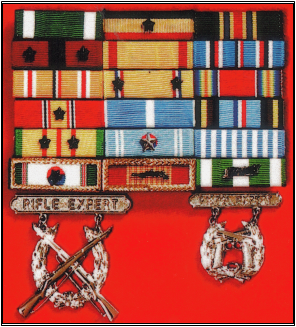
|
|
|
|
|
|
|
|
|
|
|
|
|
|
|
|
|
|
|
|
|
|
|
|
|
|
|
|
|
|
|
|
|
|
|
|
|
|
|
|
|
|
|
|
|
|
|
|
|
|
|
|
|
|
|
|
|
|
|
|
|
|
|
|
|
|
|
|
|
|
|
|
|
|
|
|
|
|
|
|
|
|
|
|
|
|
|
|
|
|
|
|
|
|
|
|
|
|
|
|
|
|
|
|
|
|
|
|
|
|
|
|
|
|
|
|
|
|
|
|
|
|
|
|
|
|
|
|
|
|
|
|
|
|
|
|
|
|
|
|
|
|
|
|
|
|
|
|
|
|
|
|
|
|
|
|
|
|
|
|
|
|
|
|
|
|
|
|
|
|
|
|
|
|
|
|
|
|
|
|
|
|
|
|
|
|
|
|
|
|
|
|
|
|
|
|
|
|
|
|
|
|
|
|
|
|
|
|
|
|
|
|
|
|
|
|
|
|
|
|
| BRAVO ZULU,
Elwin Hart |
|
|
|
|
|
|
|
|
|
|
| For a
distinguished Marine Corps career between 1941 and 1974 |
|
|
|
|
|
|
|
|
|
|
| and
more! |
|
|
|
|
|
|
|
|
|
|
|
|
|
|
|
|
|
|
|
|
|
|
|
|
|
|
|
|
|
|
|
|
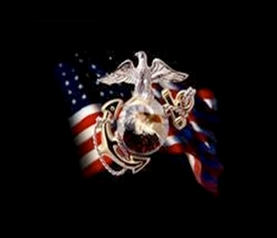
|
|
|
|
|
|
|
|
|
|
|
|
|
|
|
|
|
|
|
|
|
|
|
|
|
|
|
|
|
|
|
|
|
|
|
|
|
|
|
|
|
|
|
|
|
|
|
|
|
|
|
|
|
|
|
|
|
|
|
|
|
|
|
|
|
|
|
|
|
|
|
|
|
|
|
|
|
|
|
|
|
|
|
|
|
|
|
|
|
|
|
|
|
|
|
|
|
|
|
|
|
|
|
|
|
|
|
|
|
|
|
|
|
|
|
|
|
|
|
|
|
|
|
|
|
|
|
|
|
|
|
|
|
|
|
|
|
|
|
|
|
|
|
|
|
|
|
|
|
|
|
|
|
|
| Thank
you for the opportunity to present this tribute to you, Colonel. |
|
|
|
|
|
|
|
|
|
|
|
|
|
|
|
|
|
|
|
|
|
| SEMPER FI,
ELWIN! |
|
|
|
|
|
|
|
|
|
|
|
|
|
|
|
|
|
|
|
|
|
|
|
|
|
|
|
|
|
|
|
|
| Received
12 December 2012; finished 11 October 2013; updated 28 November 2013 and 30
December 2013. |
|
|
|
|
|
|
|
|
|
|
|
|
|
|
|
|
|
|
|
|
|
| Return to ROSTER |
|
|
|
|
|
|
|
|
|
|
|
|
|
|
|
|
|
|
|
|
|
|
|
|
|
|
|
|
|
|
|
|
|
|
|
|
|
|
|
|
|
|
|
|
|
|
|
|
|
|
|
|
|
|
|
|
|
|
|
|
|
|
|
|
|
|
|
|
|
|
|
|
|
|
|
|
|
|
|
|
|
|
|
|
|
|
|
|
|
|
|
|
|
|
|
|
|
|
|
|
|
|
|
|
|
|
|
|
|
|
|
|
|
|
|
|
|
|
|
|
|
|
|
|
|
|
|
|
|
|
|
|
|
|
|
|
|
|
|
|
|
|
|
|
|
|
|
|
|
|
|
|
|
|
|
|
|
|
|
|
|
|
|
|
|
|
|
|
|
|
|
|
|
|
|
|
|
|
|
|
|
|
|
|
|
|
|
|
|
|
|
|
|
|
|
|
|
|
|
|
|
|
|
|
|
|
|
|
|
|
|
|
|
|
|
|
|
|
|
|
|
|
|
|
|
|
|
|
|
|
|
|
|
|
|
|
|
|
|
|
|
|
|
|
|
|
|
|
|
|
|
|
|
|
|
|
|
|
|
|
|
|
|
|
|
|
|
|
|
|
|
|
|
|
|
|
|
|
|
|
|
|
|
|
|
|
|
|
|
|
|
|
|
|
|
|
|
|
|
|
|
|
|
|
|
|
|
|
|
|
|
|
|
|
|
|
|
|
|
|
|
|
|
|
|
|
|
|
|
|
|
|
|
|
|
|
|
|
|
|
|
|
|
|
|
|
|
|
|
|
|
|
|
|
|
|
|
|
|
|
|
|
|
|
|
|
|
|
|
|
|
|
|
|
|
|
|
|
|
|
|
|
|
|
|
|
|
|
|
|
|
|
|
|
|
|
|
|
|
|
|
|
|
|
|
|
|
|
|
|
|
|
|
|
|
|
|
|
|
|
|
|
|
|
|
|
|
|
|
|
|
|
|
|
|
|
|
|
|
|
|
|
|
|
|
|
|
|
|
|
|
|
|
|
|
|
|
|
|
|
|
|
|
|
|
|
|
|
|
|
|
|
|
|
|
|
|
|
|
|
|
|
|
|
|
|
|
|
|
|
|
|
|
|
|
|
|
|
|
|
|
|
|
|
|
|
|
|
|
|
|
|
|
|
|
|
|
|
|
|
|
|
|
|
|
|
|
|
|
|
|
|
|
|
|
|
|
|
|
|
|
|
|
|
|
|
|
|
|
|
|
|
|
|
|
|
|
|
|
|
|
|
|
|
|
|
|
|
|
|
|
|
|
|
|
|
|
|
|
|
|
|
|
|
|
|
|
|
|
|
|
|
|
|
|
|
|
|
|
|
|
|
|
|
|
|
|
|
|
|
|
|
|
|
|
|
|
|
|
|
|
|
|
|
|
|
|
|
|
|
|
|
|
|
|
|
|
|
|
|
|
|
|
|
|
|
|
|
|
|
|
|
|
|
|
|
|
|
|
|
|
|
|
|
|
|
|
|
|
|
|
|
|
|
|
|
|
|
|
|
|
|
|
|
|
|
|
|
|
|
|
|
|
|
|
|
|
|
|
|
|
|
|
|
|
|
|
|
|
|
|
|
|
|
|
|
|
|
|
|
|
|
|
|
|
|
|
|
|
|
|
|
|
|
|
|
|
|
|
|
|
|
|
|
|
|
|
|
|
|
|
|
|
|
|
|
|
|
|
|
|
|
|
|
|
|
|
|
|
|
|
|
|
|
|
|
|
|
|
|
|
|
|
|
|
|
|
|
|
|
|
|
|
|
|
|
|
|
|
|
|
|
|
|
|
|
|
|
|
|
|
|
|
|
|
|
|
|
|
|
|
|
|
|
|
|
|
|
|
|
|
|
|
|
|
|
|
|
|
|
|
|
|
|
|
|
|
|
|
|
|
|
|
|
|
|
|
|
|
|
|
|
|
|
|
|
|
|
|
|
|
|
|
|
|
|
|
|
|
|
|
|
|
|
|
|
|
|
|
|
|
|
|
|
|
|
|
|
|
|
|
|
|
|
|
|
|
|
|
|
|
|
|
|
|
|
|
|
|
|
|
|
|
|
|
|
|
|
|
|
|
|
|
|
|
|
|
|
|
|
|
|
|
|
|
|
|
|
|
|
|
|
|
|
|
|
|
|
|
|
|
|
|
|
|
|
|
|
|
|
|
|
|
|
|
|
|
|
|
|
|
|
|
|
|
|
|
|
|
|
|
|
|
|
|
|
|
|
|
|
|
|
|
|
|
|
|
|
|
|
|
|
|
|
|
|
|
|
|
|
|
|
|
|
|
|
|
|
|
|
|
|
|
|
|
|
|
|
|
|
|
|
|
|
|
|
|
|
|
|
|
|
|
|
|
|
|
|
|
|
|
|
|
|
|
|
|
|
|
|
|
|
|
|
|
|
|
|
|
|
|
|
|
|
|
|
|
|
|
|
|
|
|
|
|
|
|
|
|
|
|
|
|
|
|
|
|
|
|
|
|
|
|
|
|
|
|
|
|
|
|
|
|
|
|
|
|
|
|
|
|
|
|
|
|
|
|
|
|
|
|
|
|
|
|
|
|
|
|
|
|
|
|
|
|
|
|
|
|
|
|
|
|
|
|
|
|
|
|
|
|
|
|
|
|
|
|
|
|
|
|
|
|
|
|
|
|
|
|
|
|
|
|
|
|
|
|
|
|
|
|
|
|
|
|
|
|
|
|
|
|
|
|
|
|
|
|
|
|
|
|
|
|
|
|
|
|
|
|
|
|
|
|
|
|
|
|
|
|
|
|
|
|
|
|
|
|
|
|
|
|
|
|
|
|
|
|
|
|
|
|
|
|
|
|
|
|
|
|
|
|
|
|
|
|
|
|
|
|
|
|
|
|
|
|
|
|
|
|
|
|
|
|
|
|
|
|

